HOSTED BY: 1 AIR TRAVEL
[circuit type=review circuit_id=”20420173550″]
Editor’s note: Hoshinoya Tokyo provided TPG with a complimentary two-night stay so that we could get an inside look at the hotel and its amenities. The opinions expressed below are entirely those of the author and weren’t subject to review by the hotel or any external entity.
In the vast, modern megalopolis of Tokyo, with its skyscraper-strewn cityscape stretching to the horizon, it can feel like a challenge to find pockets of traditional Japanese hospitality and culture.
But that’s exactly why a stay at Hoshinoya Tokyo feels so special. The hotel blends the pared-down aesthetics of a contemporary luxury hotel with the time-honored service and sophistication of a ryokan, or traditional Japanese inn.
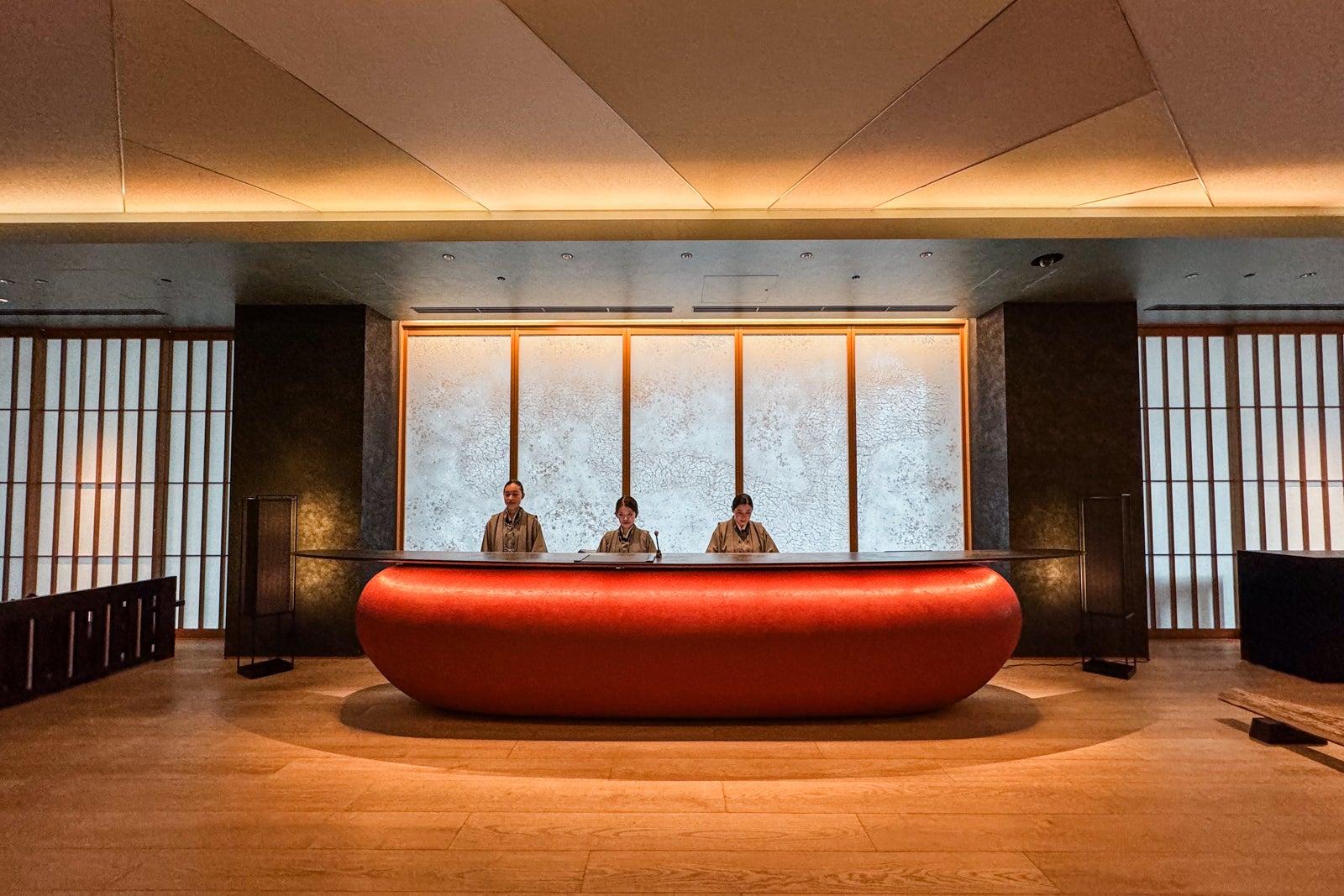
ERIC ROSEN/THE POINTS GUY
Each guest floor has just six accommodations surrounding an ochanoma, or central lounge, where travelers are invited to relax, have tea, coffee and snacks and peruse books on art, nature and travel … between visits to the open-air rooftop onsen (bathing facility), which is fed by mineral-rich waters pumped from 1,500 meters (4,900 feet) underground.
Even the hotel’s futuristic hallmarks, like its ornate metal-lattice facade and the sculptural stone elements in its subterranean restaurant, are nods to Japanese crafts and history – traditional kimono designs in the case of the former, and the foundational structure of Edo Castle in the latter.
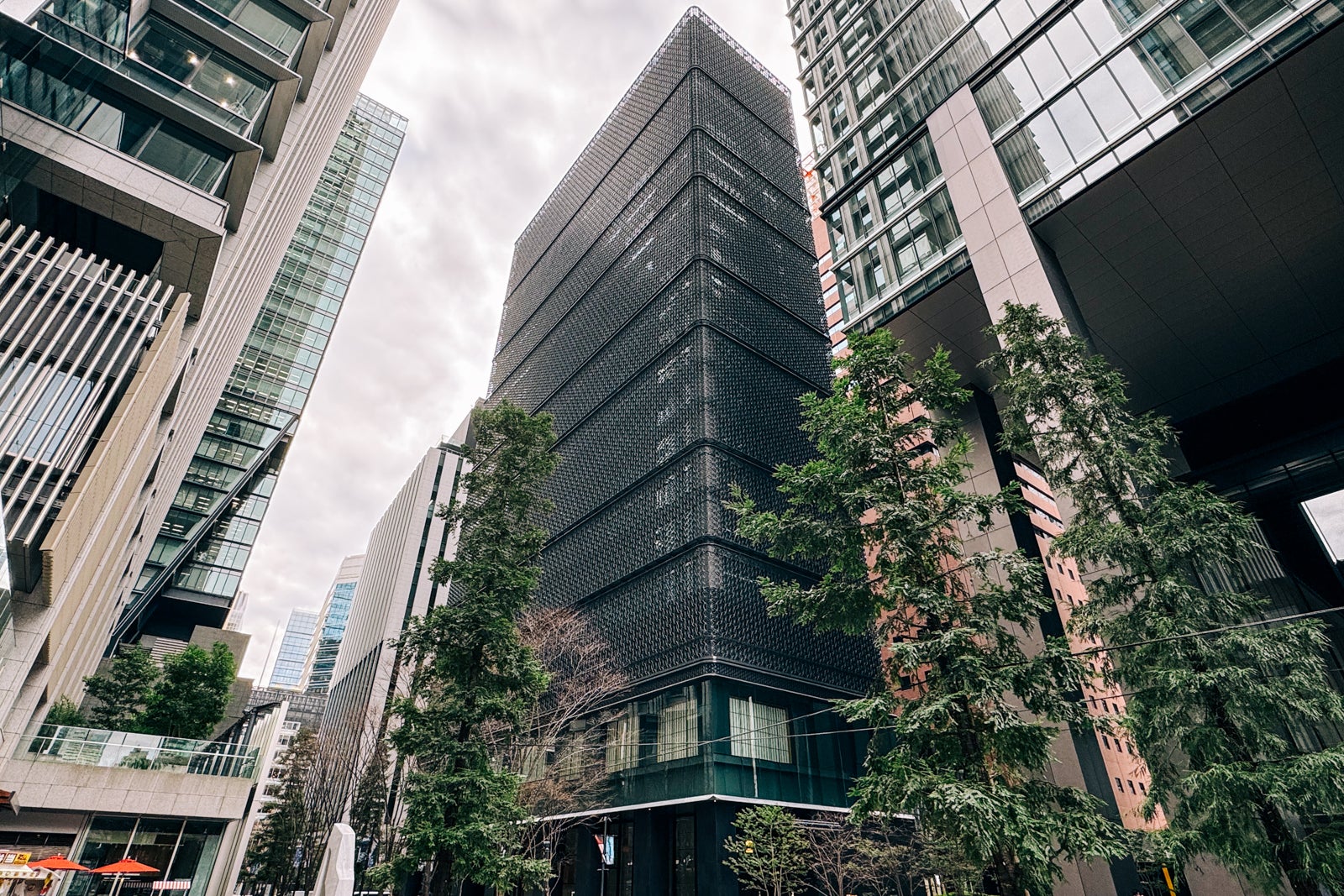
ERIC ROSEN/THE POINTS GUY
While here, guests can also take advantage of activities ranging from evening sake tastings and gagaku classical music performances to incense appreciation sessions and intricate tea ceremonies. That makes the experience feel like an upscale encapsulation of a grand tour of Japan’s profound cultural legacy so that even a short visit to Tokyo is an enriching experience.
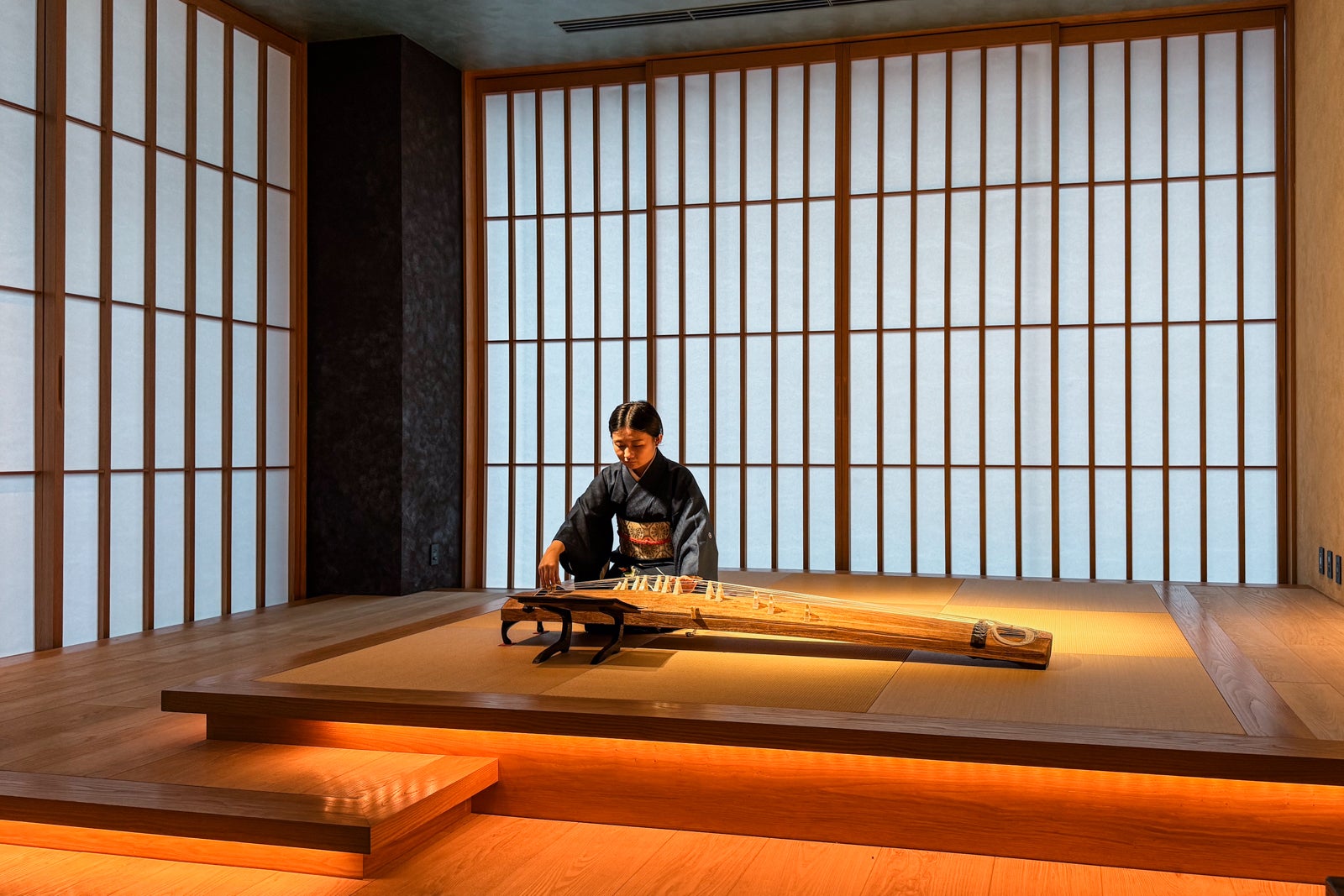
ERIC ROSEN/THE POINTS GUY
Here’s what you should know about staying at Hoshinoya Tokyo, one of the Japanese capital’s finest luxury hotels
Getting there
Hoshinoya Tokyo is in Chiyoda, near the Imperial Palace. The district is filled with hulking office towers and business people bustling about their day-to-day. But underneath this hive of activity are arcades filled with cafes, restaurants and shops, especially attached to Otemachi Station, which is the nexus of several subway lines.
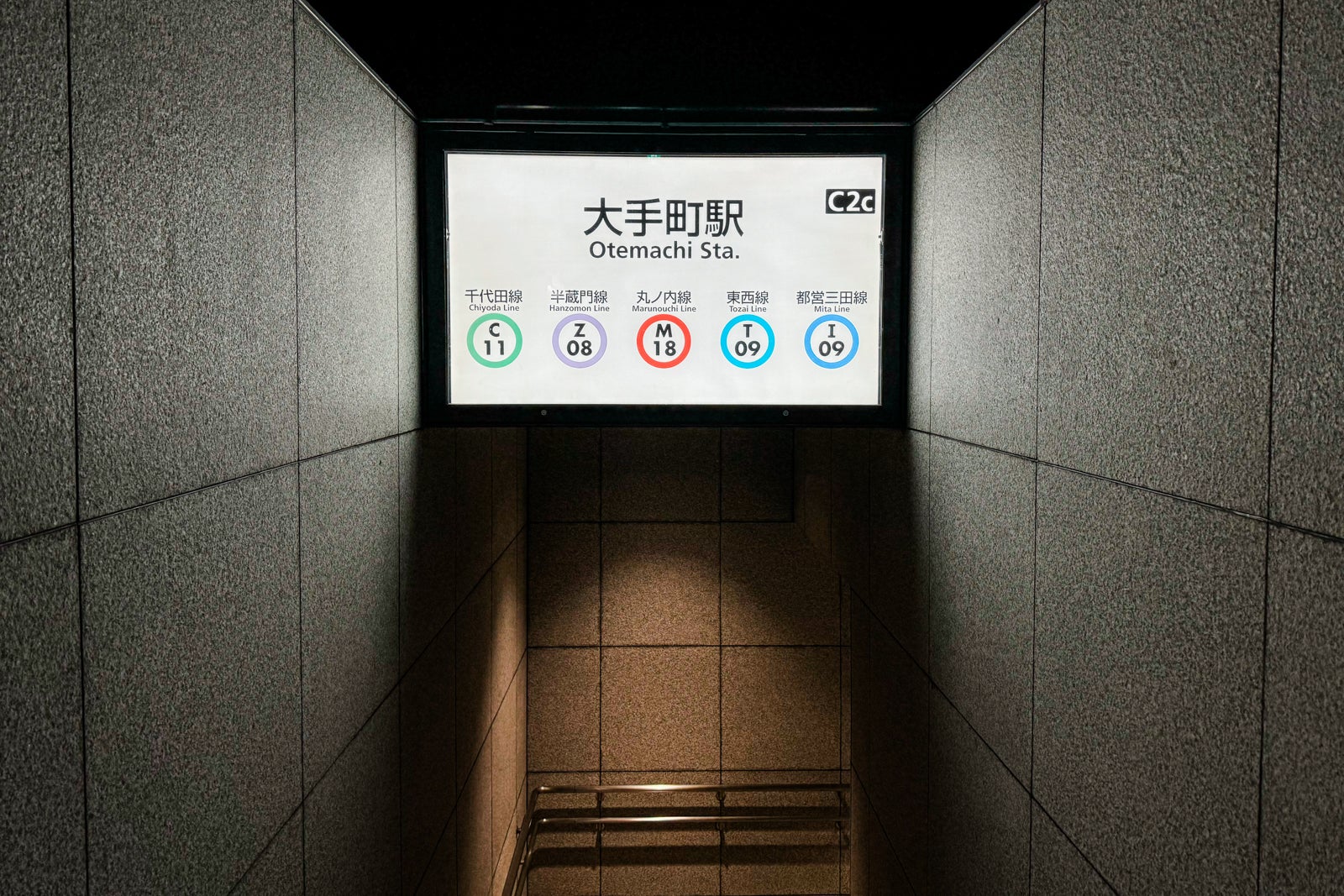
ERIC ROSEN/THE POINTS GUY
Those flying into or out of Haneda Airport (HND) can get to or from the hotel via taxi or ride-hailing service for $55-$80. It takes around 30-60 minutes depending on traffic. Simply taking the subway can take around an hour and requires a change of line, but costs a mere 550 Japanese yen ($3.70).
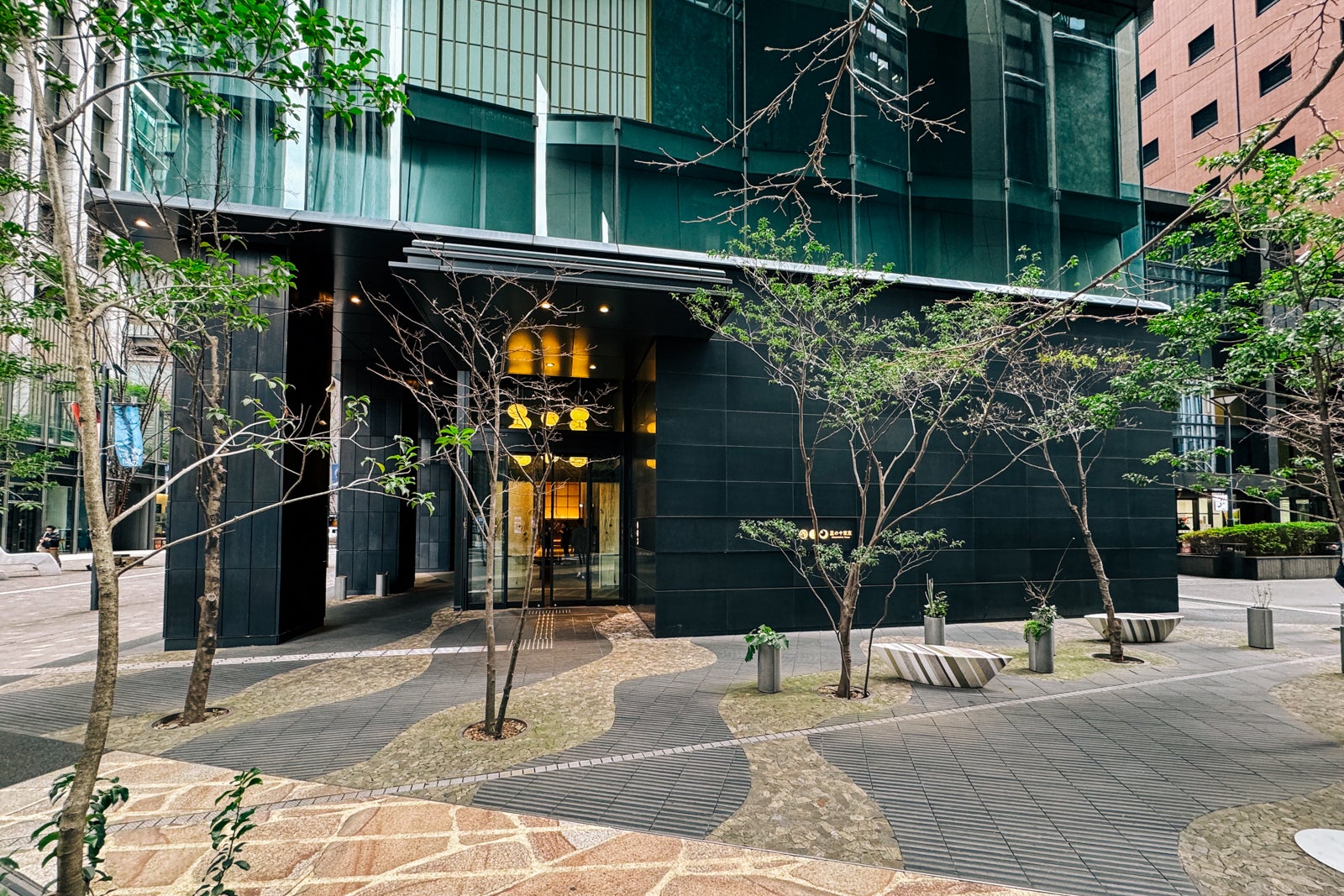
ERIC ROSEN/THE POINTS GUY
If your flight has you transiting Narita International Airport (NRT), expect a drive of one-two hours costing up to $200 in a taxi or ride-hailing service. The Narita Express train to Tokyo Station costs 3,700 yen per person ($24.70) each way, though round-trip options can be cheaper, and you can hop the subway to Otemachi station from there.
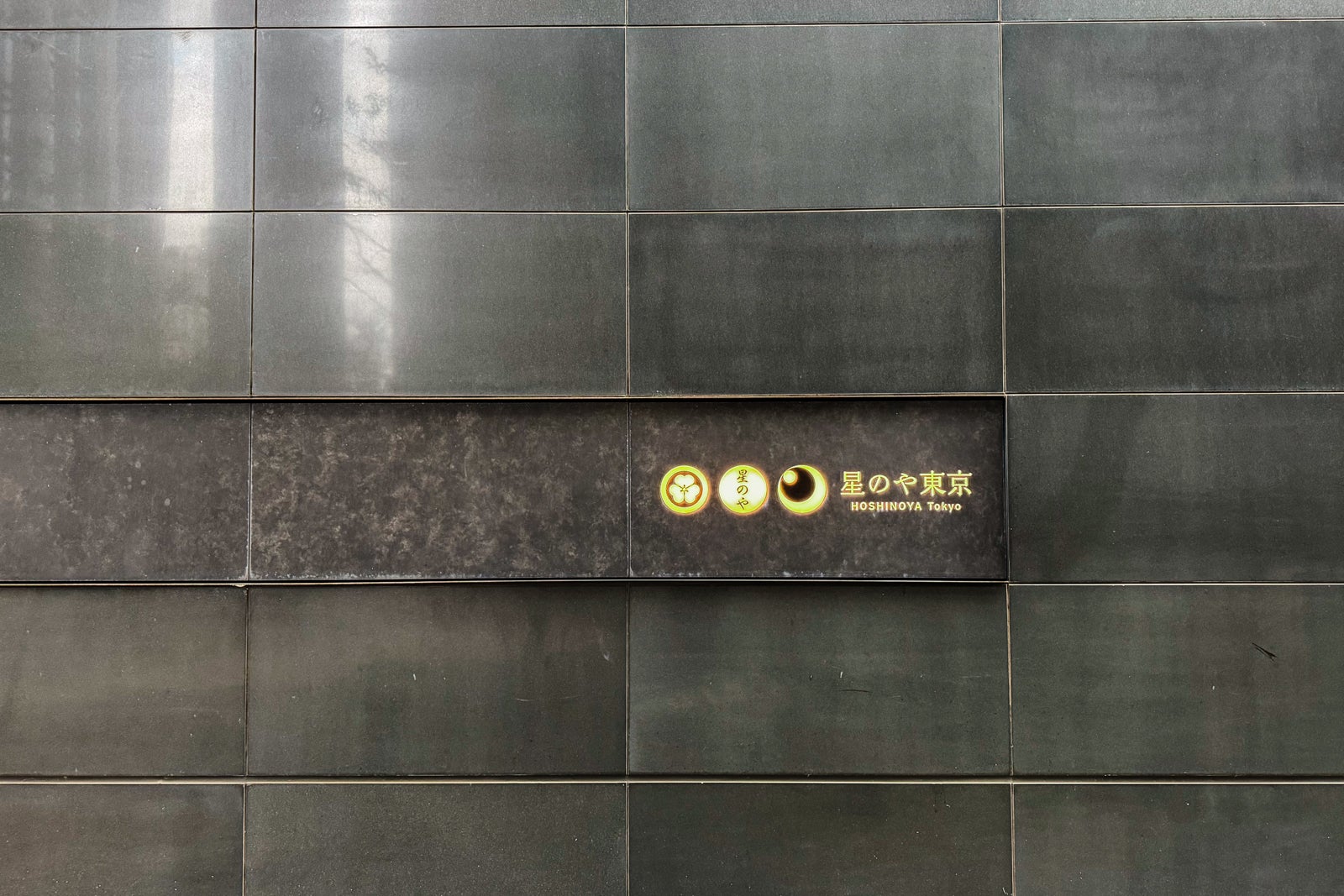
ERIC ROSEN/THE POINTS GUY
If you need to get to Tokyo Station for the Shinkansen (bullet train) to other destinations in the country, it’s just one stop away on the Marunouchi subway line (180 yen, or around $1.20), or about a 10-minute, $10 taxi or ride-hailing drive away.
Booking details
Hoshinoya Tokyo has just 84 rooms and suites, which are spread across 14 floors with just six accommodations apiece.
The are three categories of quarters: Yuri (king) and Sakura (twin) rooms for two guests, which range from 441-527 square feet, and sprawling Kiku rooms that are nearly 900 square feet and can accommodate up to three people.
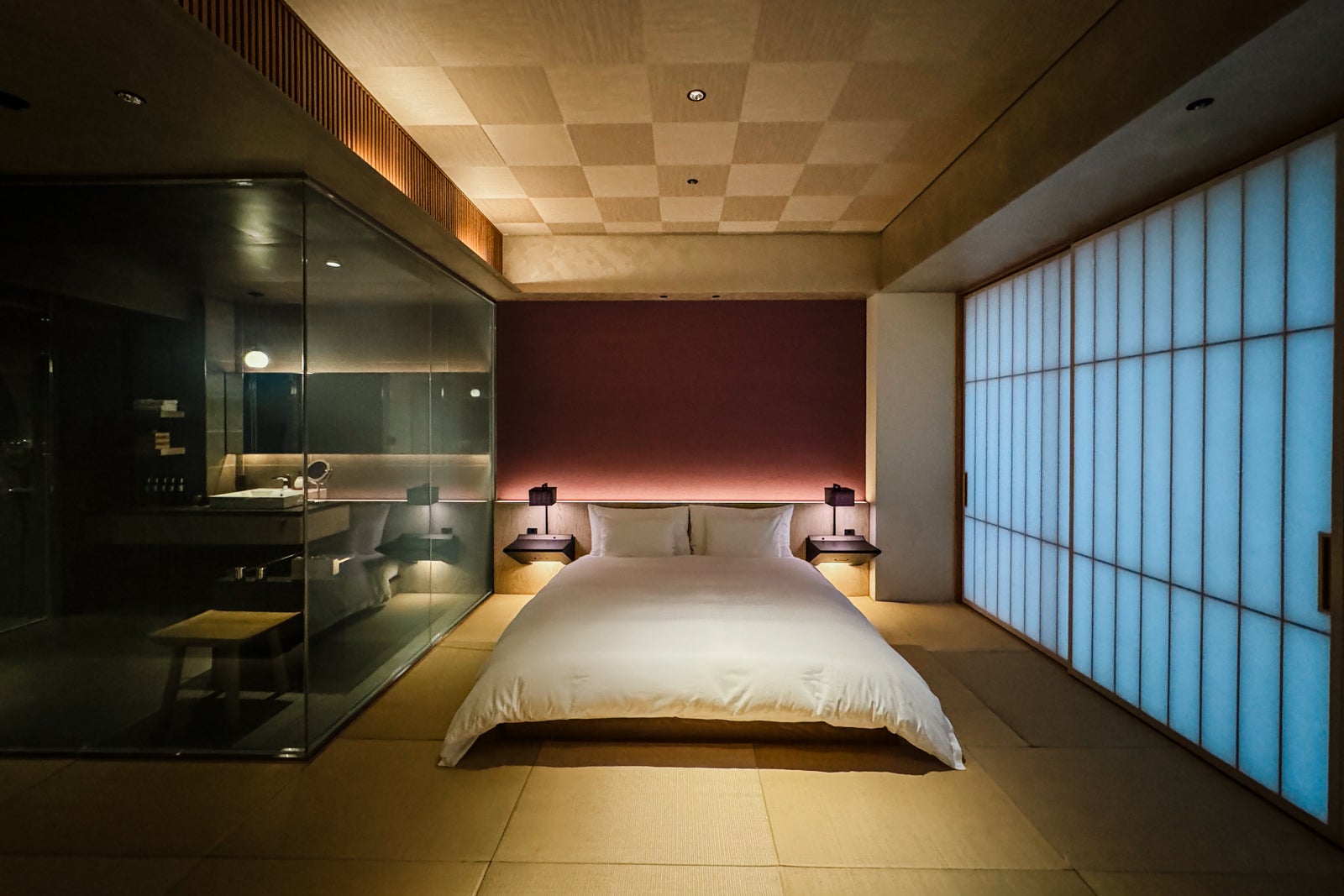
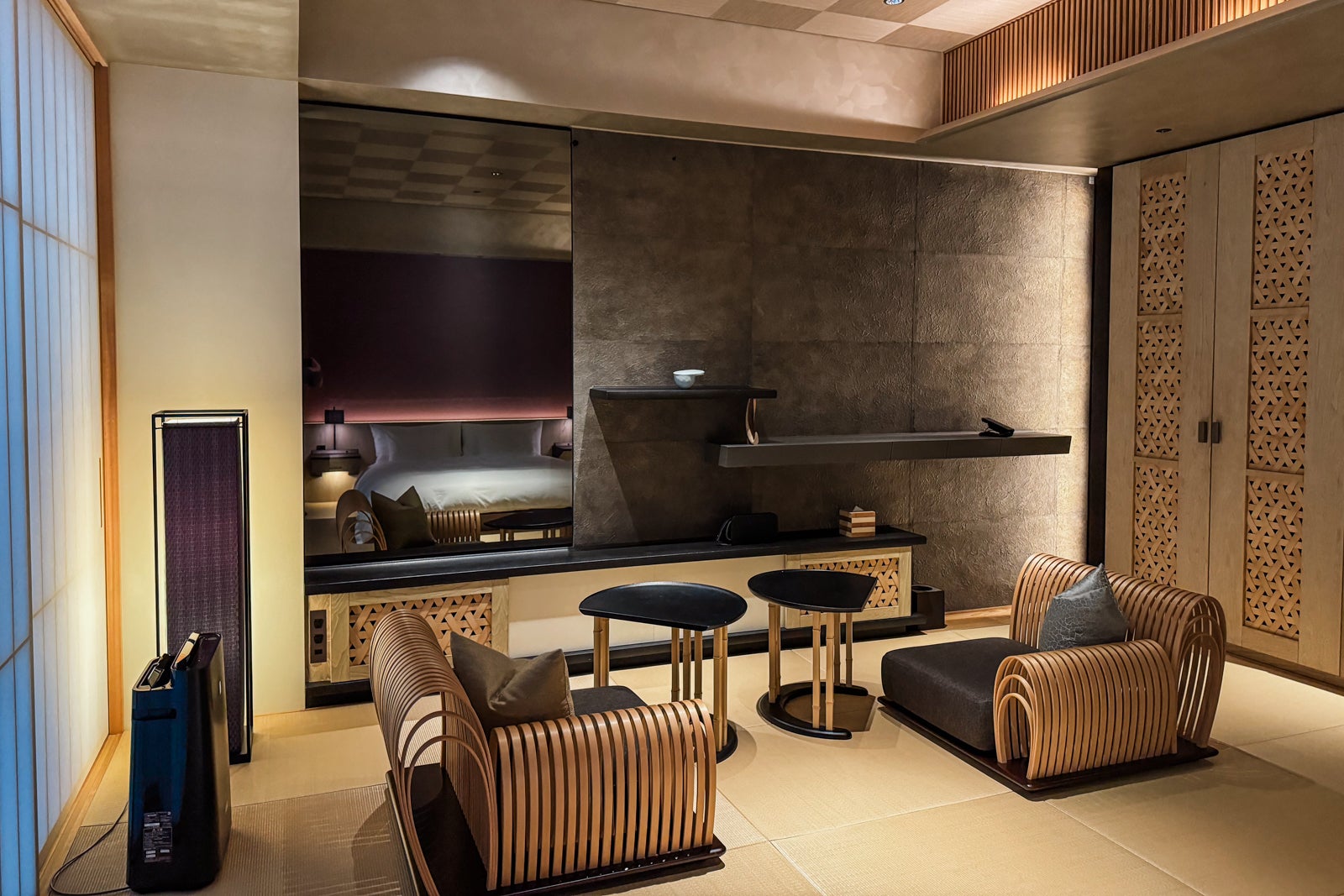
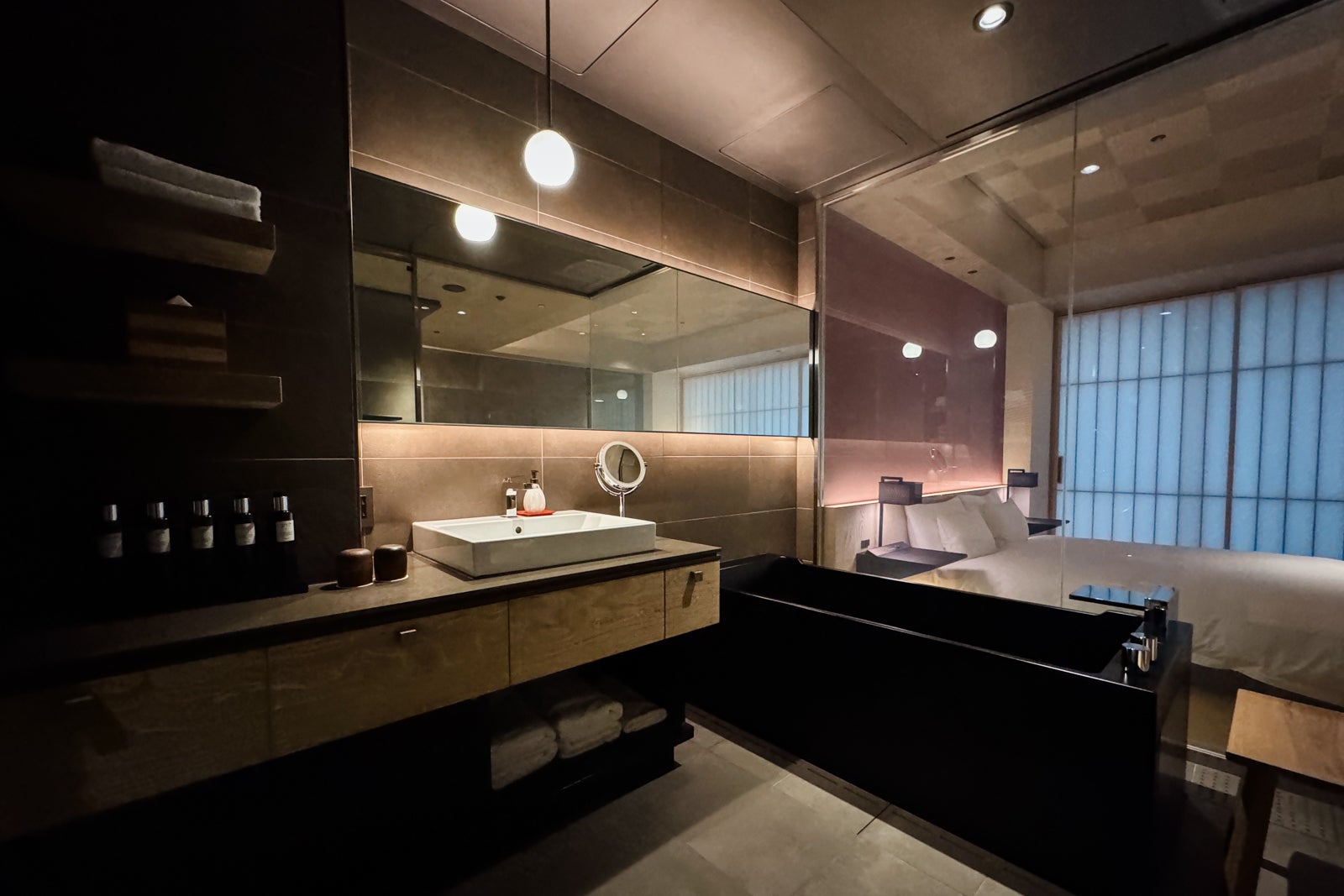
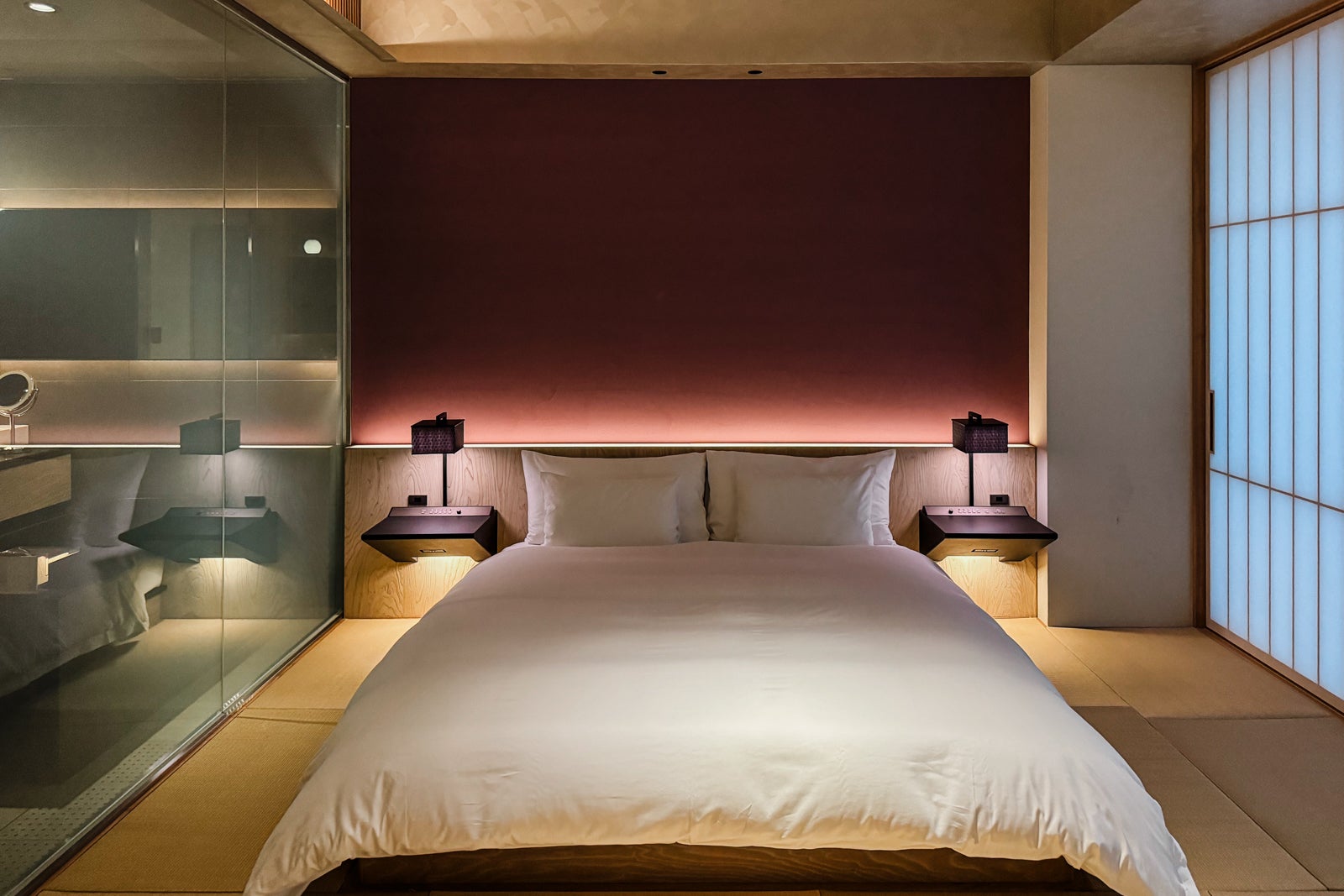
Rates start at around $400 per person per night for Yuri rooms, $550 per person per night for Sakura rooms and $795 per person per night for Kiku rooms, not including meals. Plans that include breakfast and dinner generally cost start at about $500 per person per night.
The best way to book is directly through the hotel or via a travel advisor who might be able to secure extra perks like upgrades or an included activity, meal, or spa service. Unfortunately, the hotel is not part of American Express’ Fine Hotels + Resorts, the Chase Luxury Hotel & Resort Collection or Capital One’s Premier Collection
Standout features
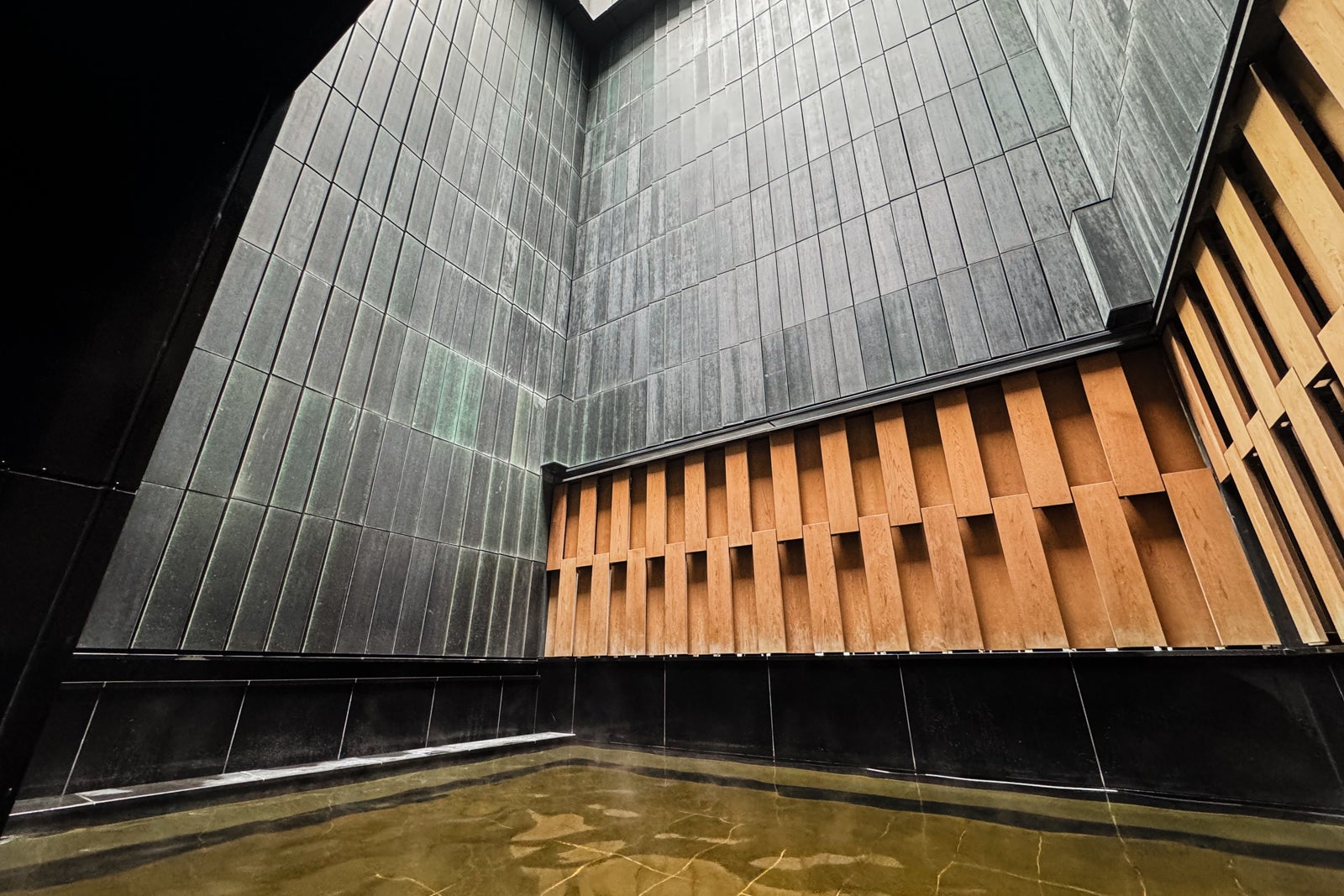
ERIC ROSEN/THE POINTS GUYGorgeous rooms with traditional accouterments like tatami flooring, translucent shoji screens and ofuro-style soaking tubs.Phenomenal cultural programming including rooftop kenjutsu (swordfighting) classes at dawn and evening sake tastings. Dining at Nippon Cuisine is like an exquisite culinary tour through the seasonal bounty of Japan’s various regions.The rooftop onsen whose open-air pool is fed by natural hot springs is not to miss.
Drawbacks
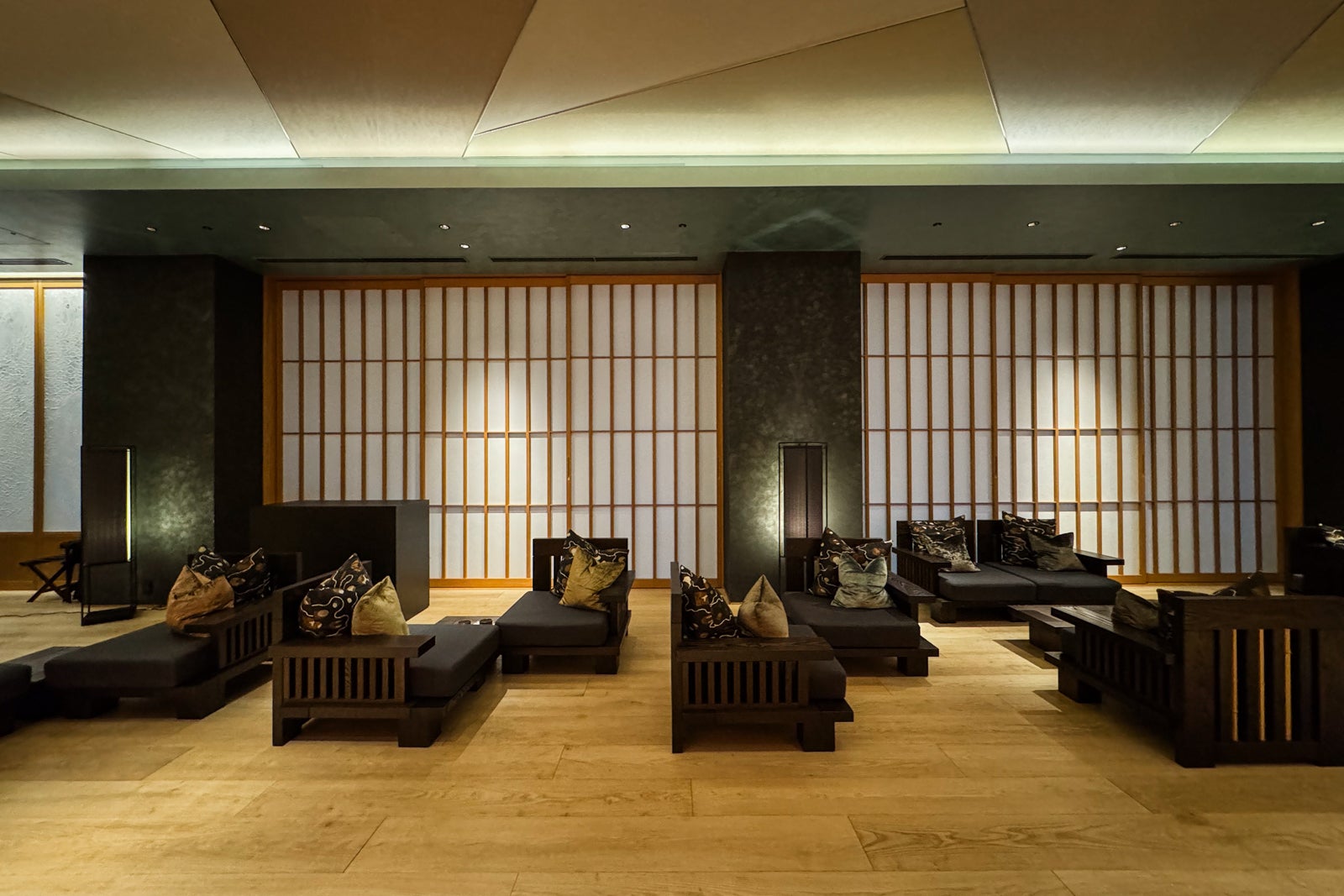
ERIC ROSEN/THE POINTS GUYThe location is central but can feel empty on weekends and evenings since it’s primarily a financial district.Although meant to encourage mingling, the common lounge areas on each floor might feel too intimate for some guests. High nightly rates will preclude most travelers, but if this fits within your budget, Hoshinoya Tokyo is well worth a visit.
The vibe
Like a performance of Noh theater, every aspect of a stay at Hoshinoya Tokyo feels carefully choreographed and symbolically significant … but in a way that remains refined rather than overwhelming.
The edifice’s metal-sheathed facade is intricately patterned to evoke the stylings of an Edo-period kimono. Guests are welcomed through the street-level entrance and invited to remove their shoes, as they would in a Japanese home so that they can be stored in a personalized bamboo locker until your next jaunt out into the city.
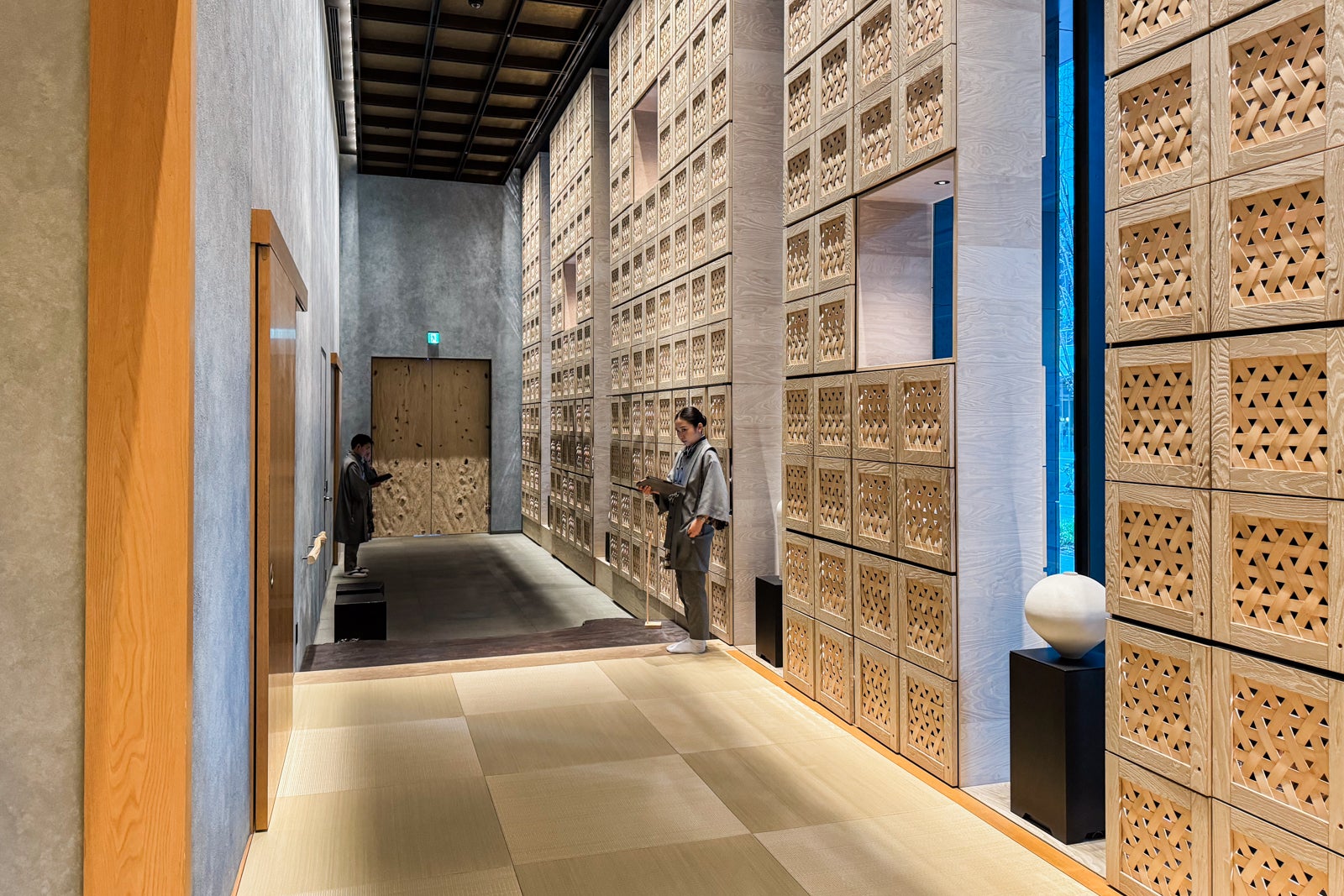
ERIC ROSEN/THE POINTS GUY
No, you’re not hearing things — when they arrive at a floor, the elevators make percussive sounds reminiscent of the hiyoshigi hardwood clappers struck to signal the start of a kabuki play. The experience has begun.
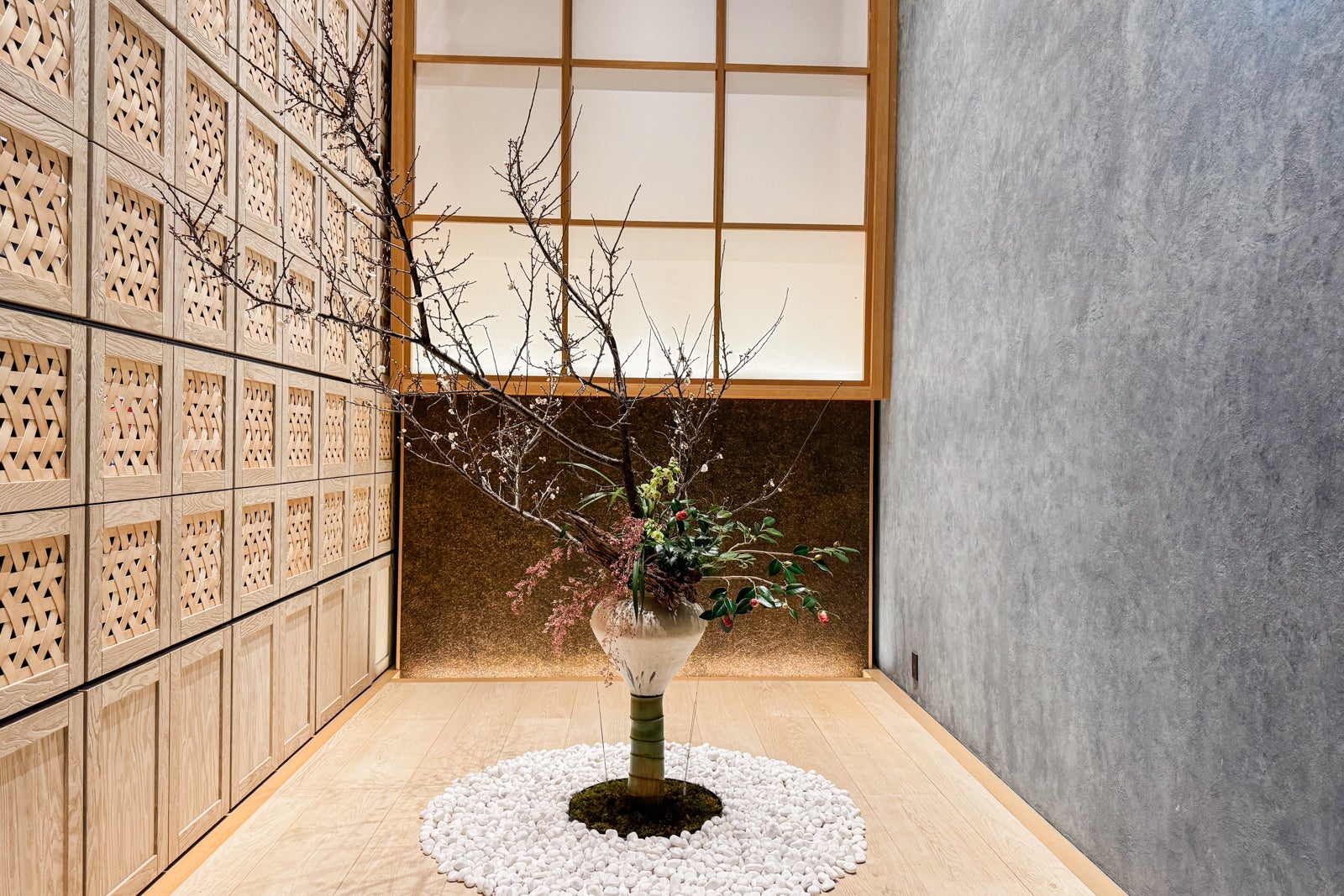
ERIC ROSEN/THE POINTS GUY
Check-in formalities are completed quickly in the third-floor reception area, where you might also spot items for sale, such as branded notebooks, cards and water bottles along with bespoke sake cups and tea sets (so save some room for souvenirs in your luggage).
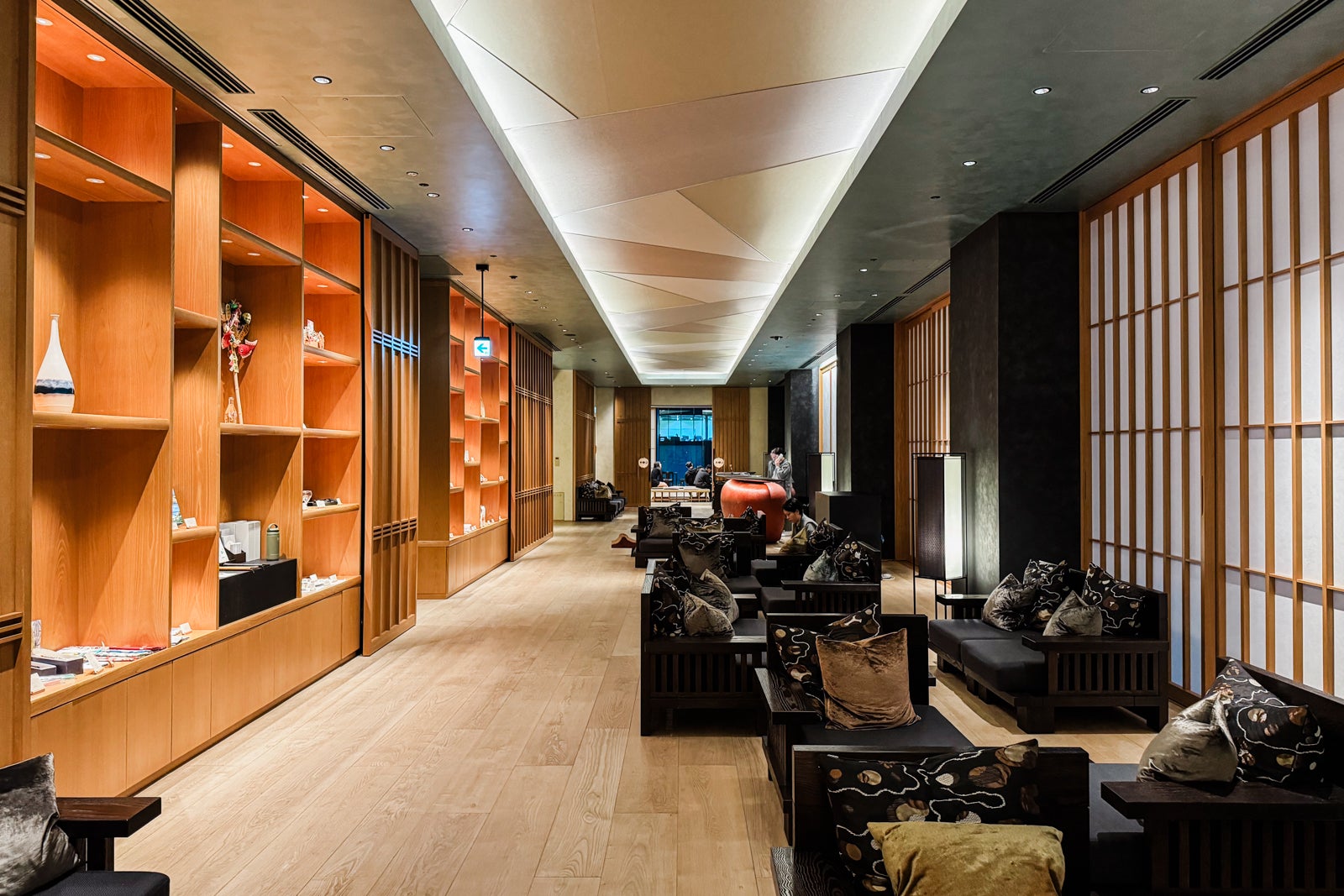
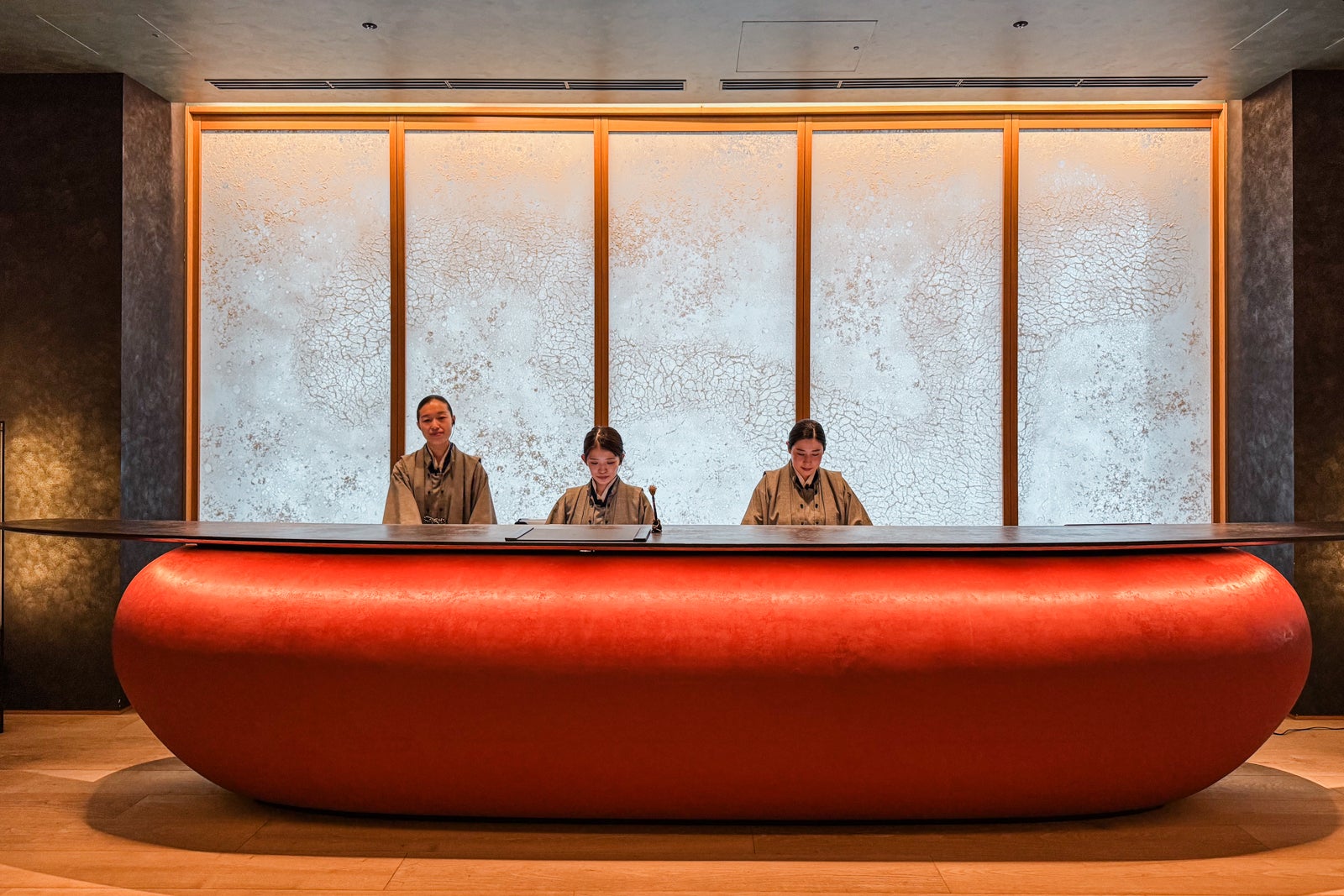
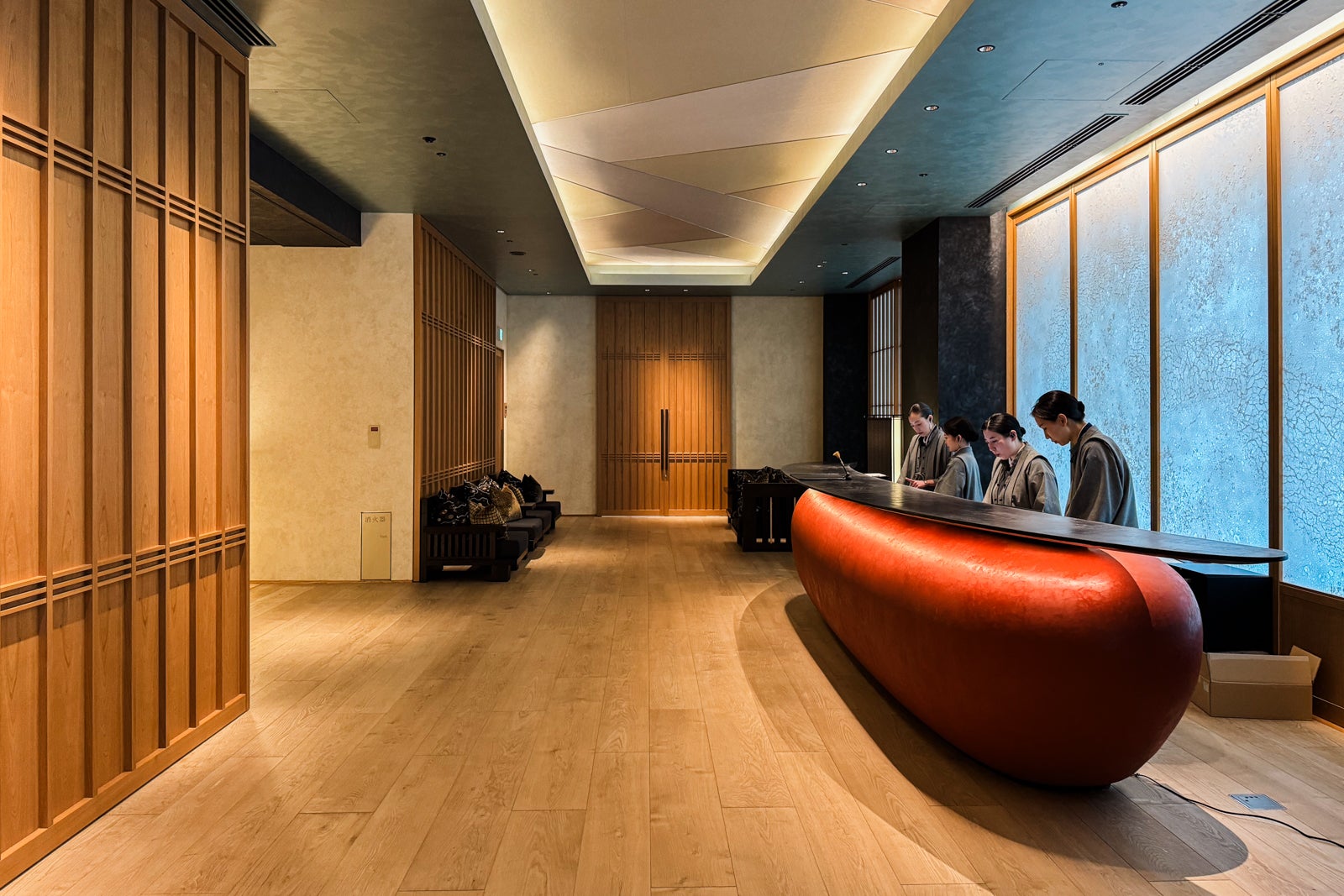
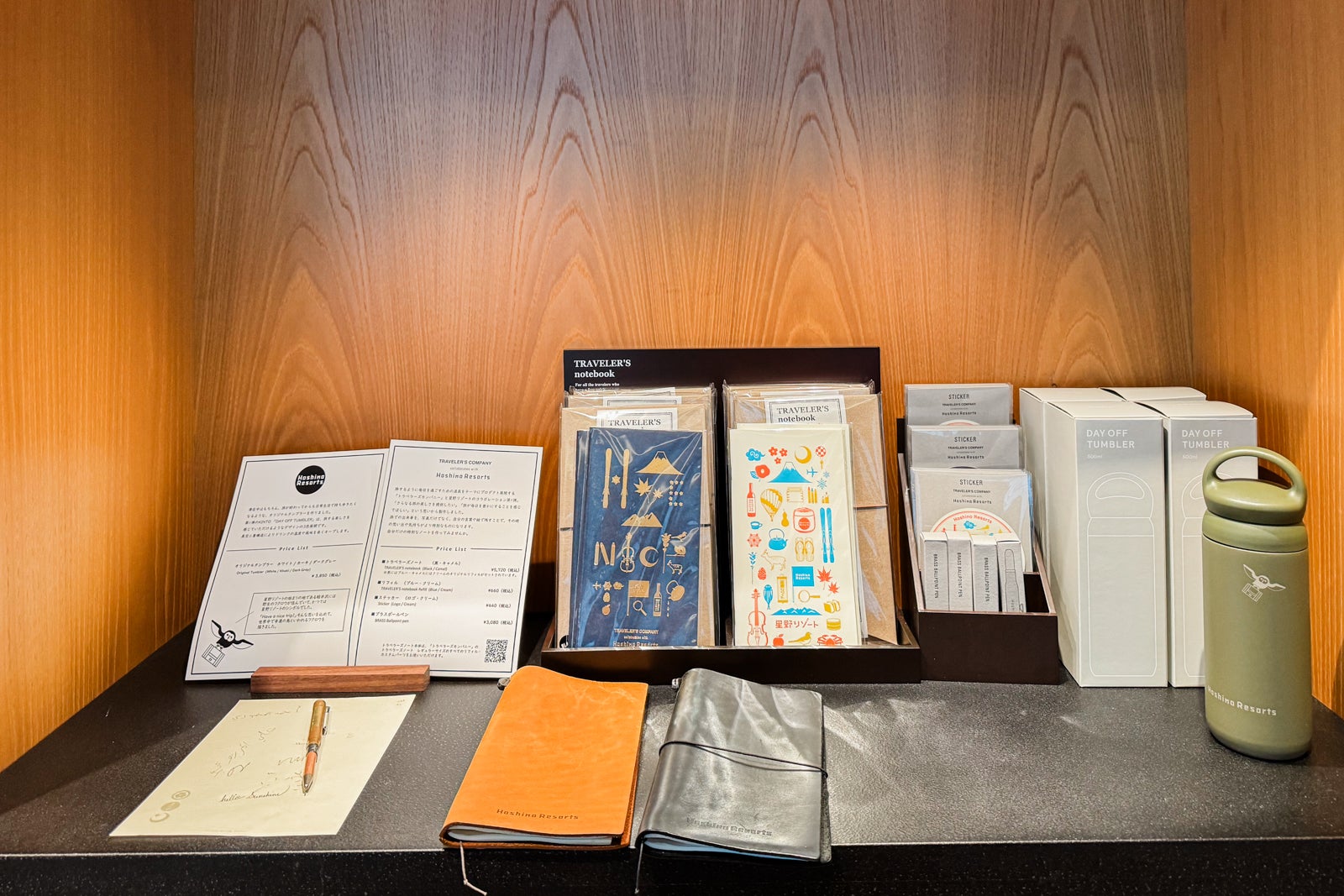
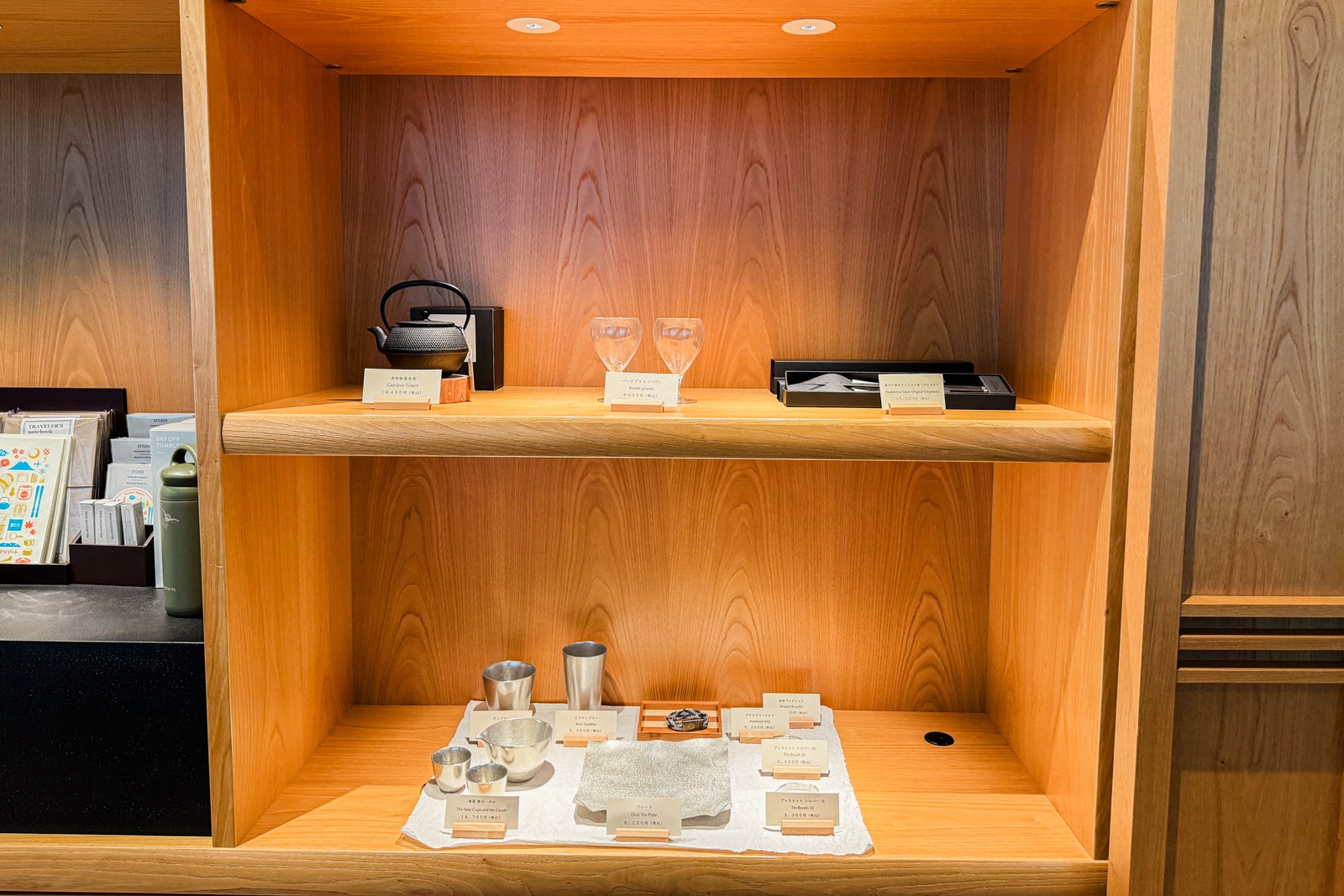
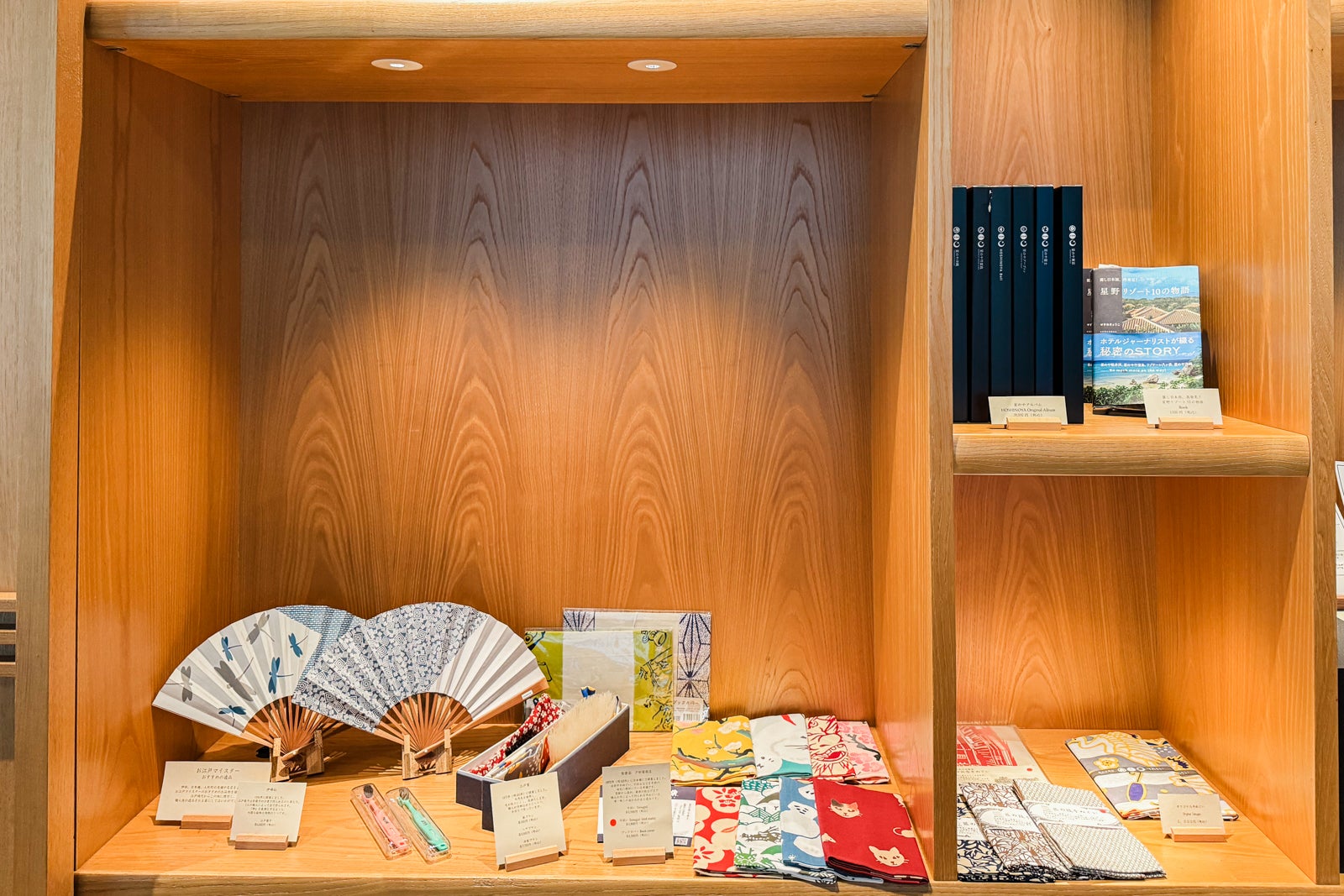
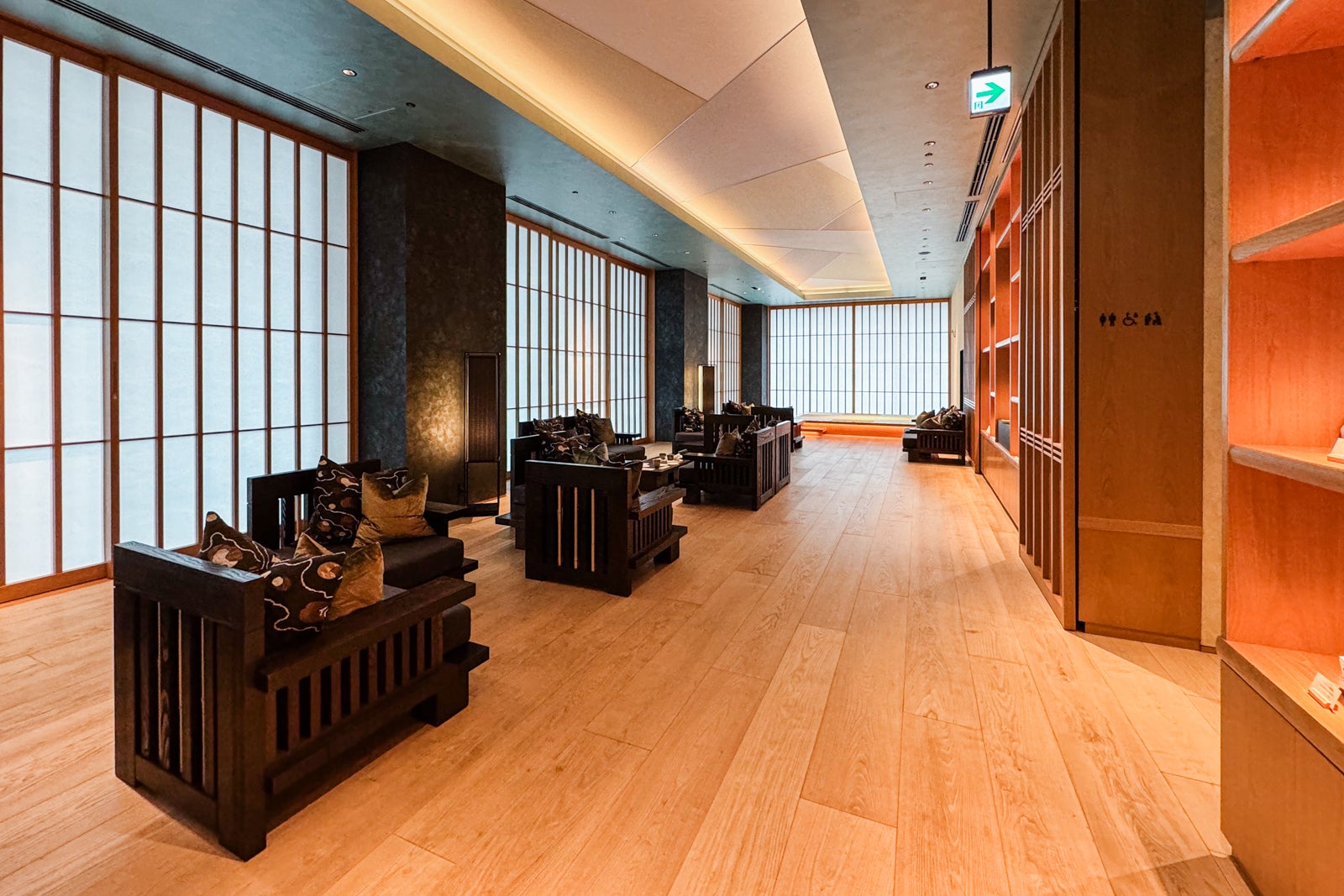
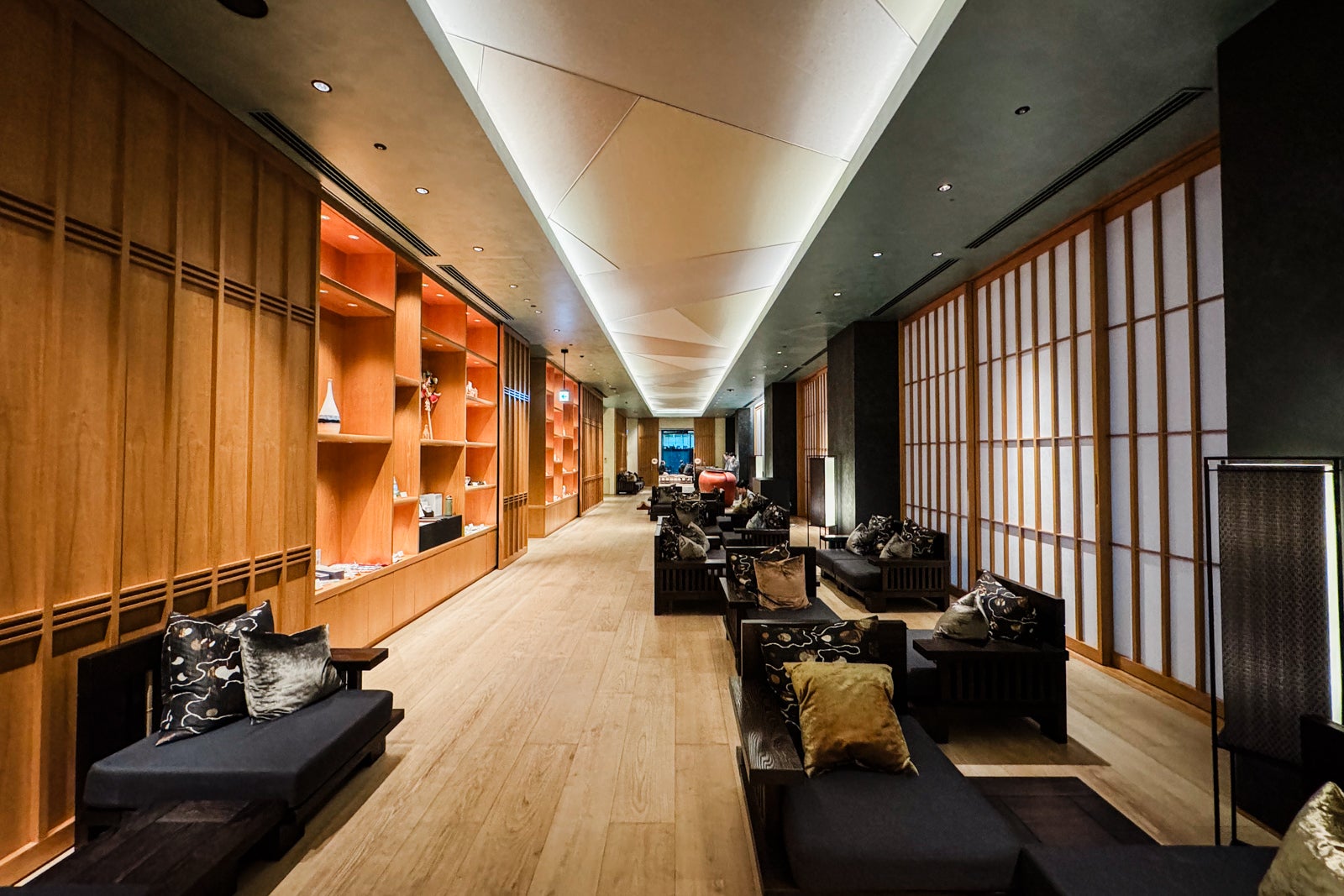
Then you’ll be whisked up directly to your floor for a brief orientation. Each level has a shared guest lounge which is inspired by the public spaces in rural Japanese ryokan and where you can socialize with fellow guests — an even split of international and Japanese visitors — over complimentary beverages and snacks that change throughout the day.
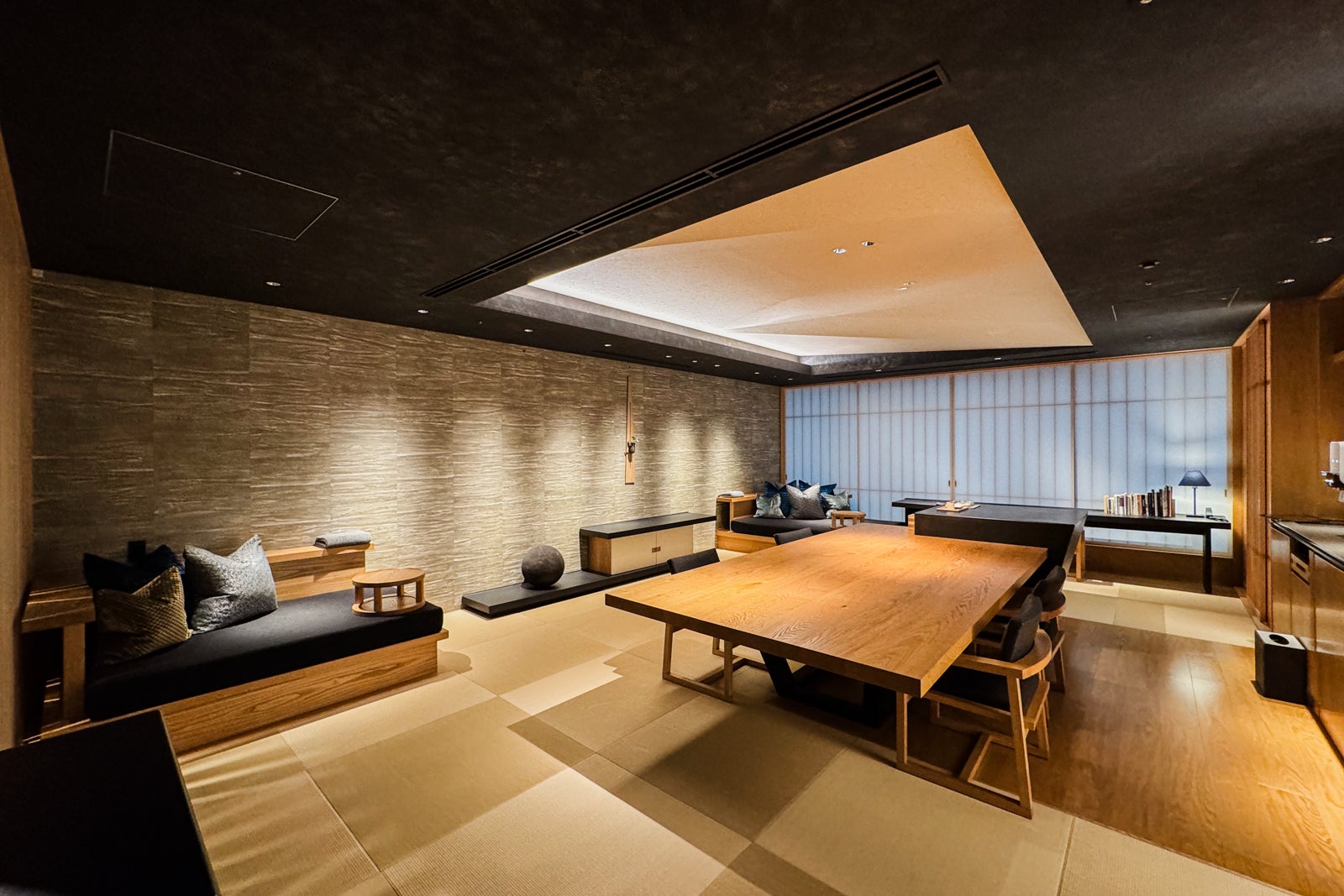
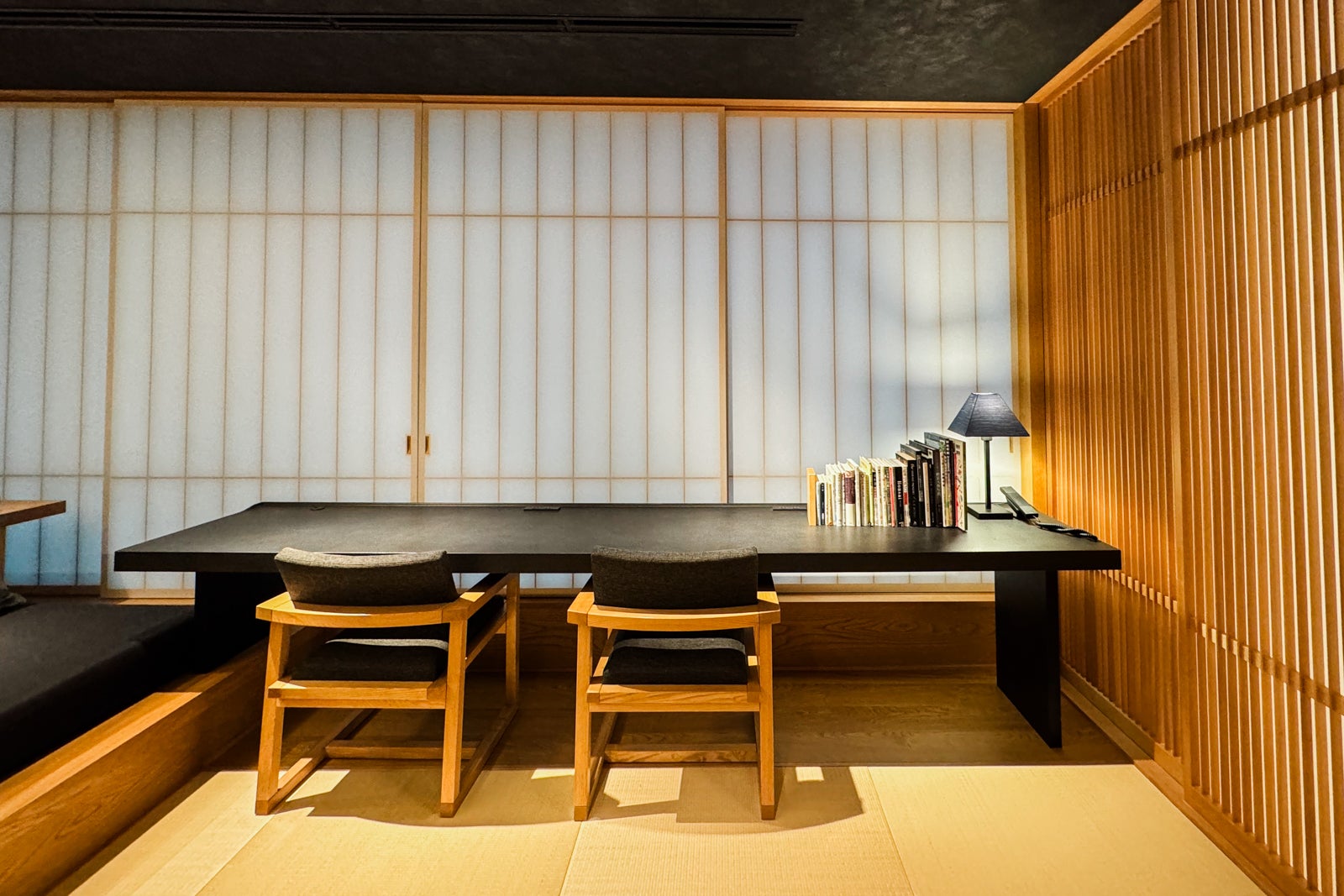
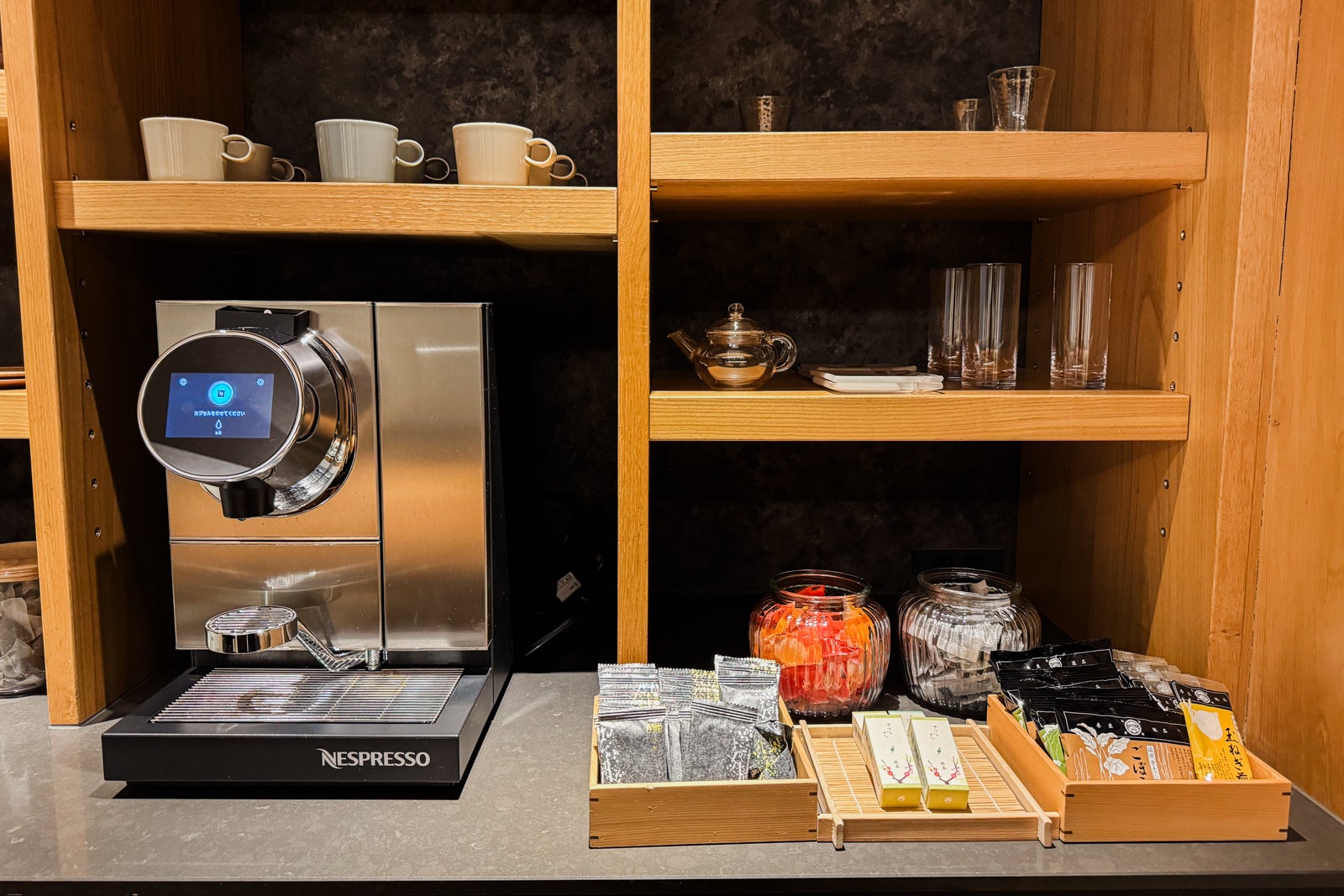
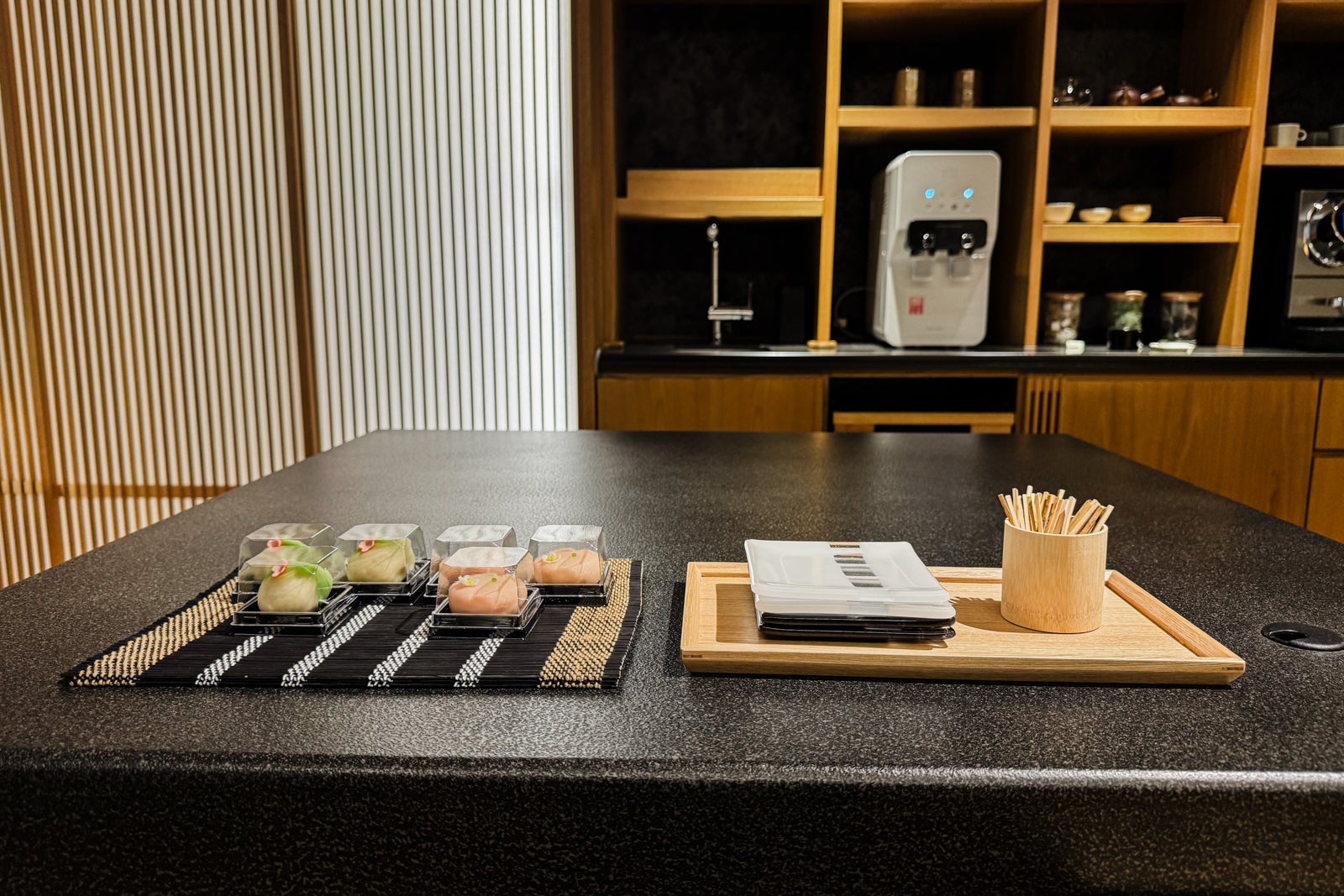
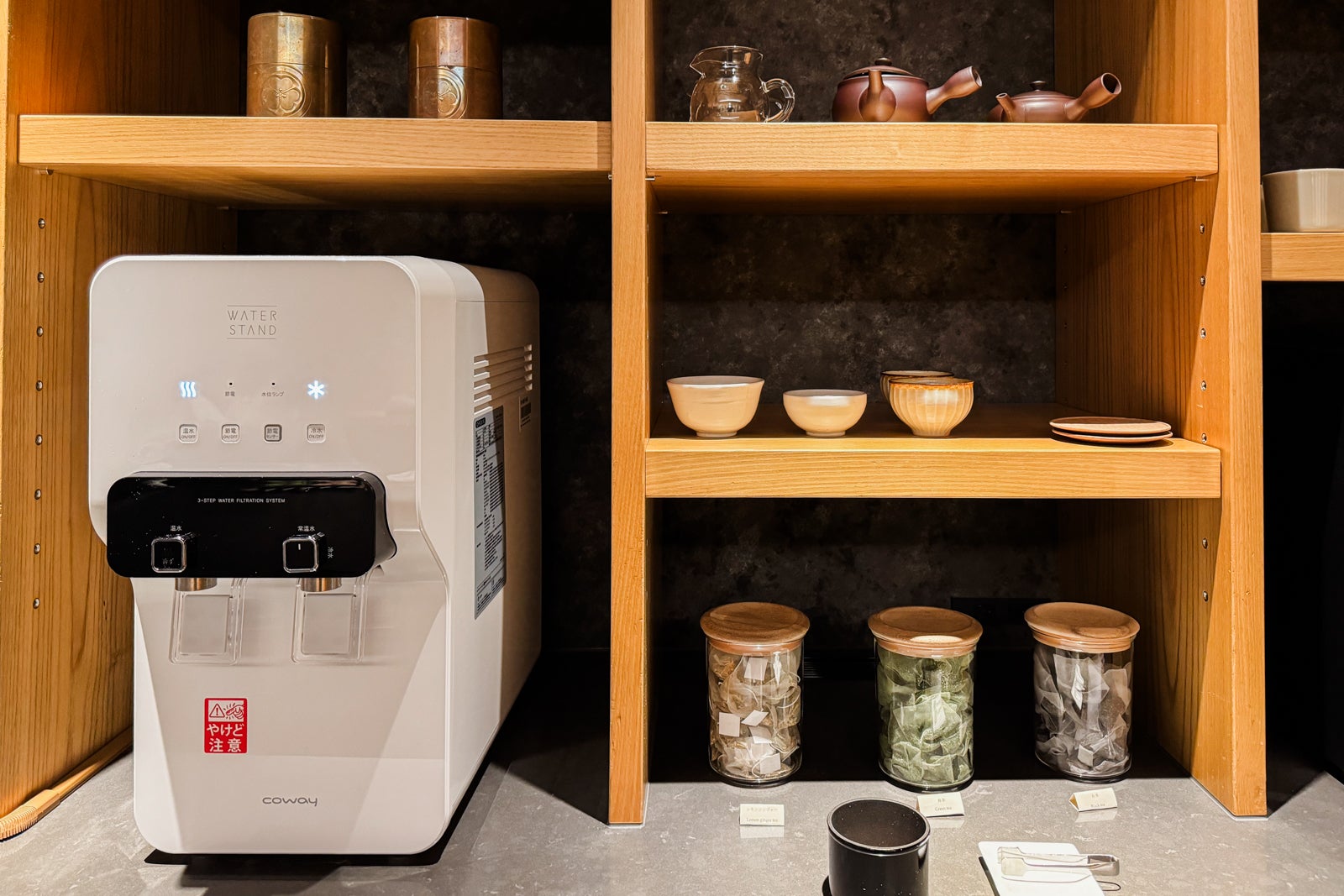
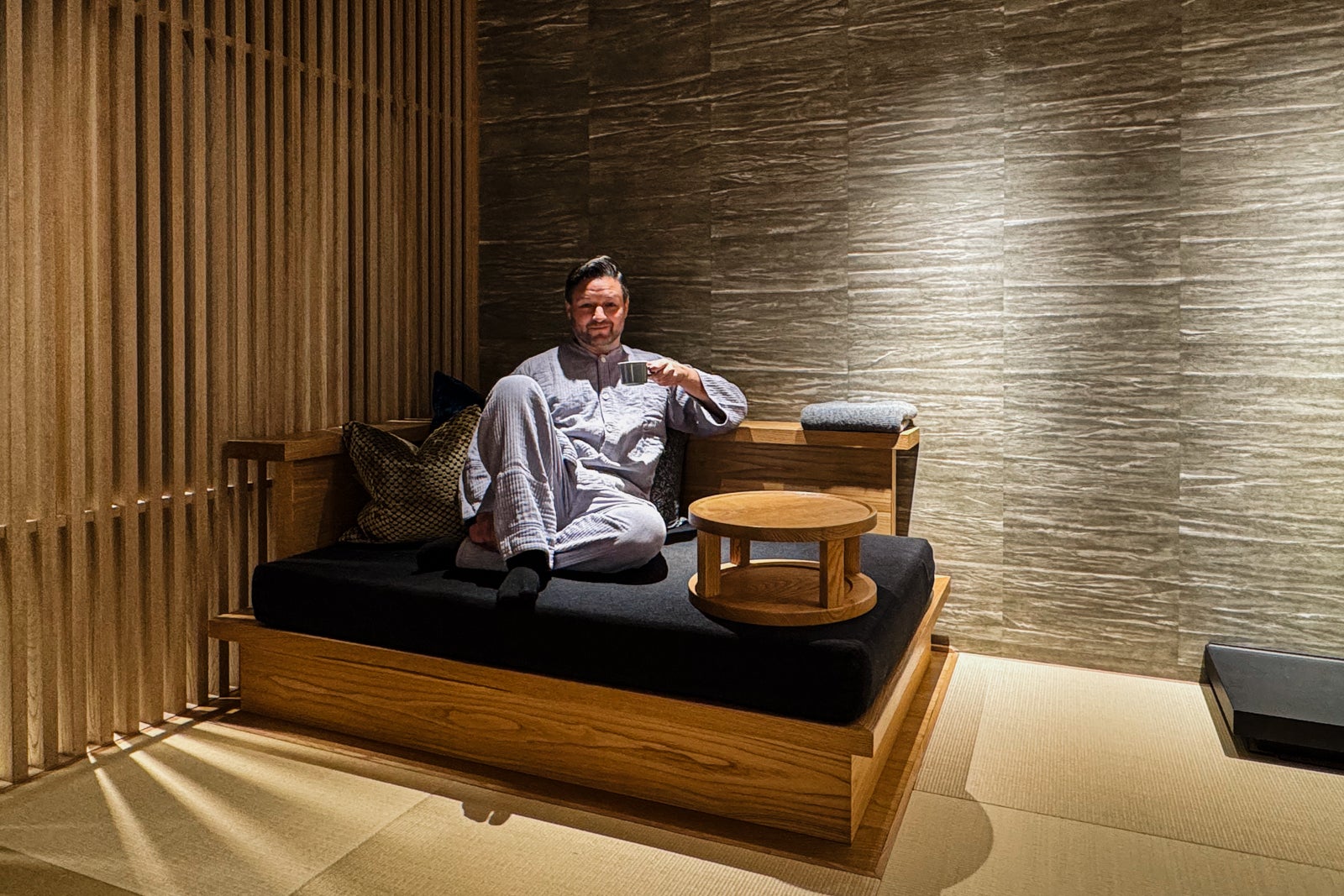
Chat through the hotel’s cultural and wellness offerings so that you can reserve experiences like a private tea ceremony or a miniature garden-making class. But spare some time in the evening or early morning to head upstairs to the hotel’s onsen, or public bath, for a mineral-rich soak in its steaming waters.
The room
In keeping with the ryokan theme, guests are given woodblock keys that allow them to take the elevators just to their floor as well as the top-floor spa. The idea is that you will make your floor your home away from home and not only luxuriate in your room, but also spend time in the ochanoma with other guests just from your own floor. To that end, you can even leave your room unlocked while you’re spending time in the lounge.
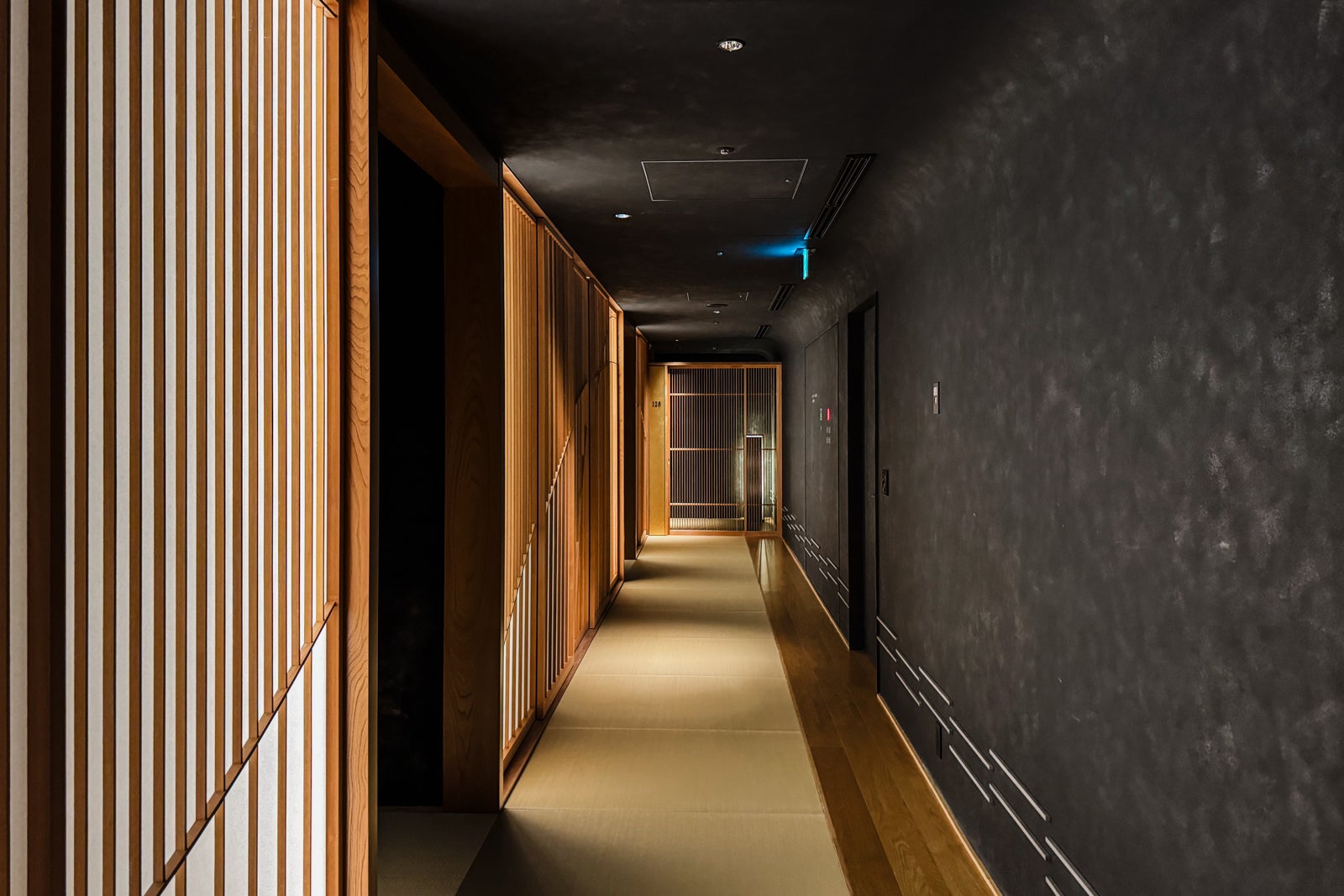
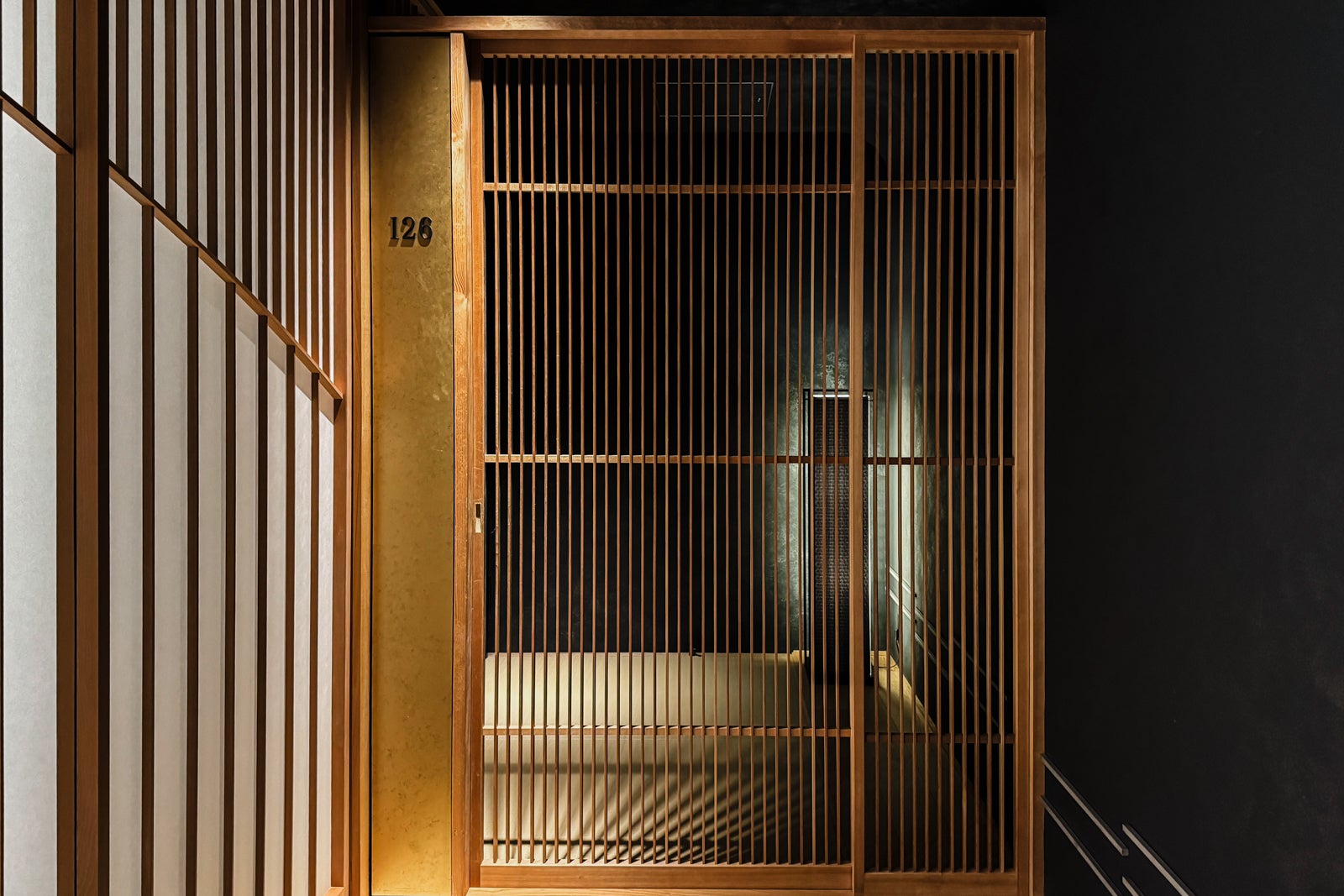
My Kiku room was located at the end of the tatami-matted hallway and measured up at an impressive (especially for Tokyo standards) 894 square feet.
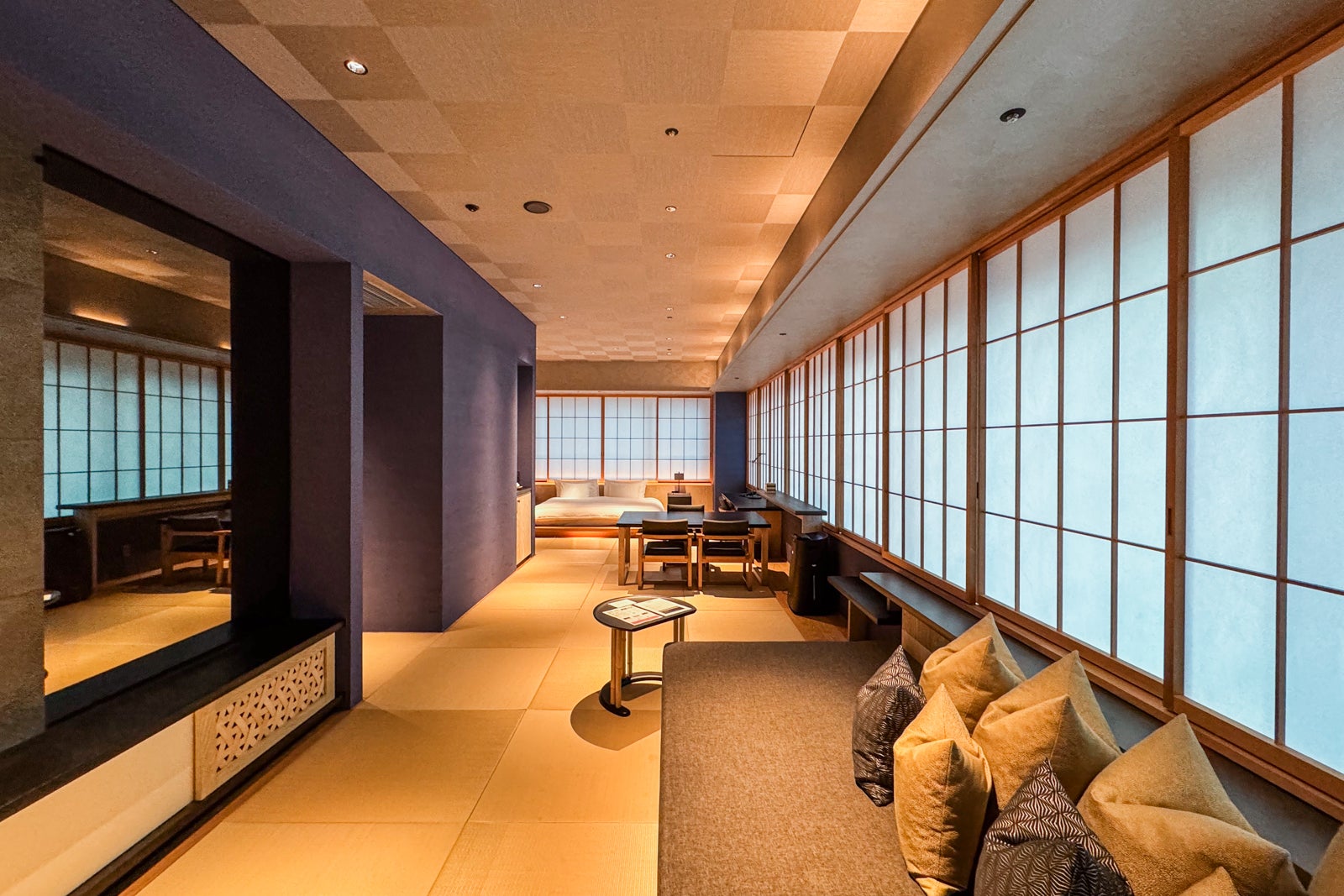
ERIC ROSEN/THE POINTS GUY
One entire wall was comprised of sliding shoji screen panels that you could open to see the surrounding skyscrapers or leave closed to create the cocoon-like feeling of a ryokan in the hinterlands. When the sun hit just right in the afternoon, the building’s lacy exterior metalwork created whimsical patterns on the screens that added to the magic of the ambience.
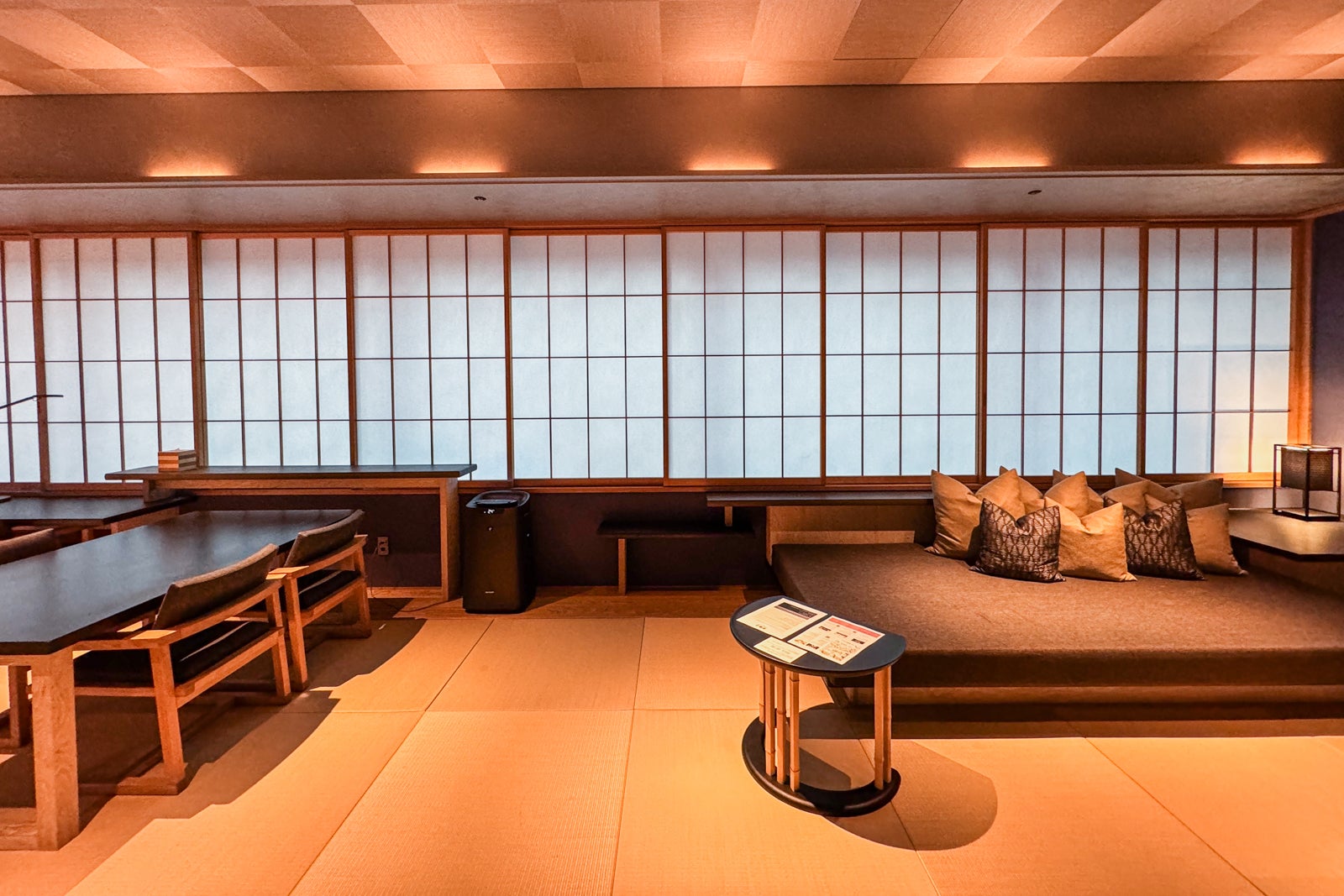
ERIC ROSEN/THE POINTS GUY
The main part of the room consisted of a small lounge area with a low daybed lined by plumped pillows and facing a glassy pillar with an embedded television (that I never ended up watching).
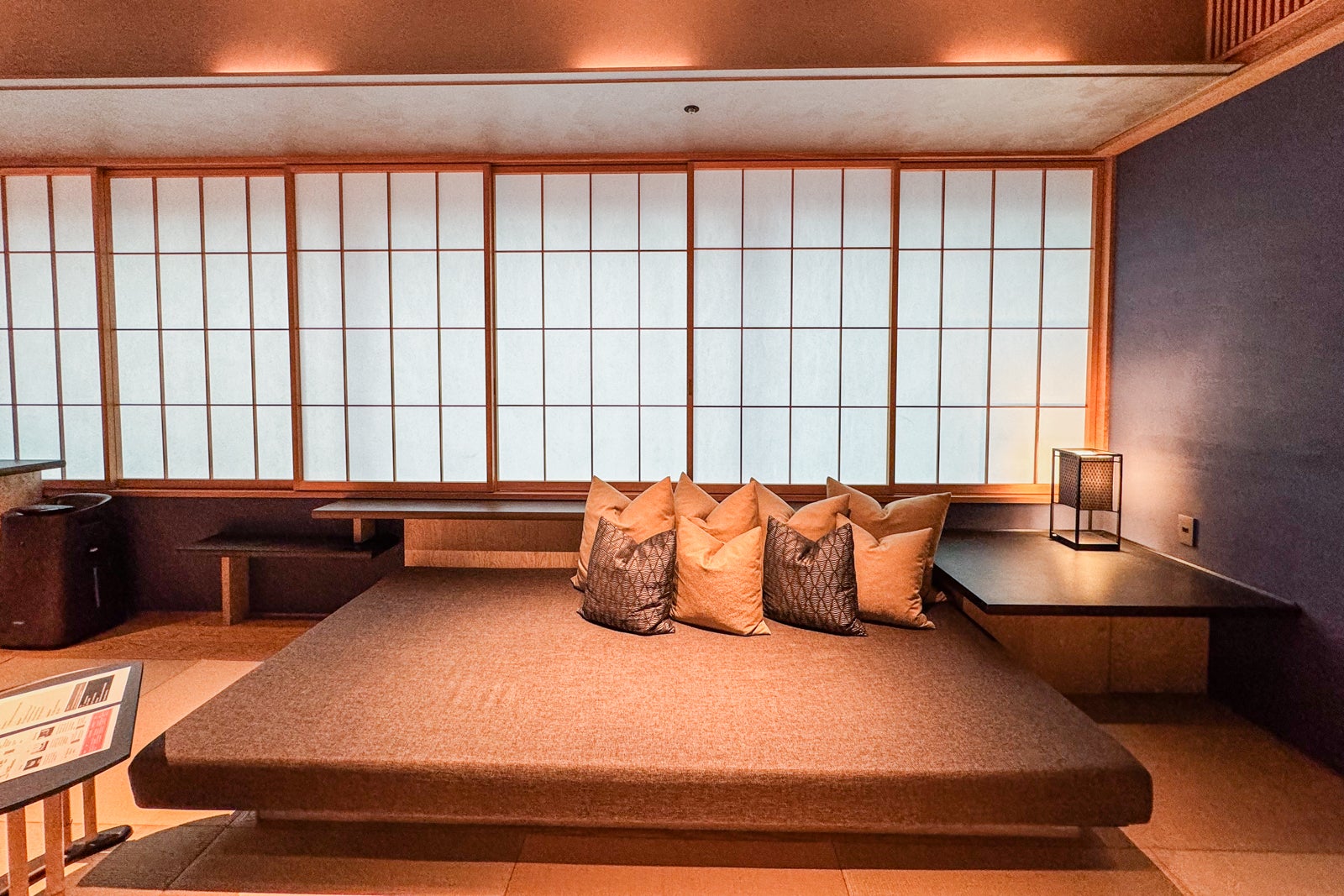
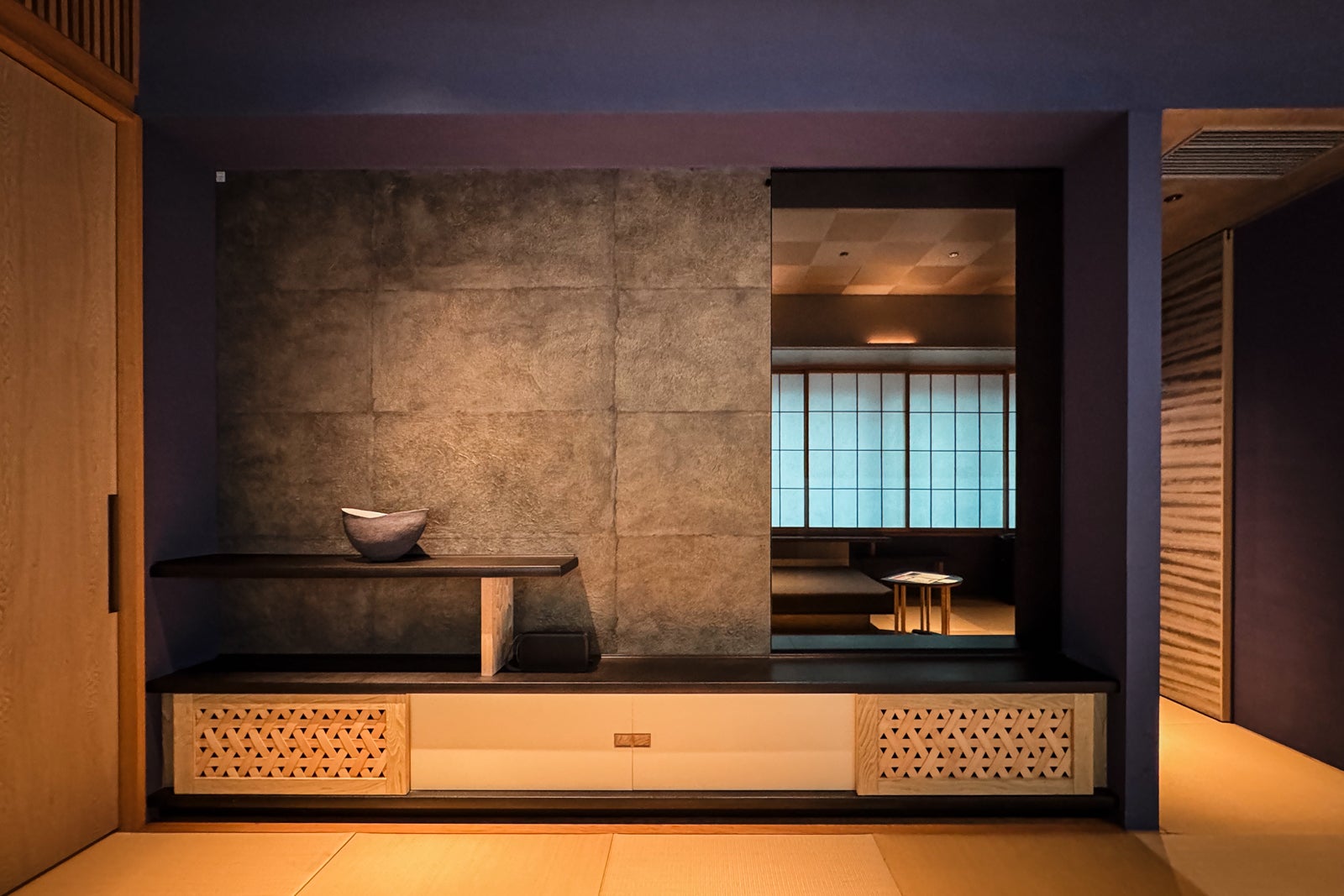
There was also a dining area with a table for four and a minibar, which held complimentary beer, juice, water, which you could refill in the ochanoma, a hot water kettle and a tea set.
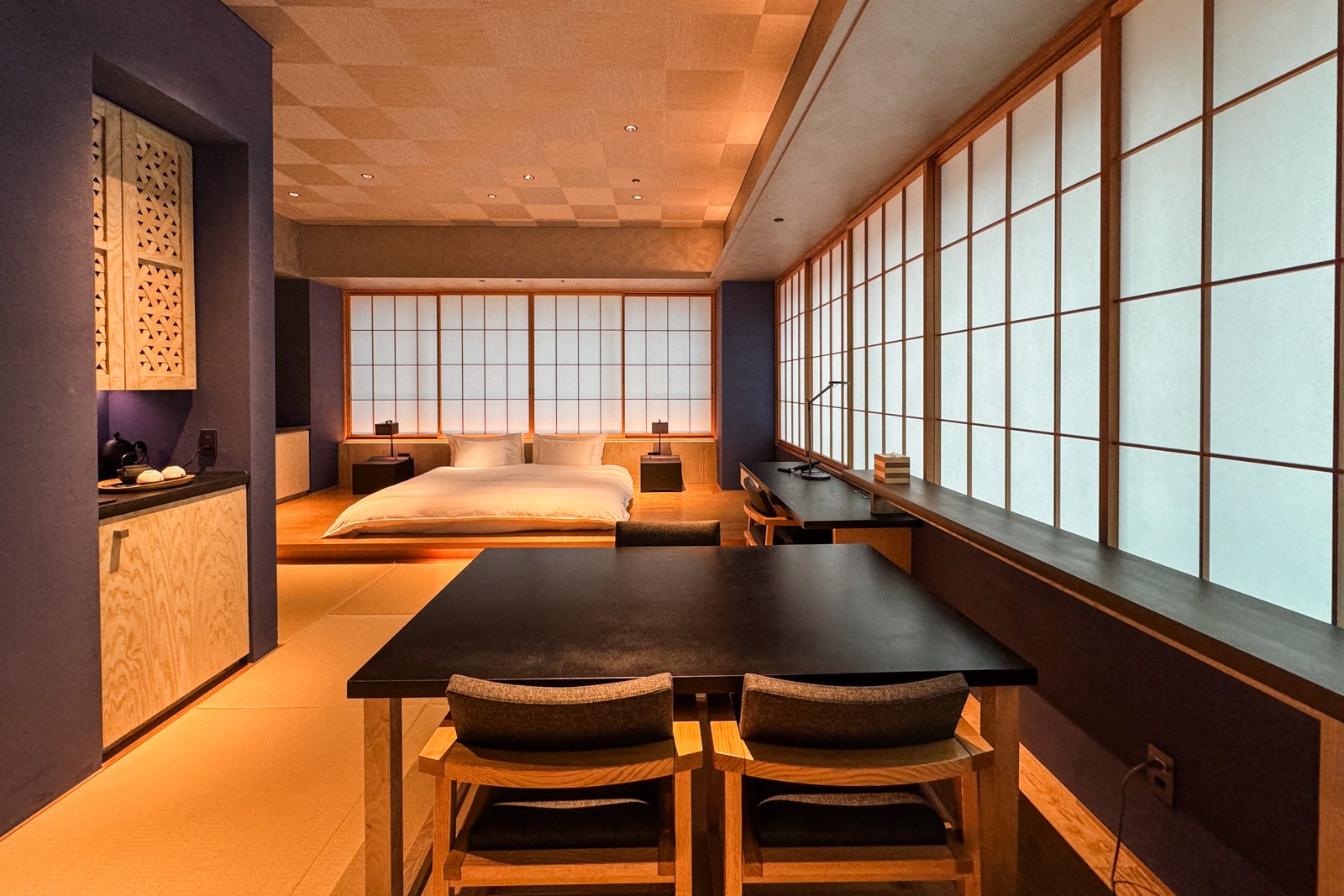
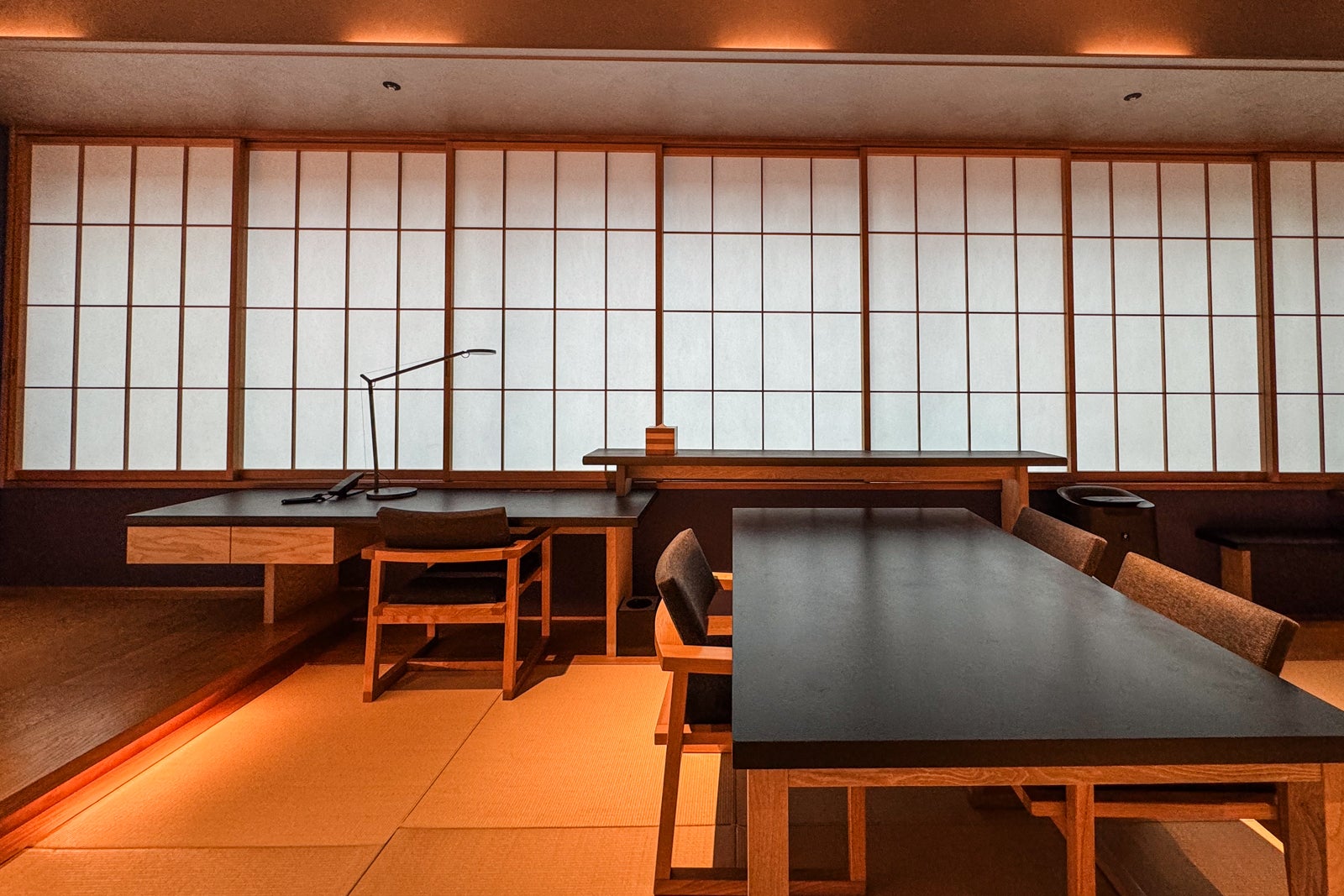
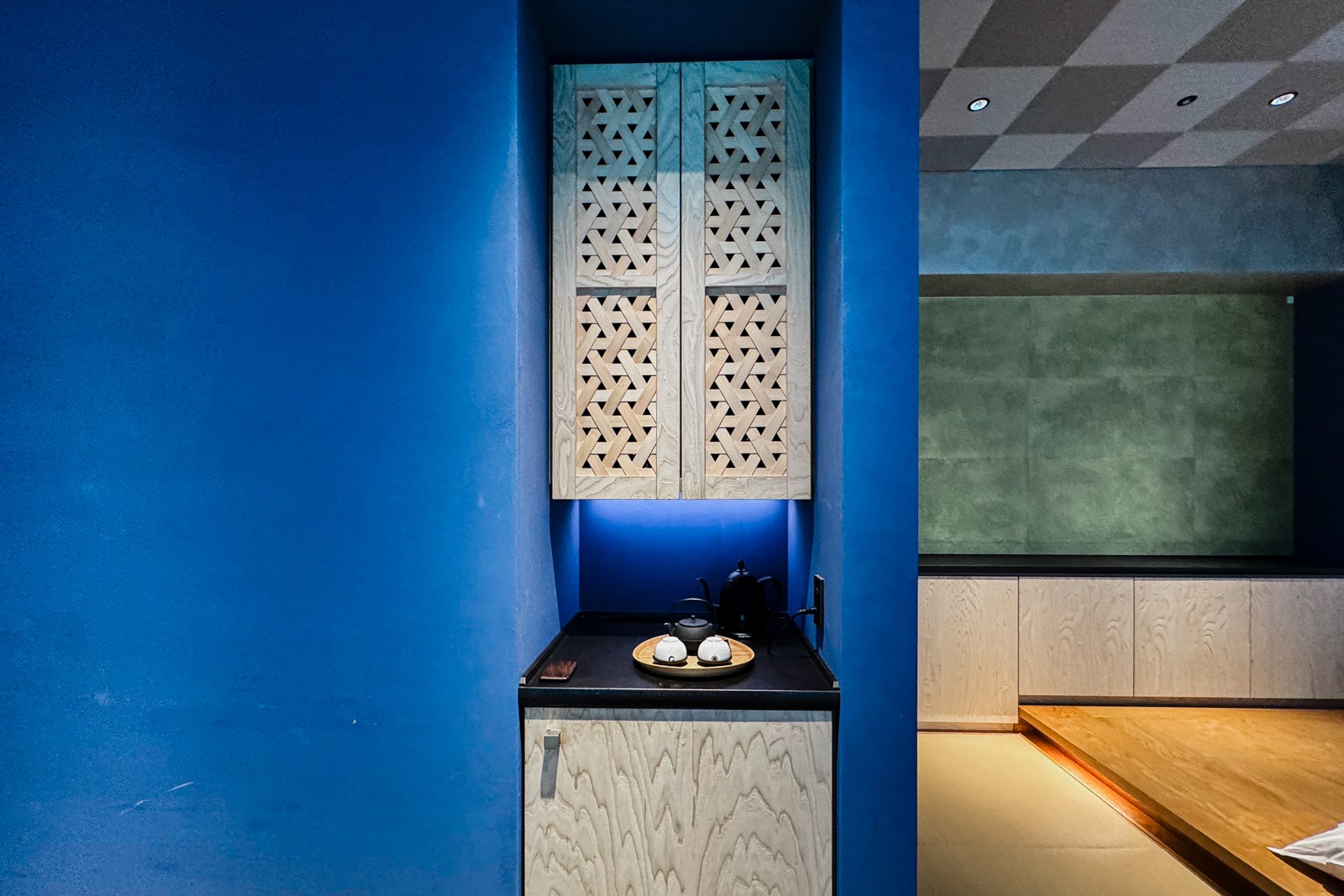
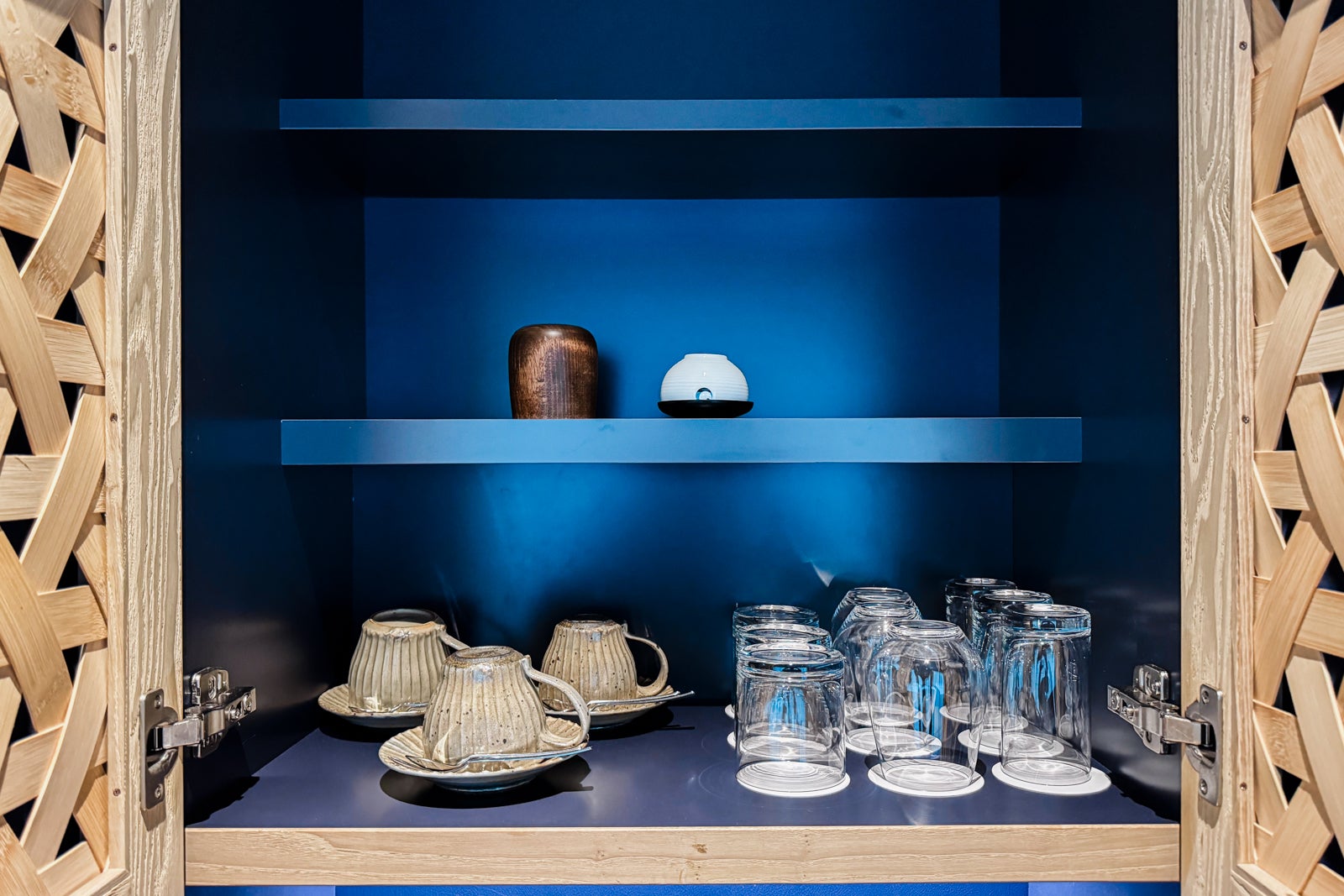
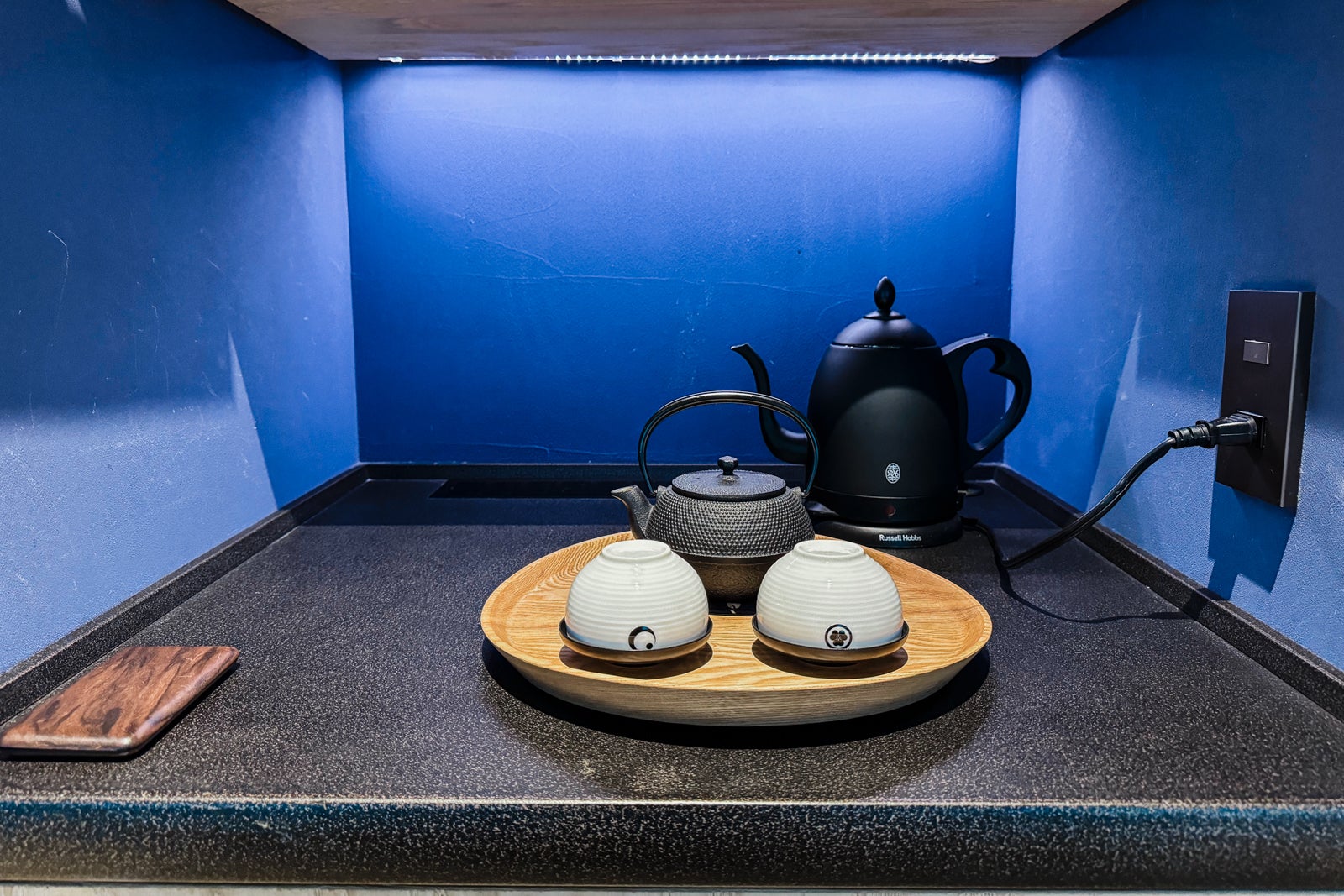
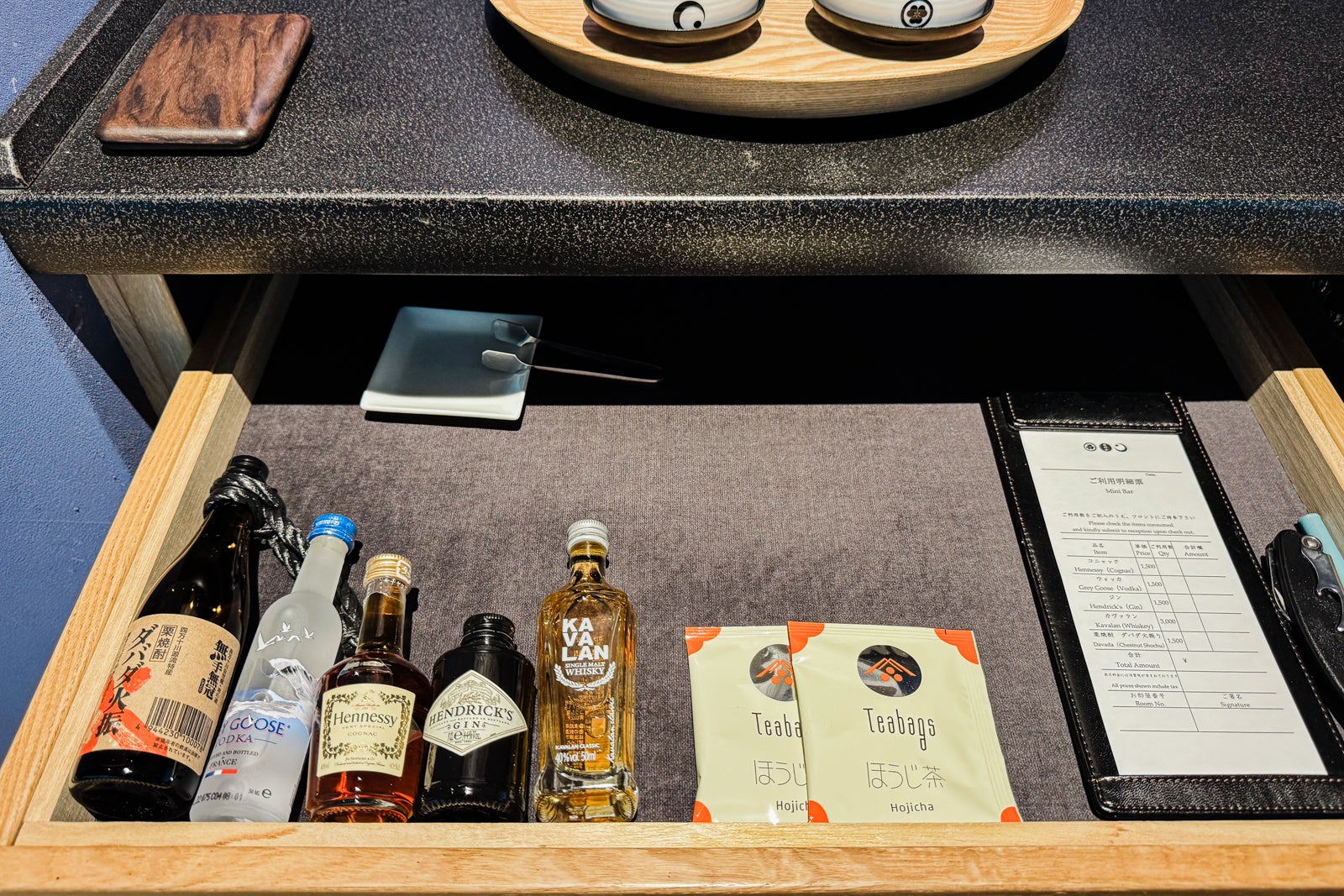
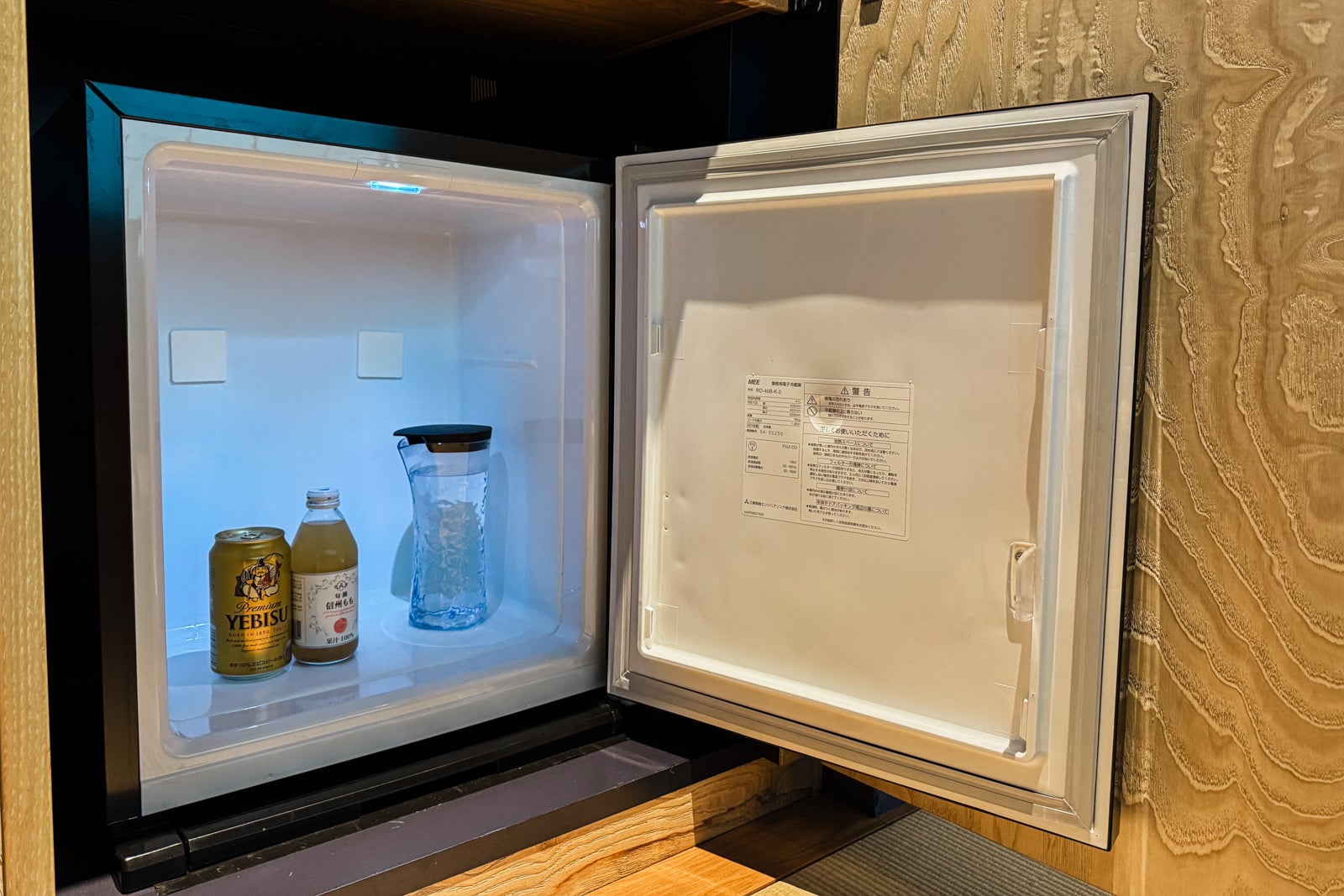
For business travelers like me, there was a stone-topped desk with a chair and lamp, but the main focal point was the dais with a low-profile bed, fitted with a cloud-like duvet and fluffy pillows that practically invited you to sink into them for a leisurely nap.
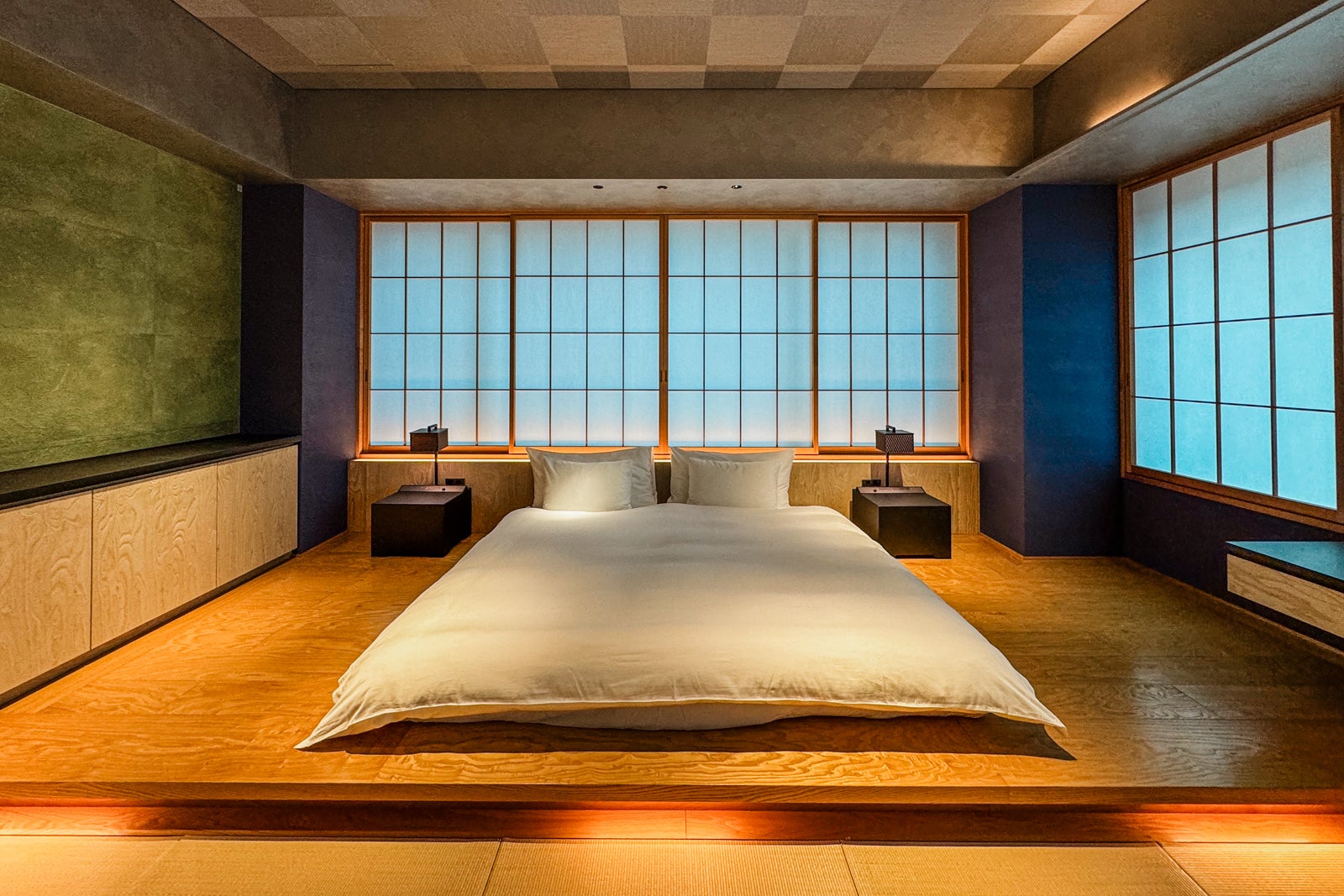
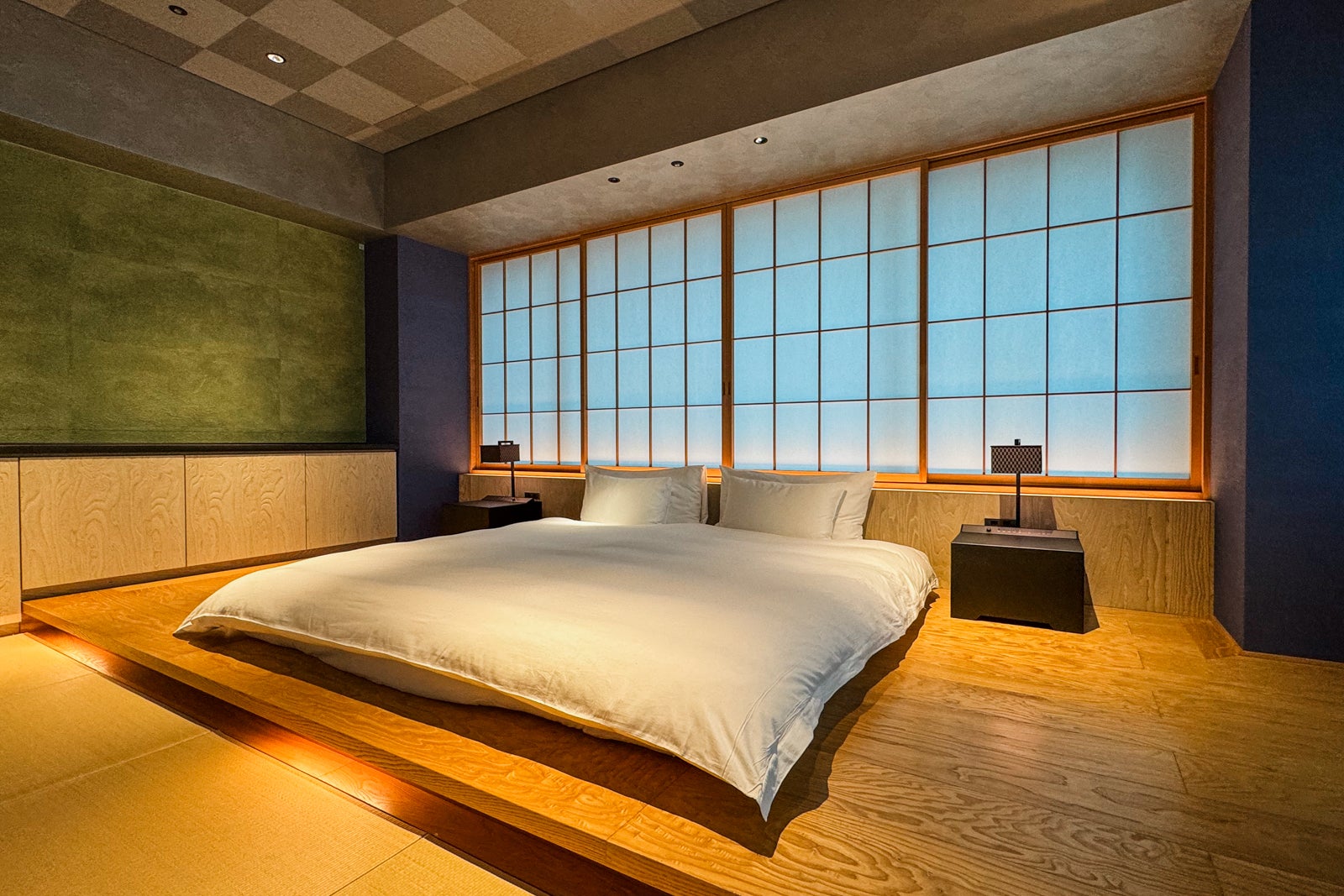
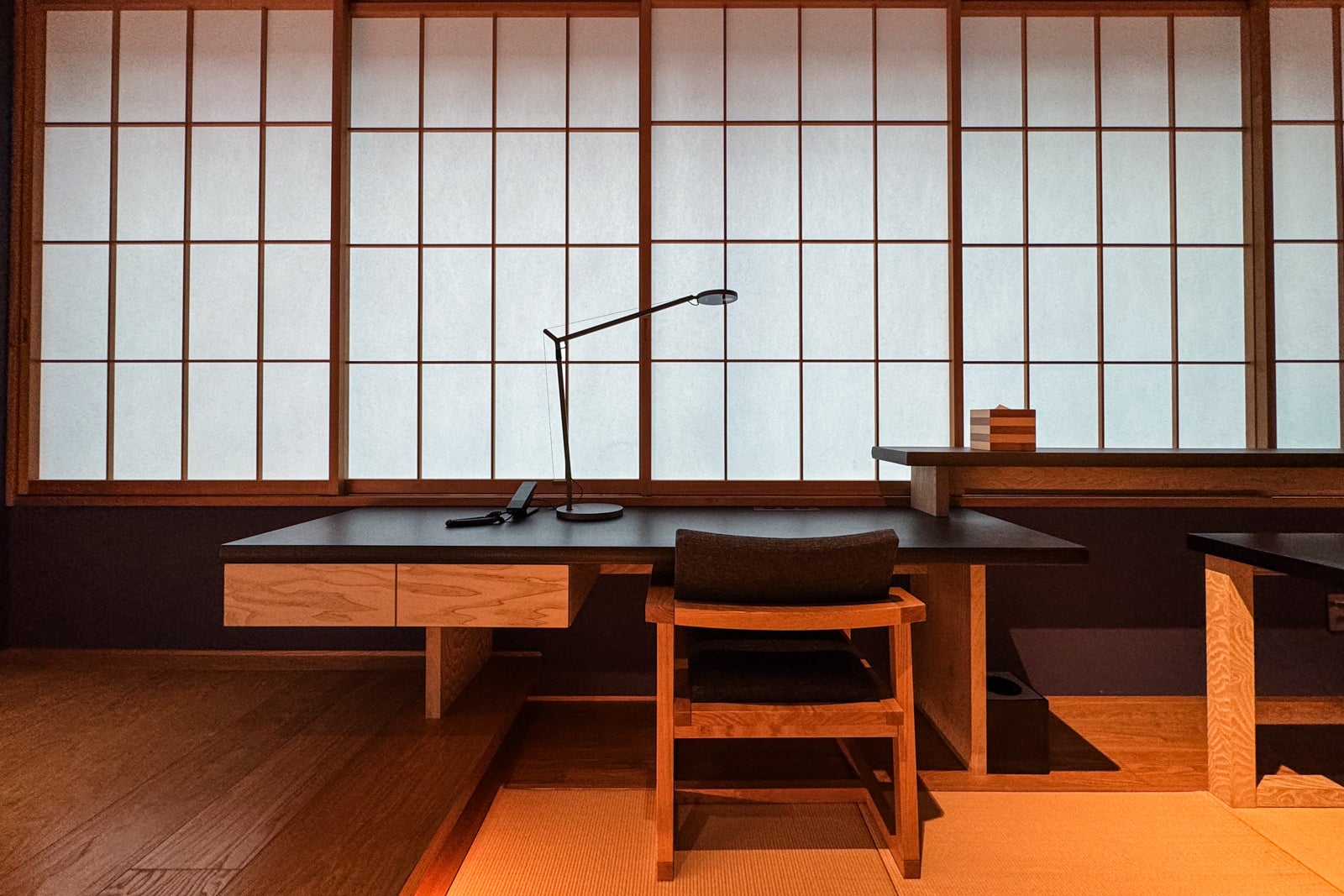
To each side of the bed, nightstands had power ports and switches to control the lights.
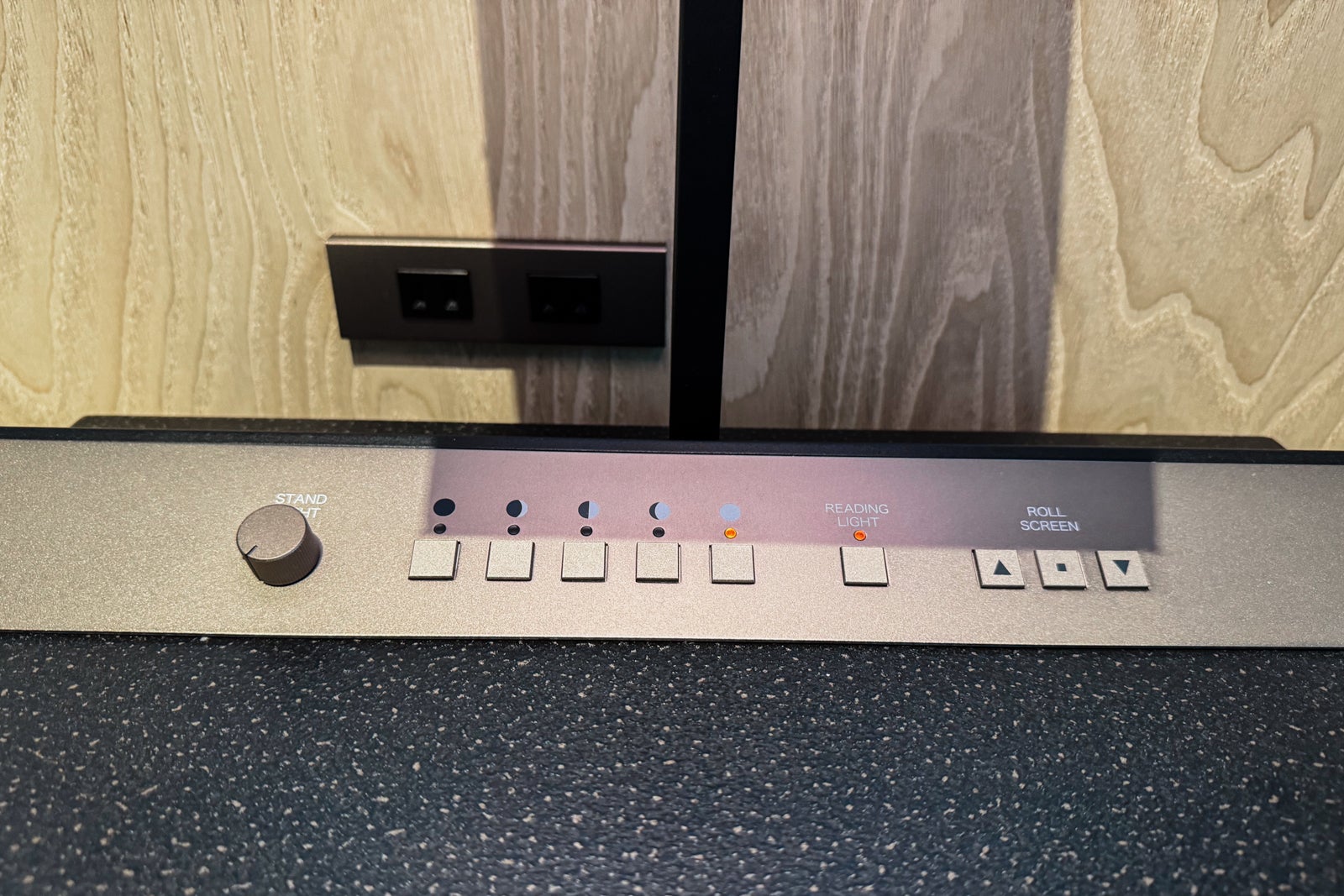
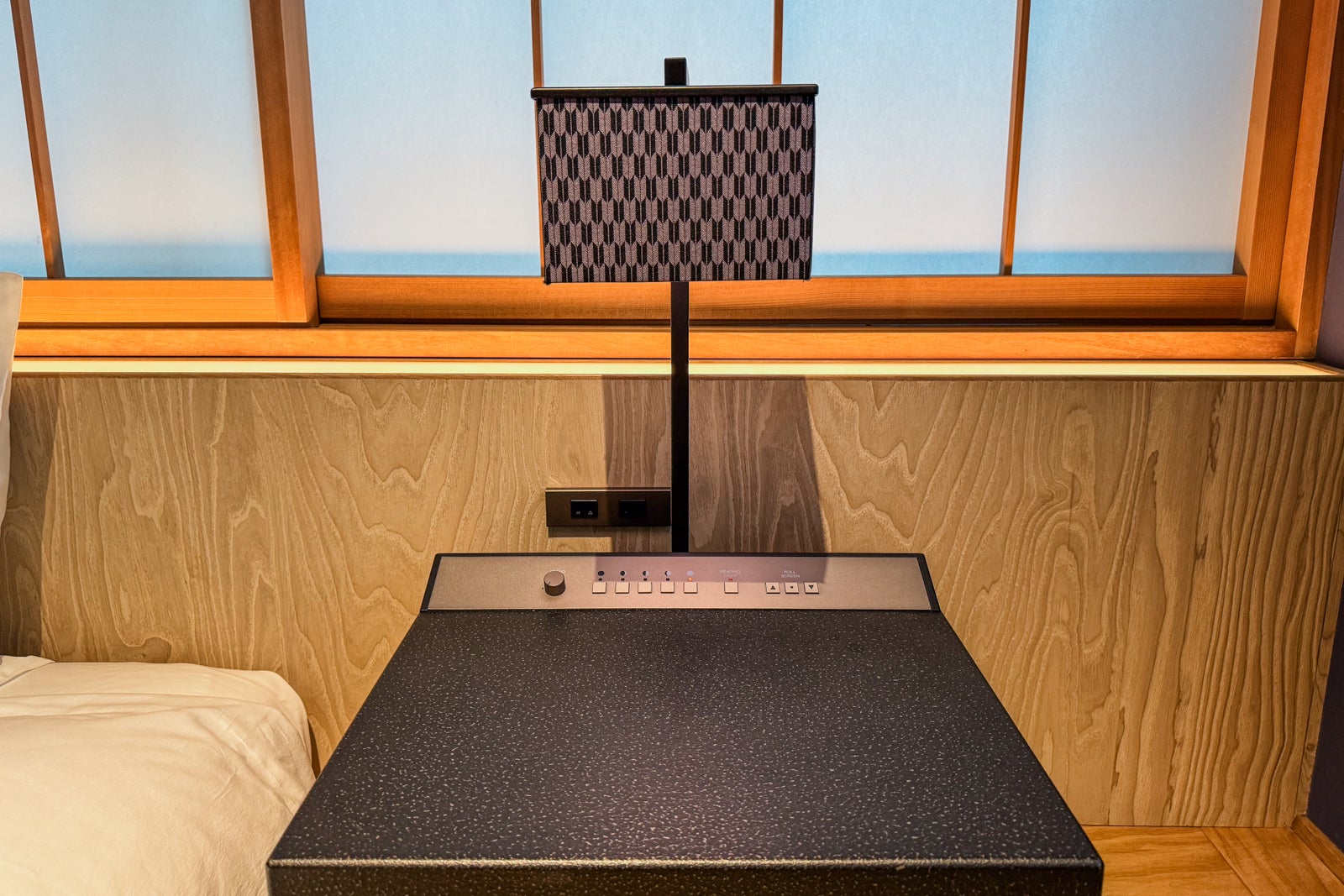
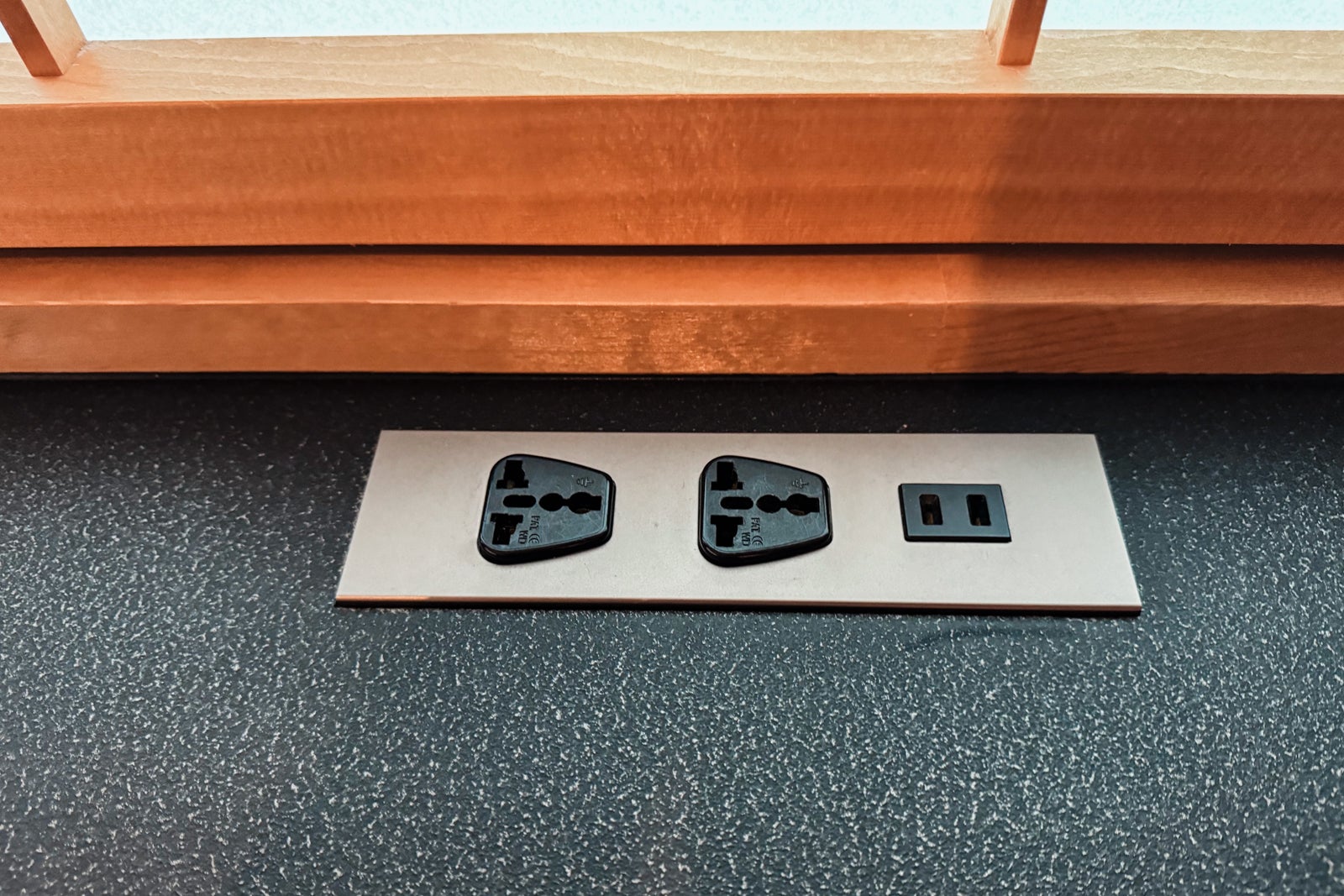
The long, narrow closet had ample space for luggage, plus plenty of hangers and drawers. The hotel provided a fresh set of pajamas each day to wear around the room and the ochanoma as well as a slip, kimono and sandals to wear in the public areas including the onsen and for meals at Nippon Cuisine.
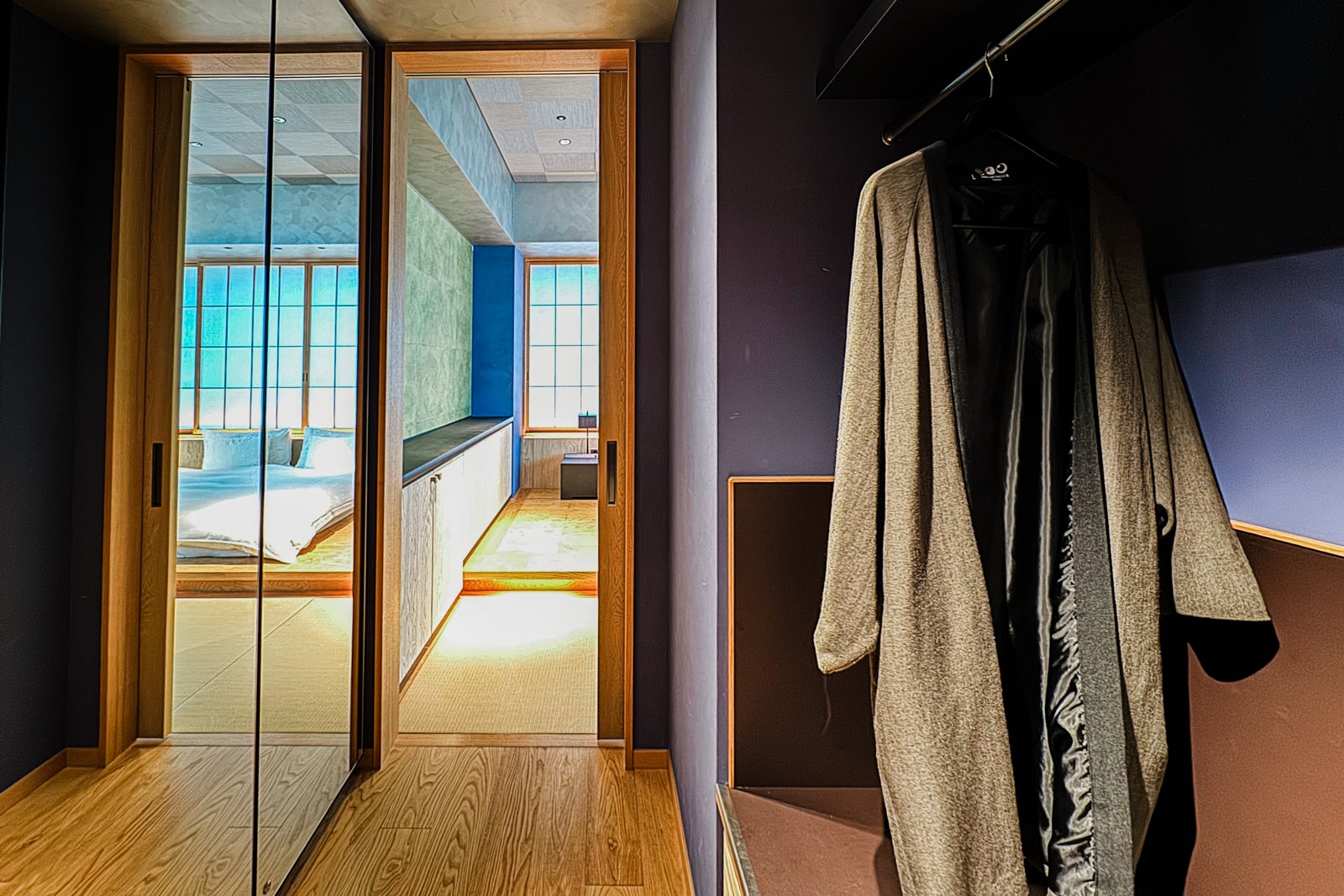
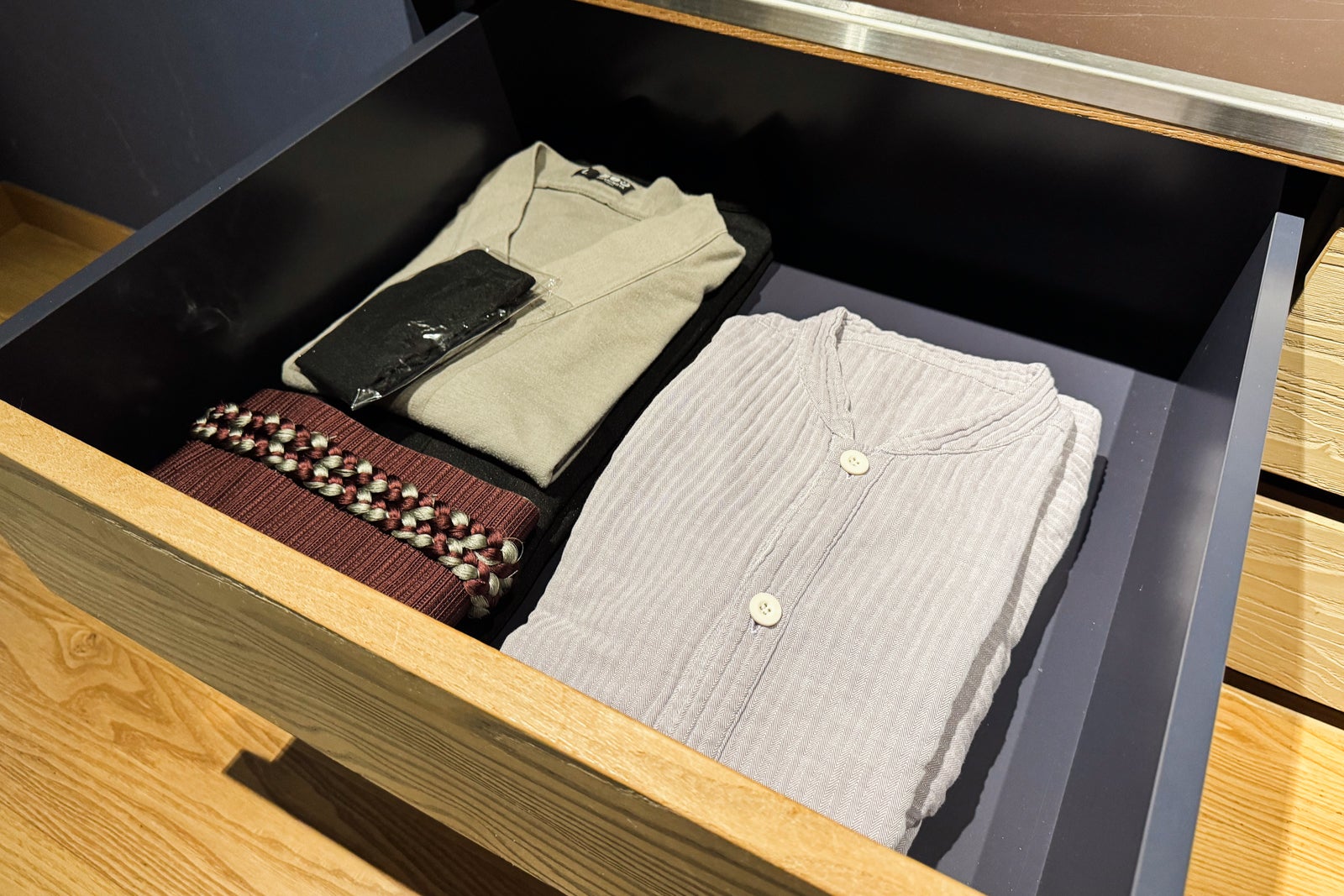
At the other end of the room from the bed, the bathroom was practically an enclave unto itself. The black stone floors and gray limestone walls created a soothing vibe. The main area contained a vanity with two squared-off basin-style sinks lit by globe pendants and stocked with a range of custom Lirio skin products including cleansing gel, freshening serum, toner and moisturizer.
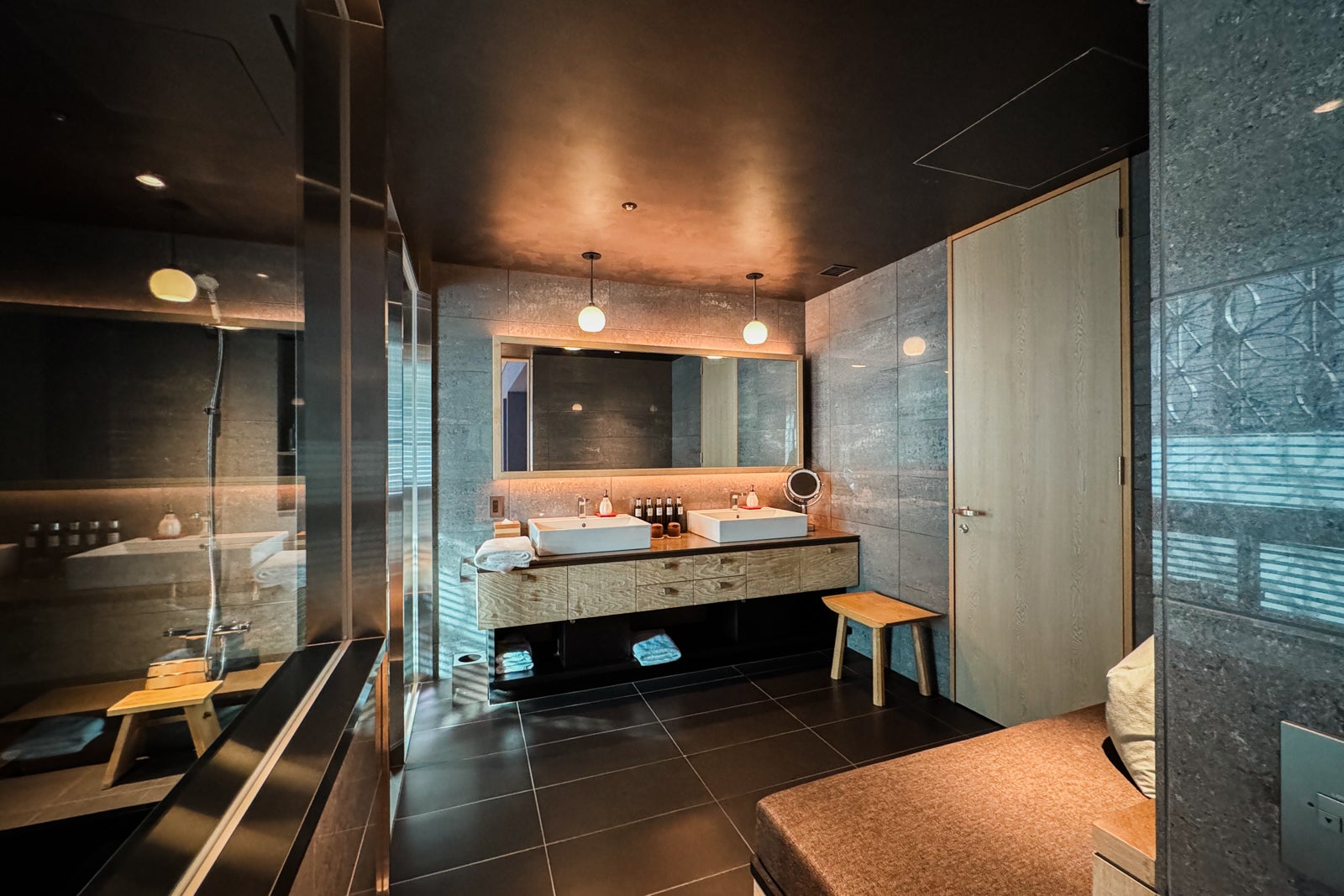
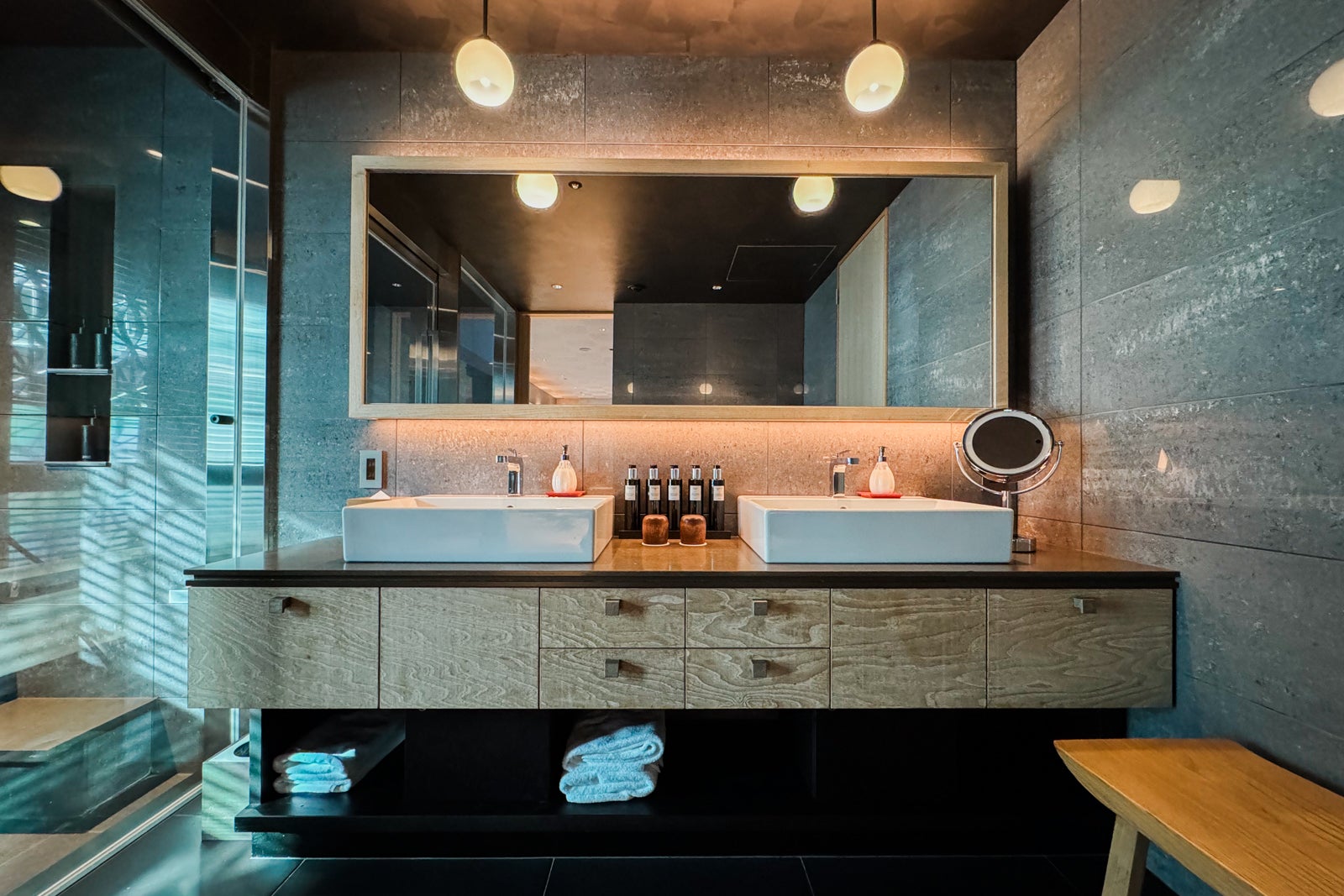
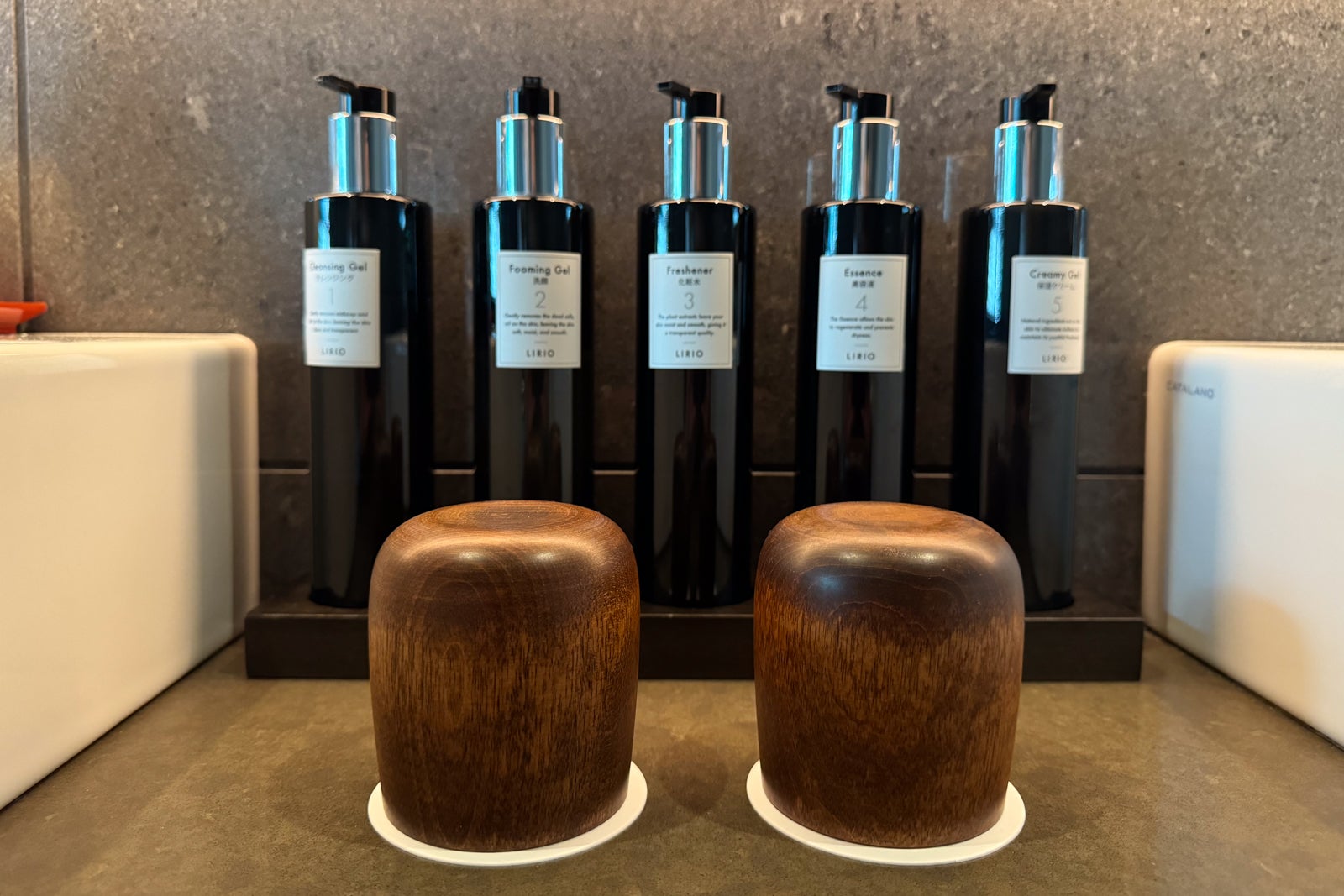
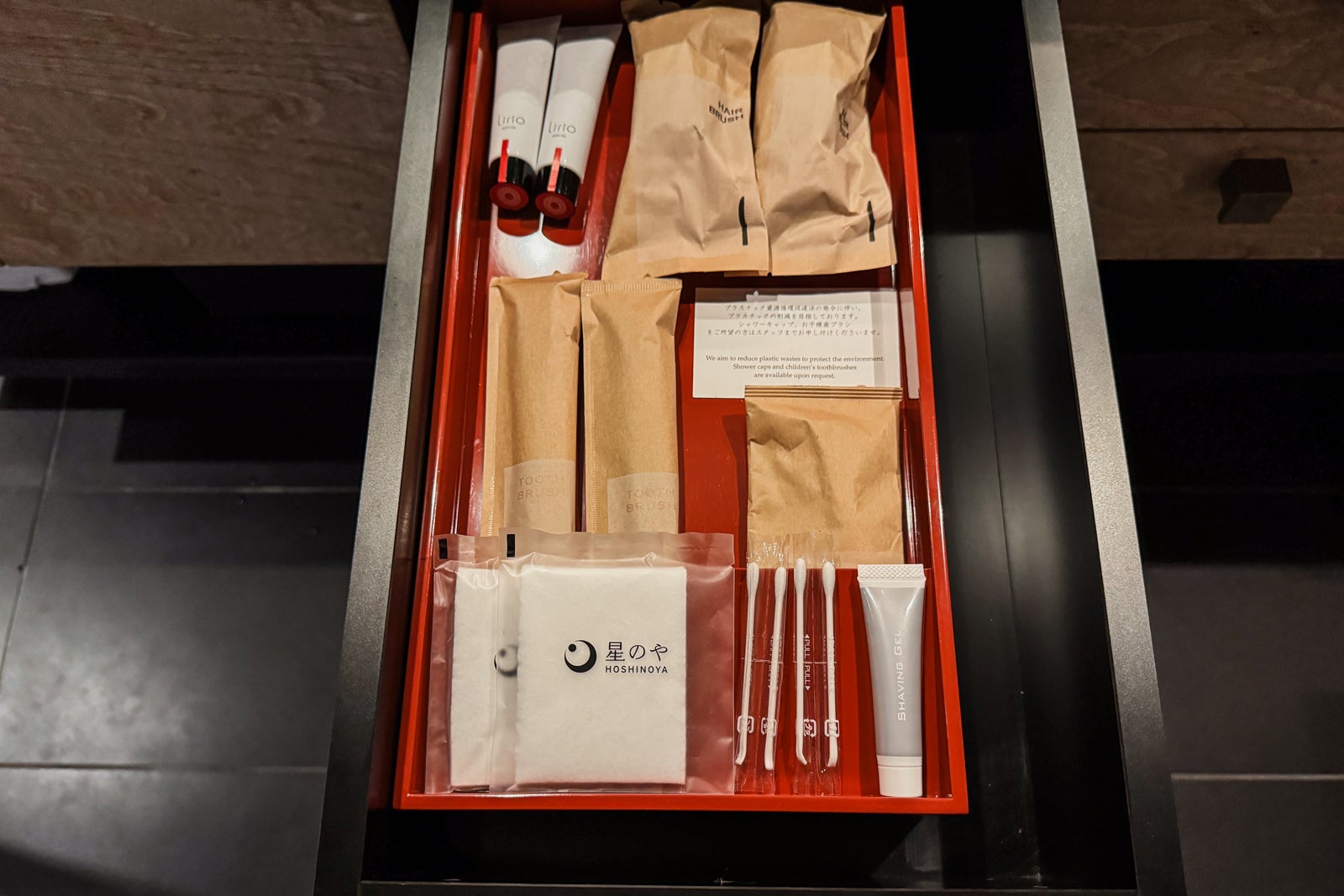
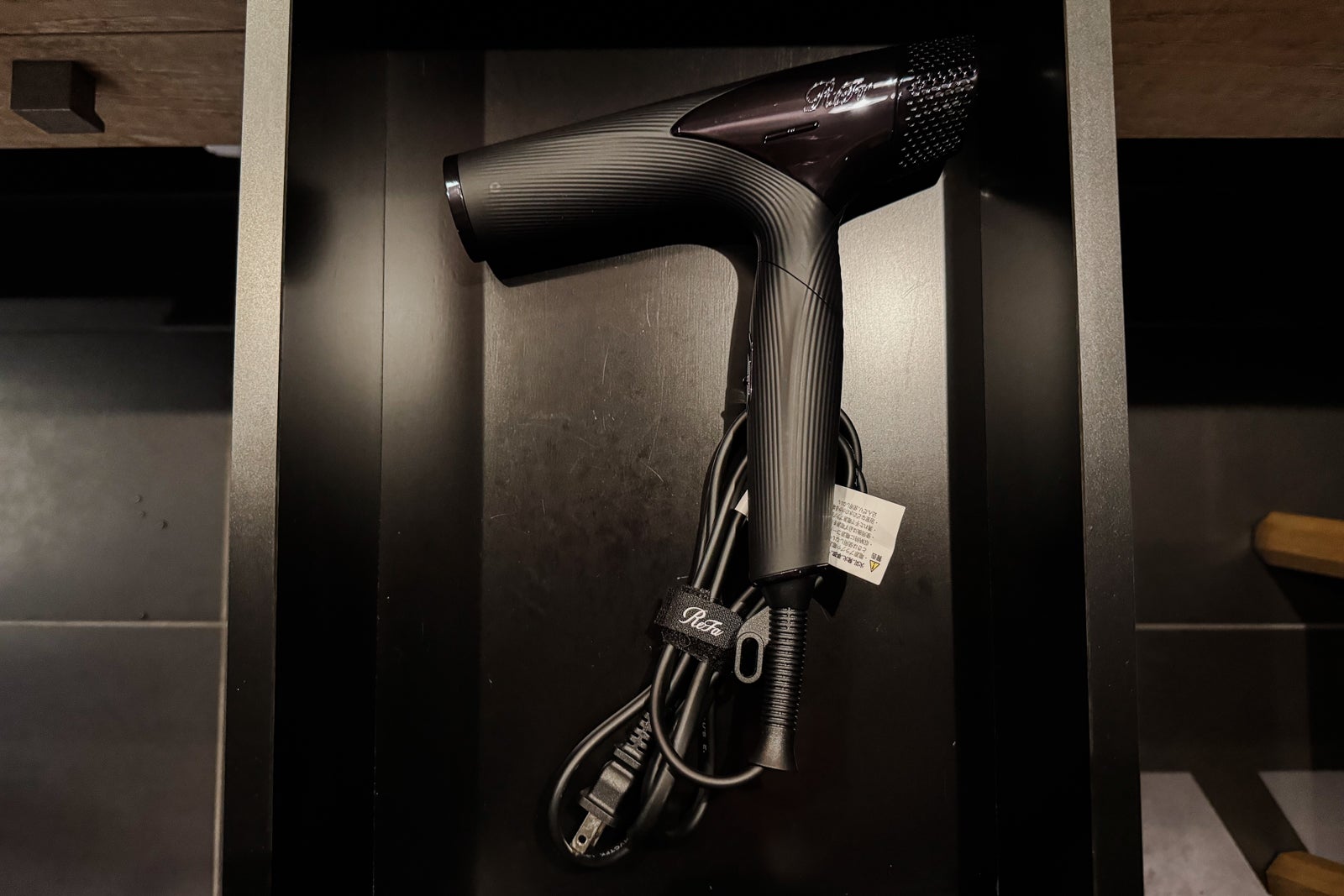
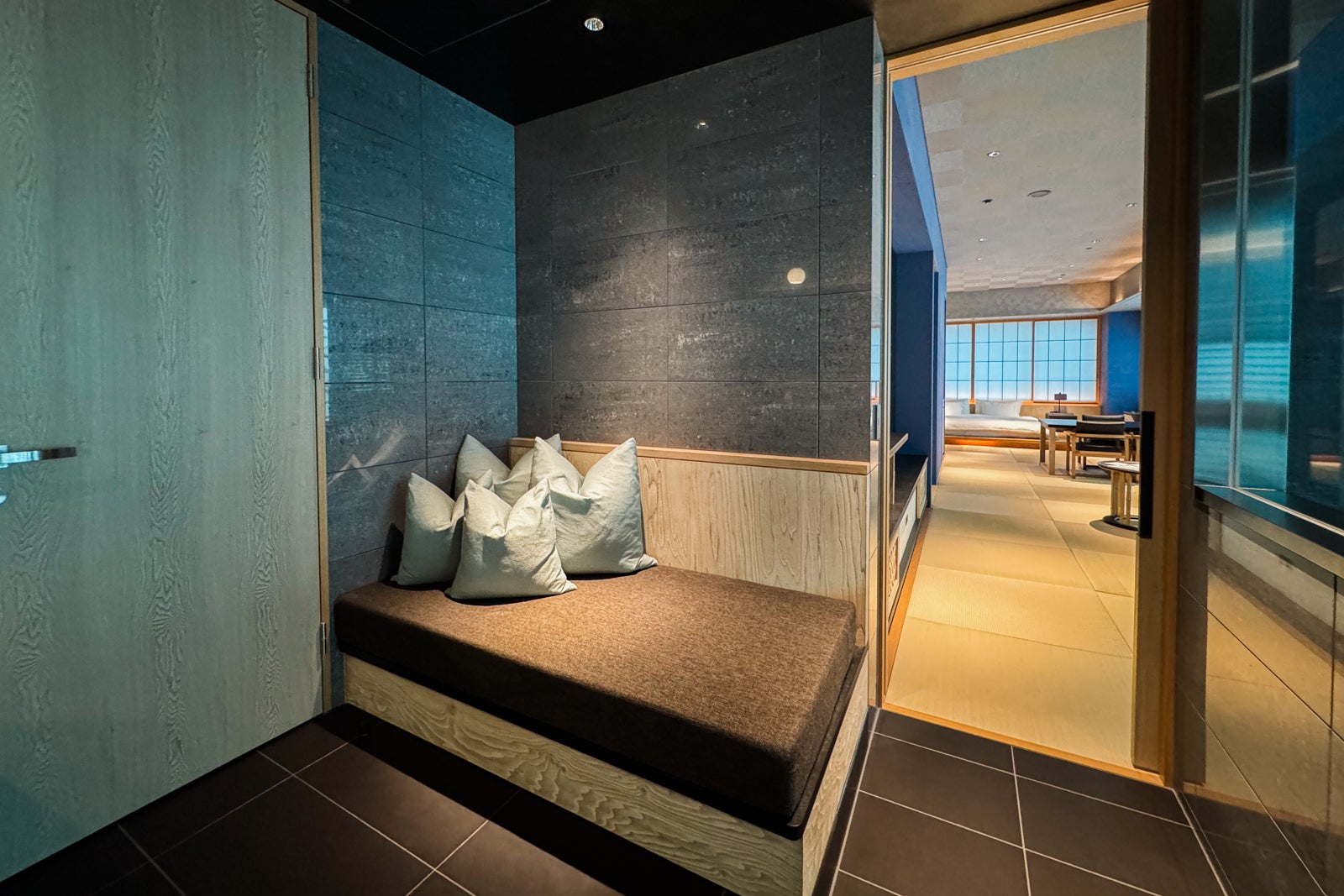
To one side was a water closet with an automated Toto toilet and its own small sink.
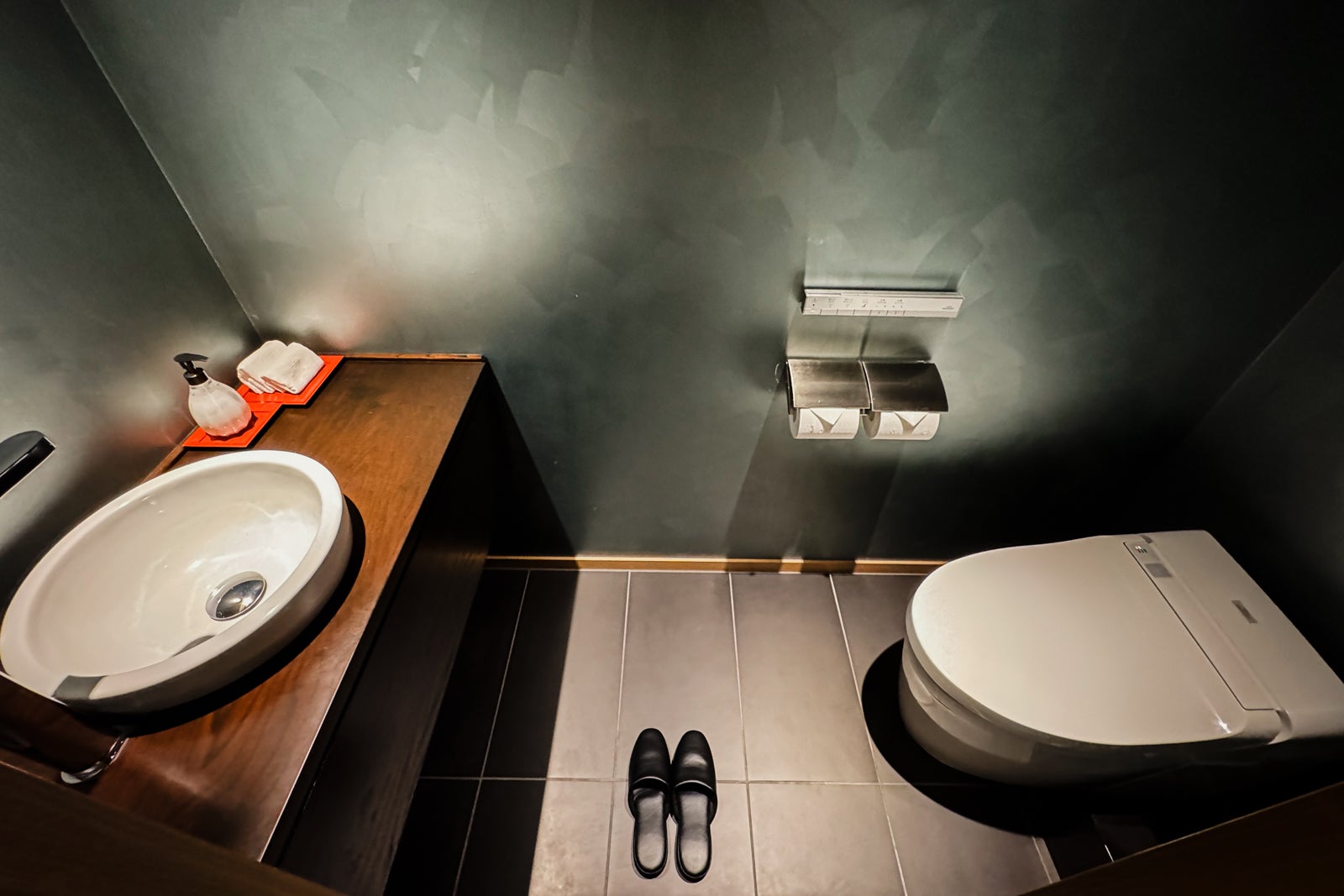
ERIC ROSEN/THE POINTS GUY
To the other was the room’s signature space, a glassed-in spa suite complete with a shower equipped with a traditional wooden low stool and bucket, and an enormous, cubical ofuro soaking tub.
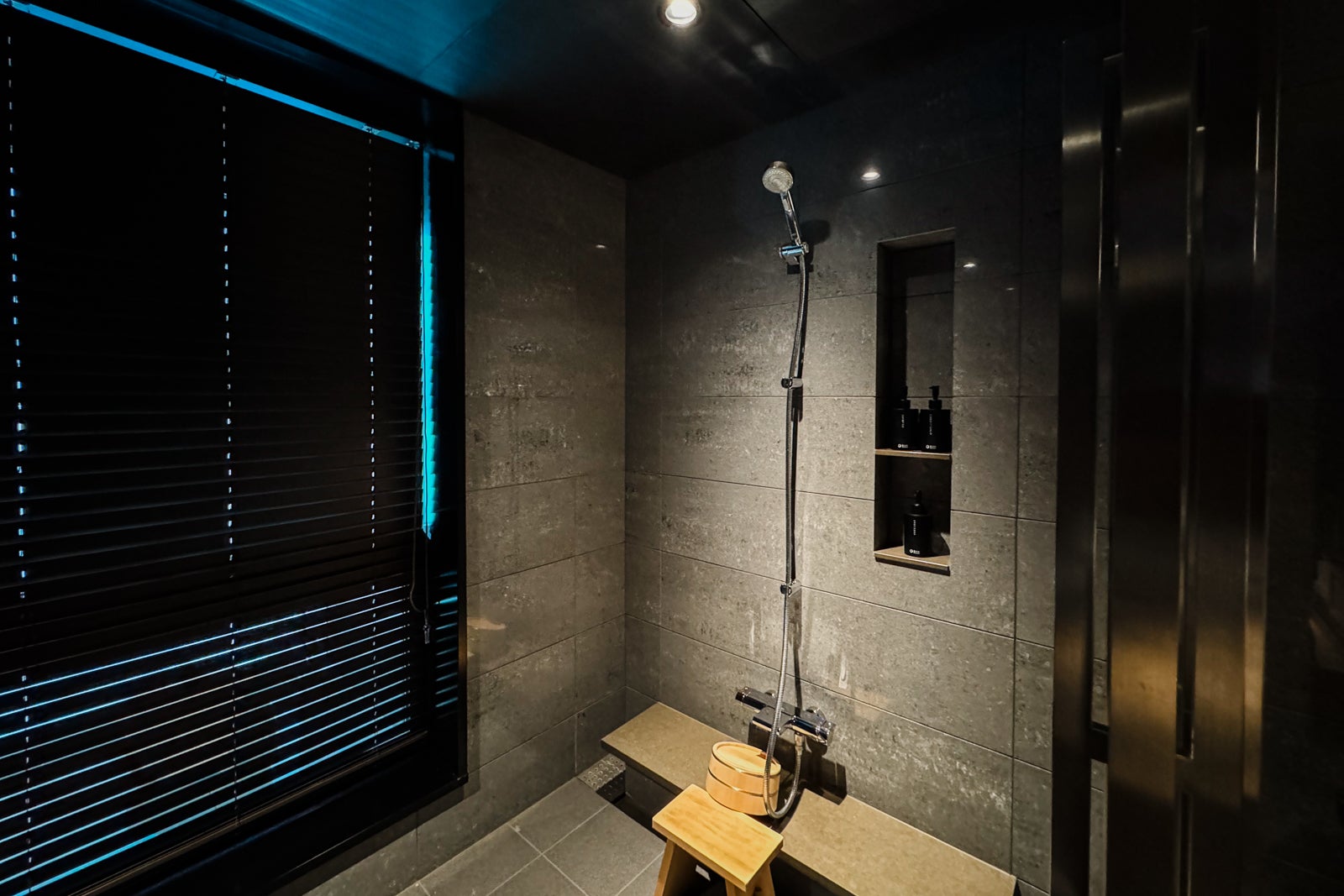
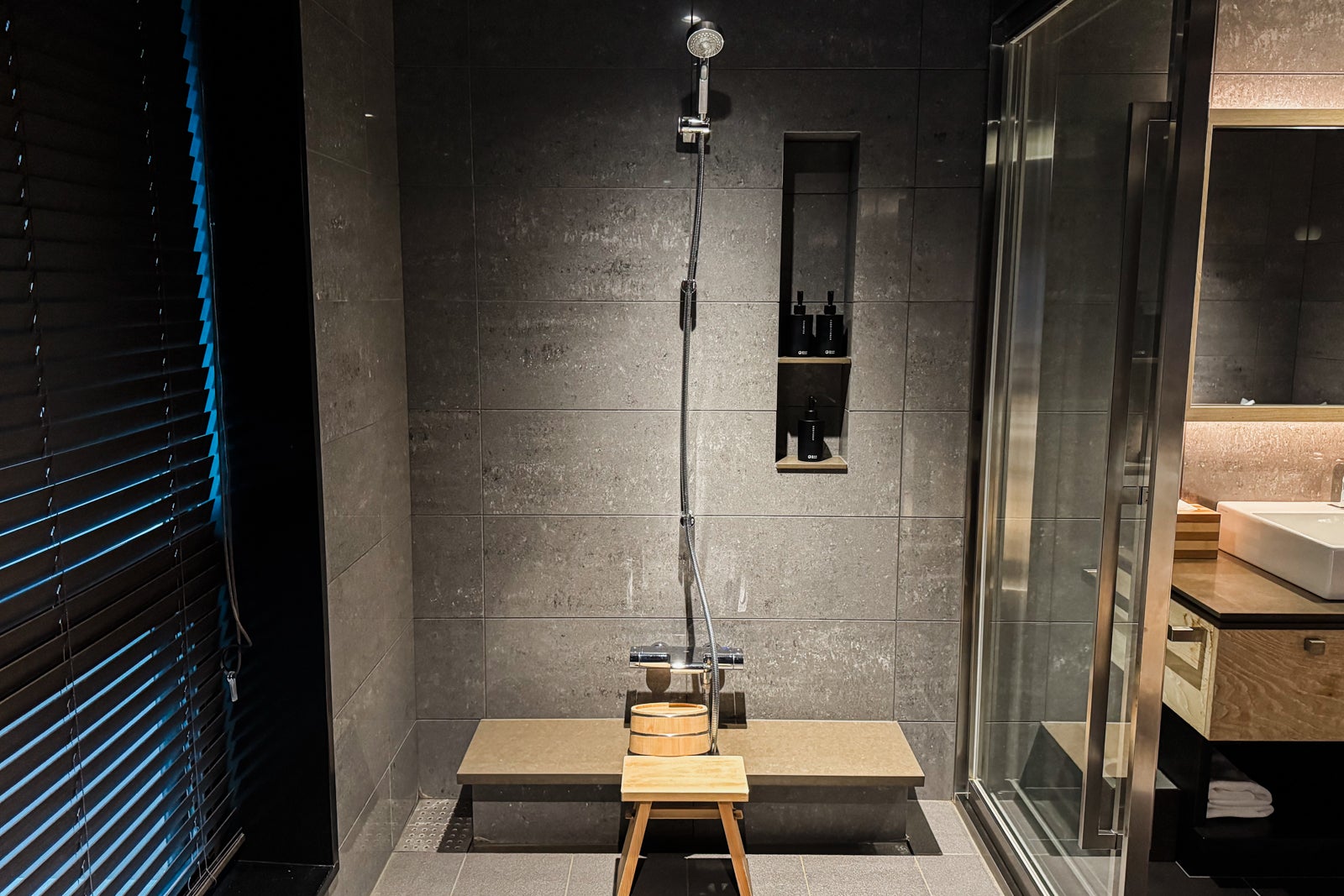
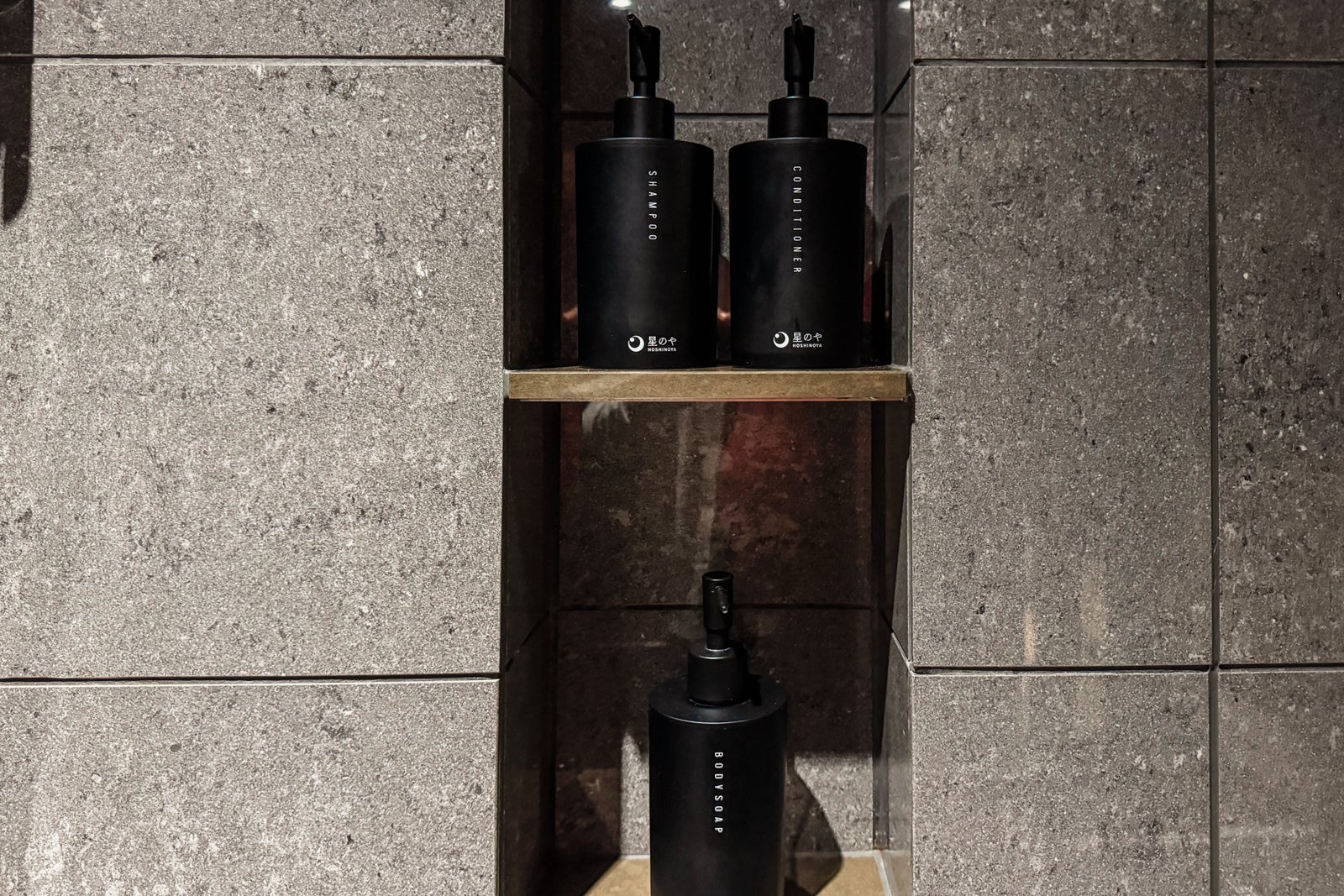
It was the ideal place to ease your way into the day before an early breakfast, or to unwind in a hot bath after a day out in the city.
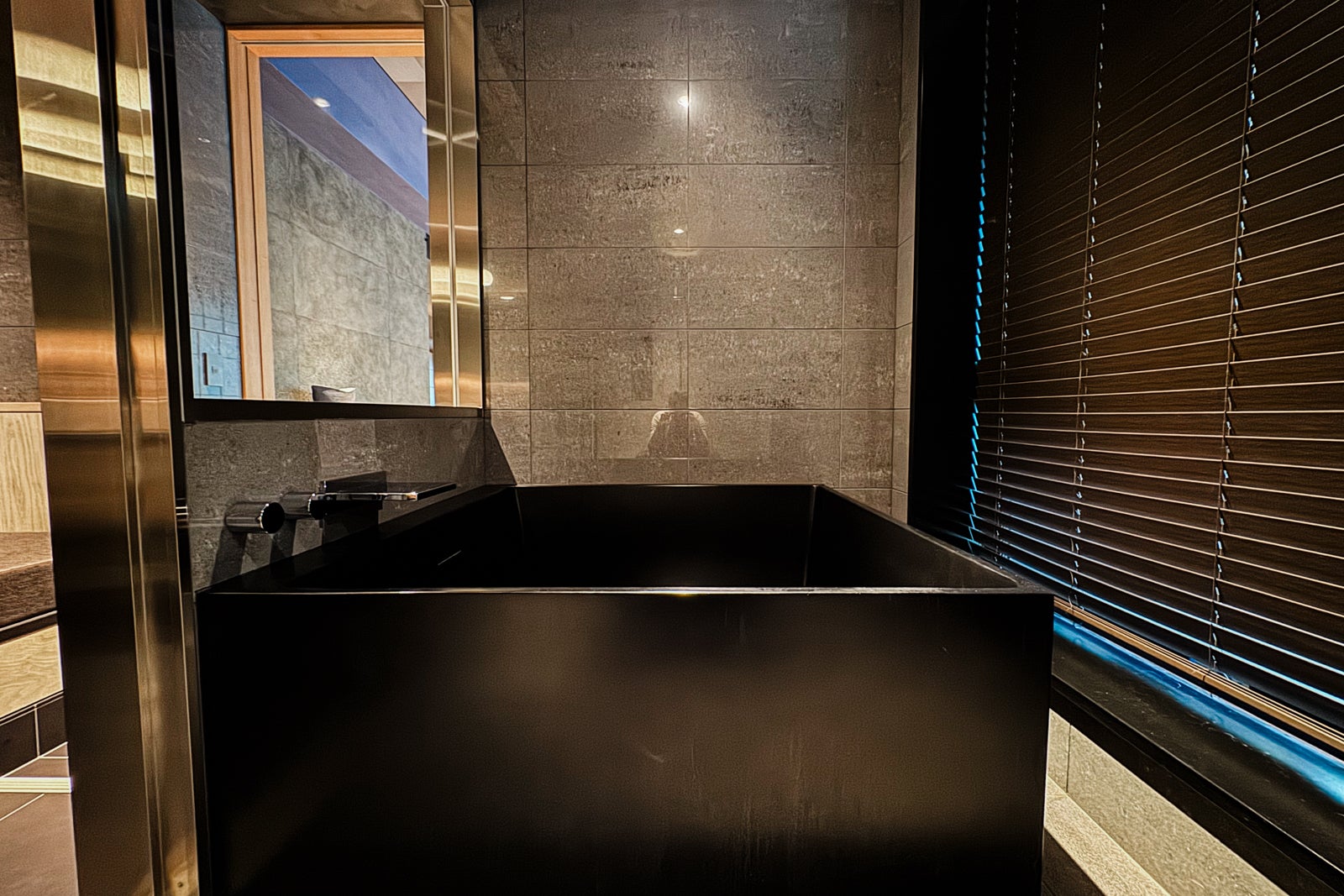
ERIC ROSEN/THE POINTS GUY
Food and drink
In line with the hotel’s ryokan-style roots, the dining experience at Hoshinoya Tokyo is quite distinct from what you might expect at a typical luxury hotel. You won’t find a passel of lively bars and restaurants where guests and outsiders come to mingle, though you might socialize with fellow guests in your floor’s private lounge, or have a conversation over sips at the sake tastings that take place nightly from 5-6 p.m. adjacent to reception.
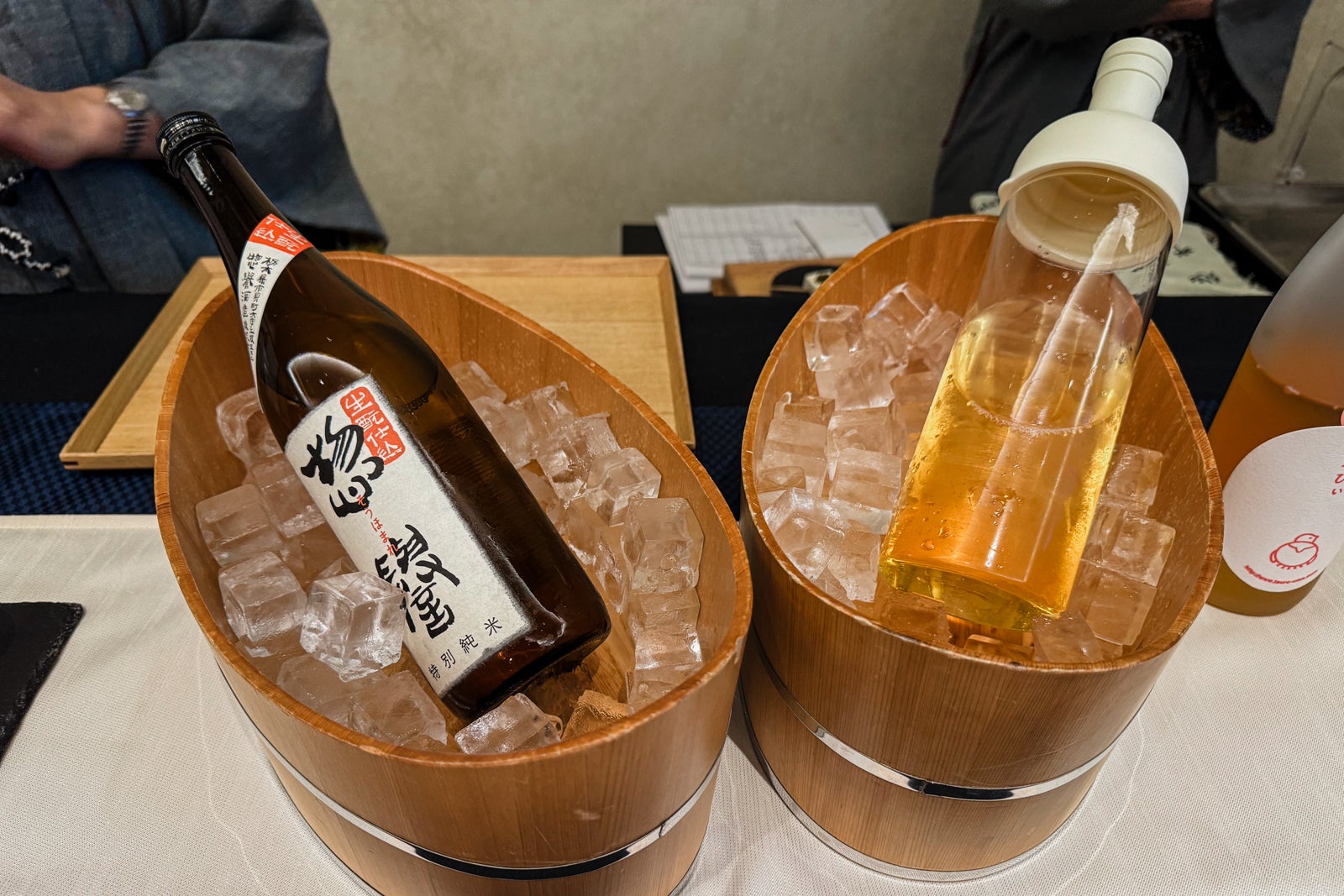
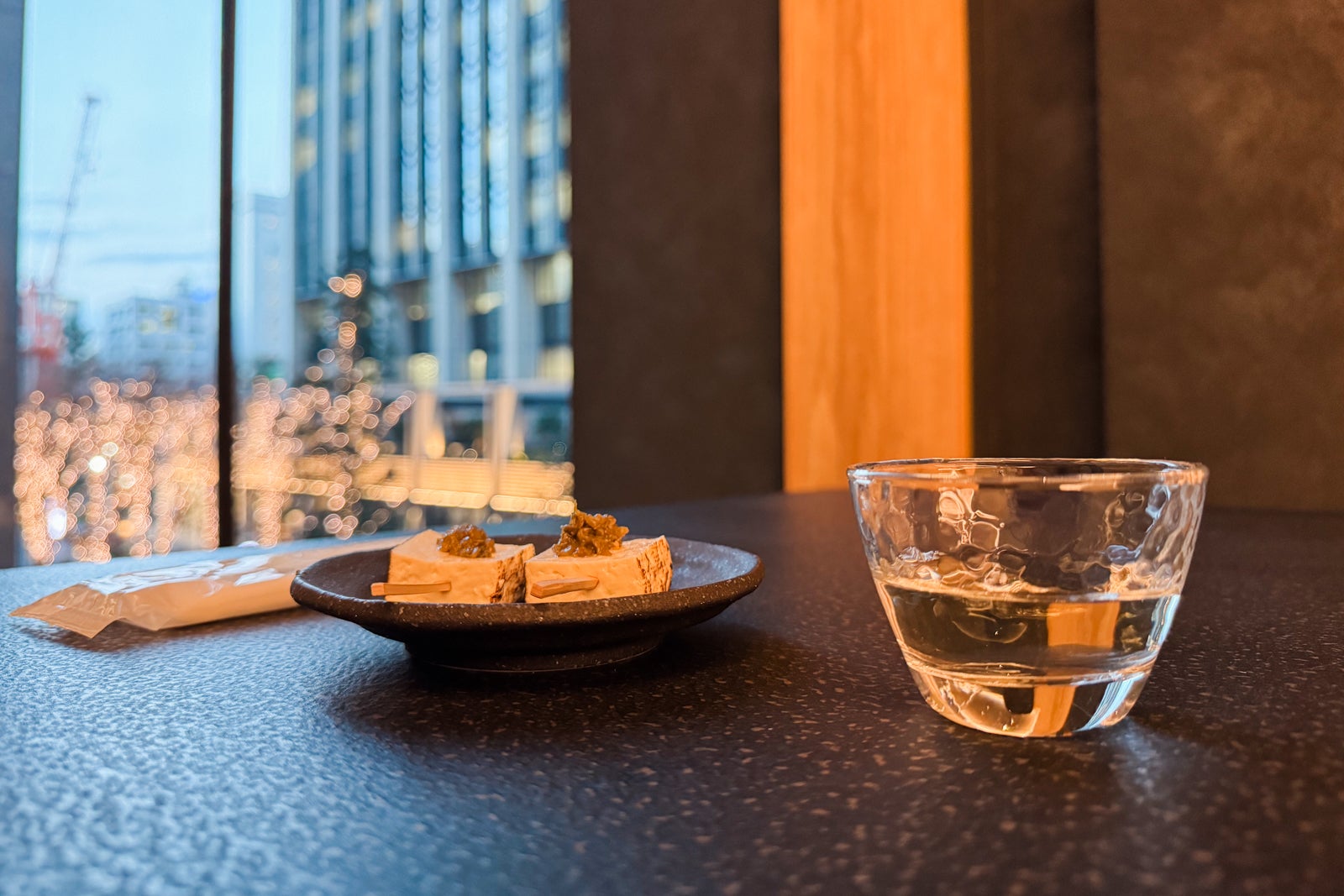
Rather, the dining experiences here are much more cloistered, with an aura of exclusivity and even solitude, especially if you’re traveling solo. Meals are served in your accommodations, or, in the case of afternoon tea and dinner, in private and semi-private dining rooms at the hotel’s formal restaurant, Nippon Cuisine.
Guests can reserve a Japanese or Western breakfast ($33 per person) delivered to their room at a set time each morning, served in a bountiful bento box-like presentation. The Western option includes various pastries with butter and jam, fresh fruit like strawberries and citrus, yogurt, steamed and pickled vegetables and a main of eggs cooked to order with a side of sausage, plus a choice of juice and tea or coffee.
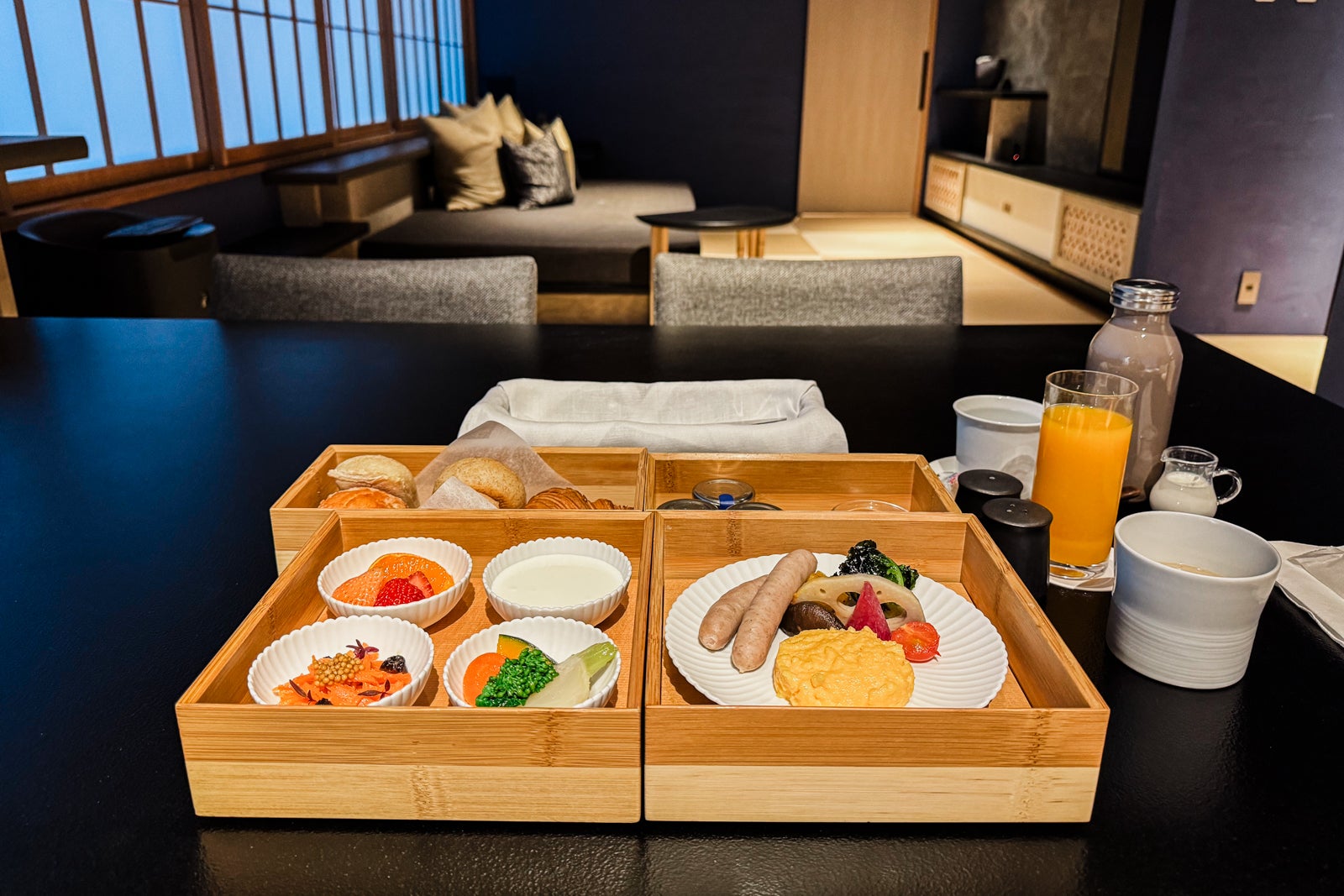
ERIC ROSEN/THE POINTS GUY
The Japanese breakfast is even more alluring with nearly a dozen dishes to sample ranging from a tender filet of fish like miso-glazed black cod with lotus root, to beef with rice, fresh black seaweed, tender pickled sea bream, meaty braised octopus, pickled plum and radishes, seasonal fruits and a bowl of miso soup.
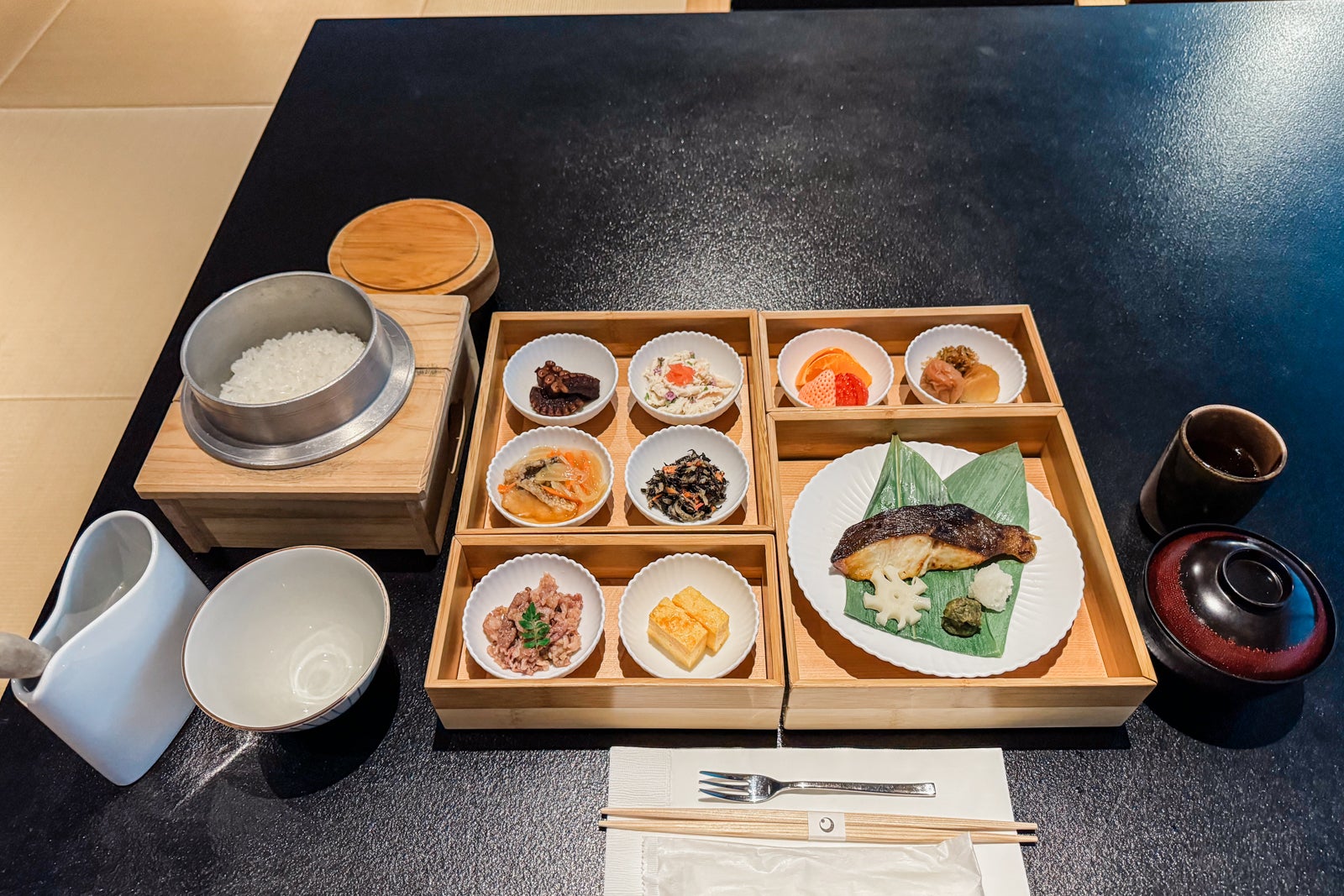
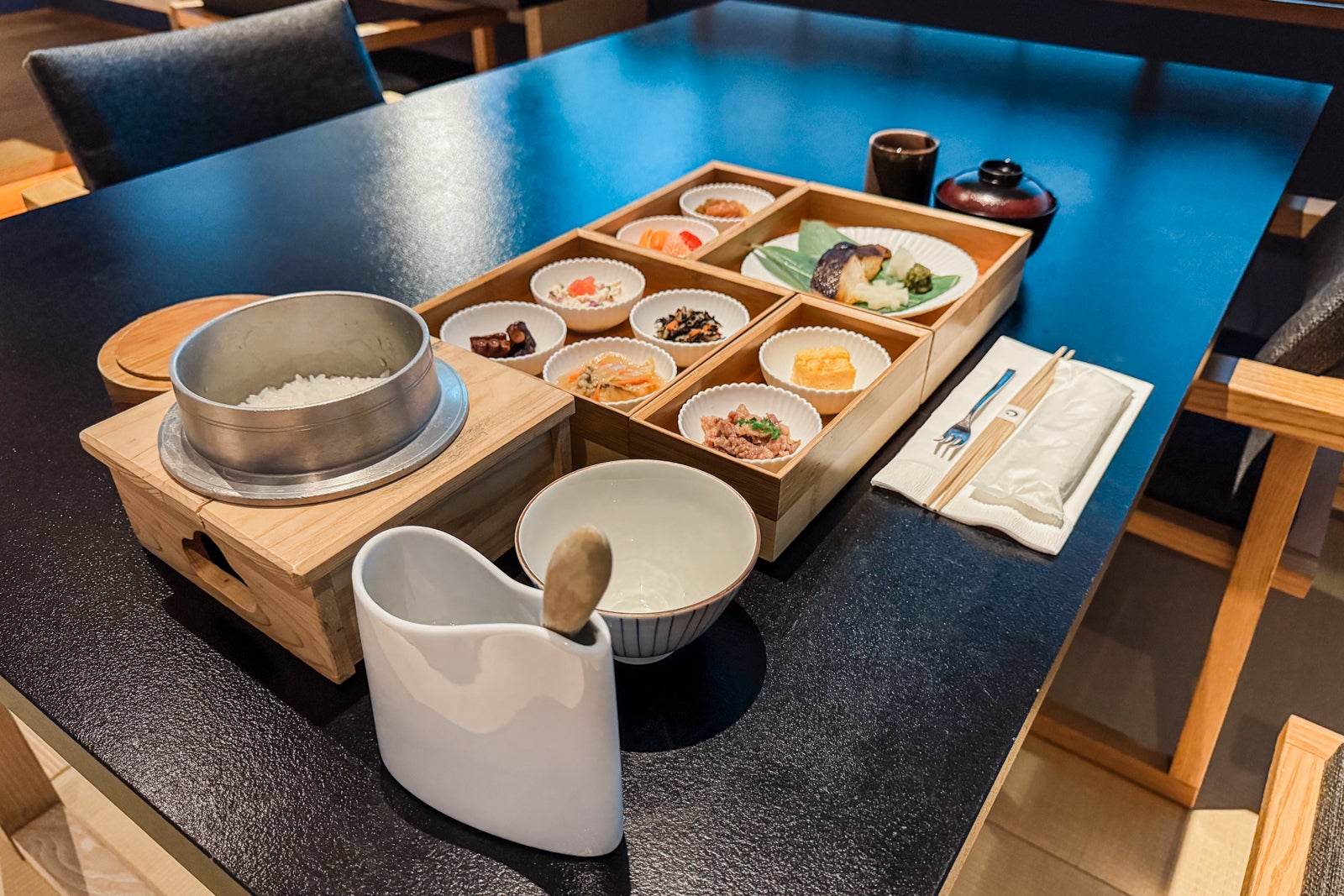
Open for specialty afternoon tea service from January-June, Nippon Cuisine is located below ground level with decor that speaks to its unique location, including walls that resemble the stone strata of Tokyo’s bedrock, wall-like features based on the foundations of Edo Castle and sculptural boulder arrangements punctuating the space. There are several tables in a semi-private area with see-through fan-patterned dividers between the tables as well as multiple private dining rooms for larger parties.
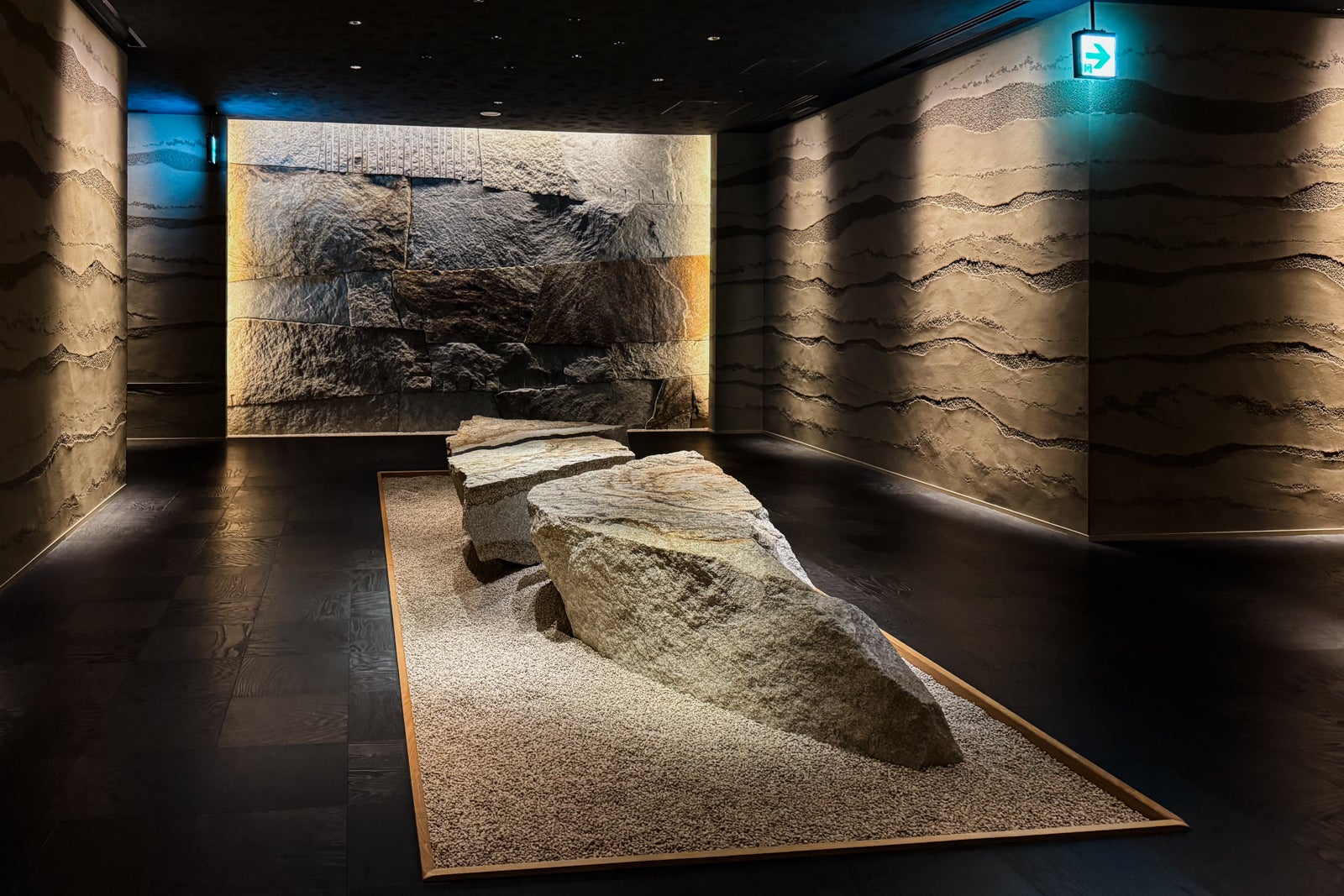
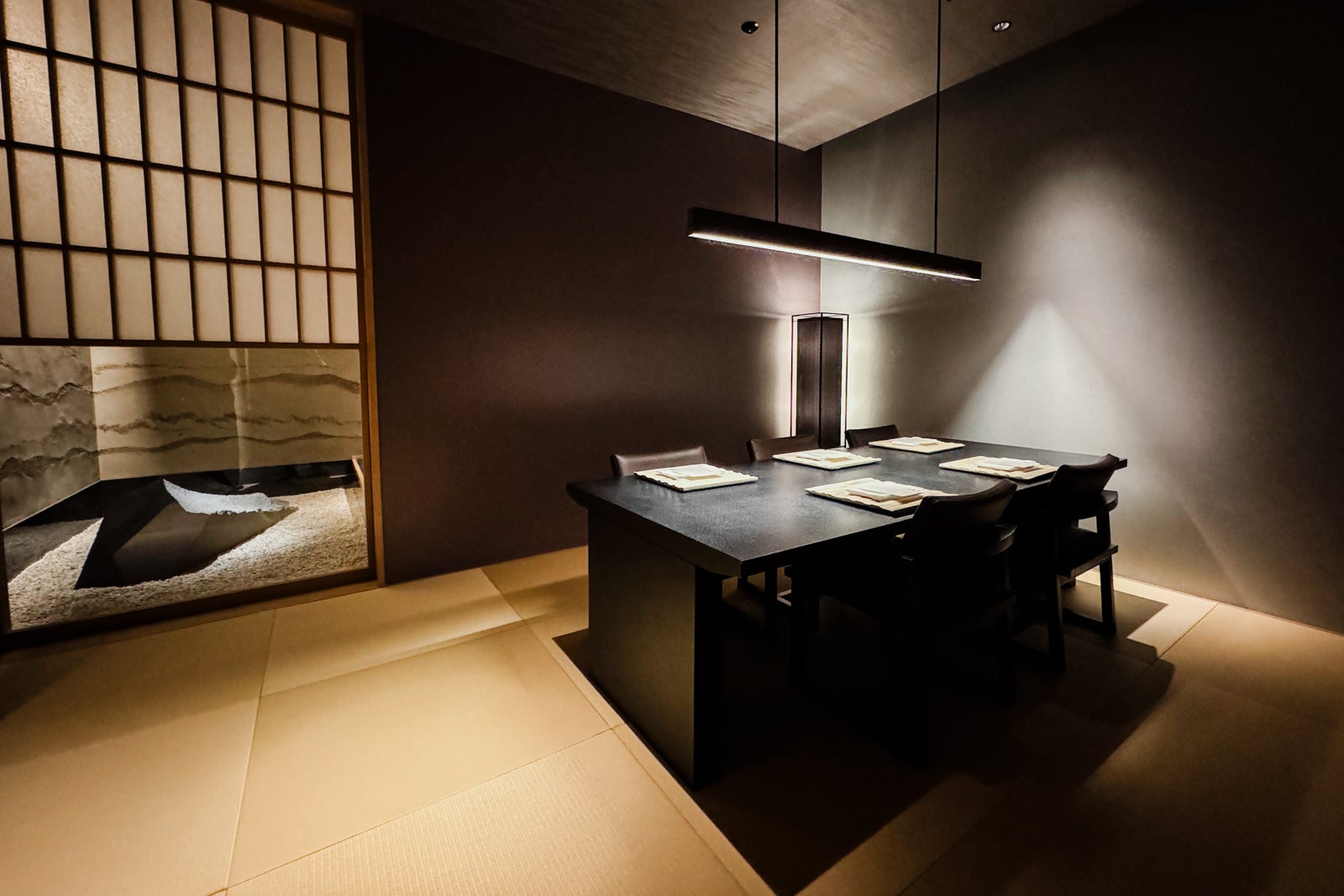
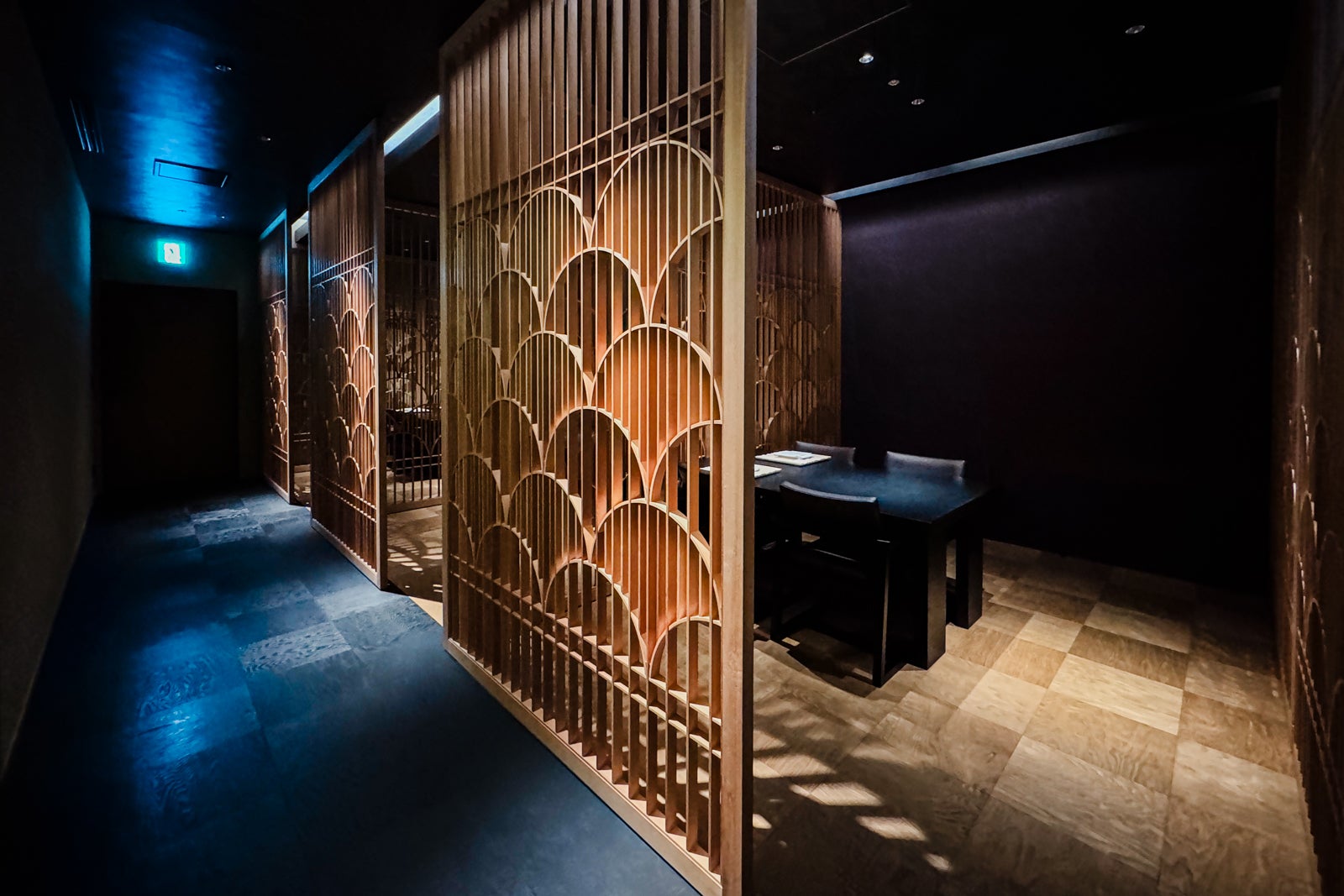
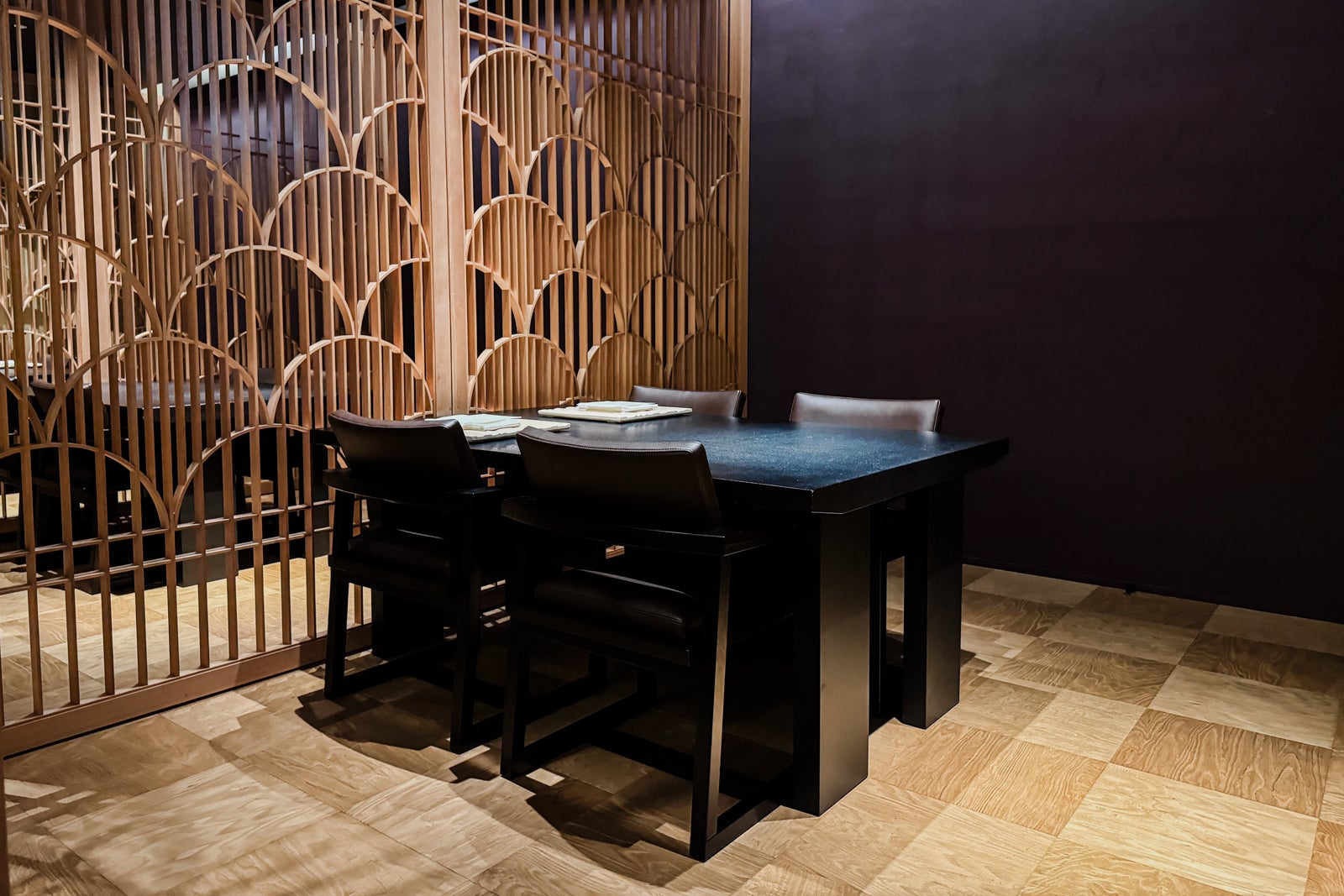
This is also the setting for sumptuous dinners of over a dozen courses served at a leisurely pace ($186 per person). Executive chef Ryosuke Oka reinterprets classical Japanese dishes with rigorous French techniques using produce and proteins of the utmost freshness sourced from throughout the country.
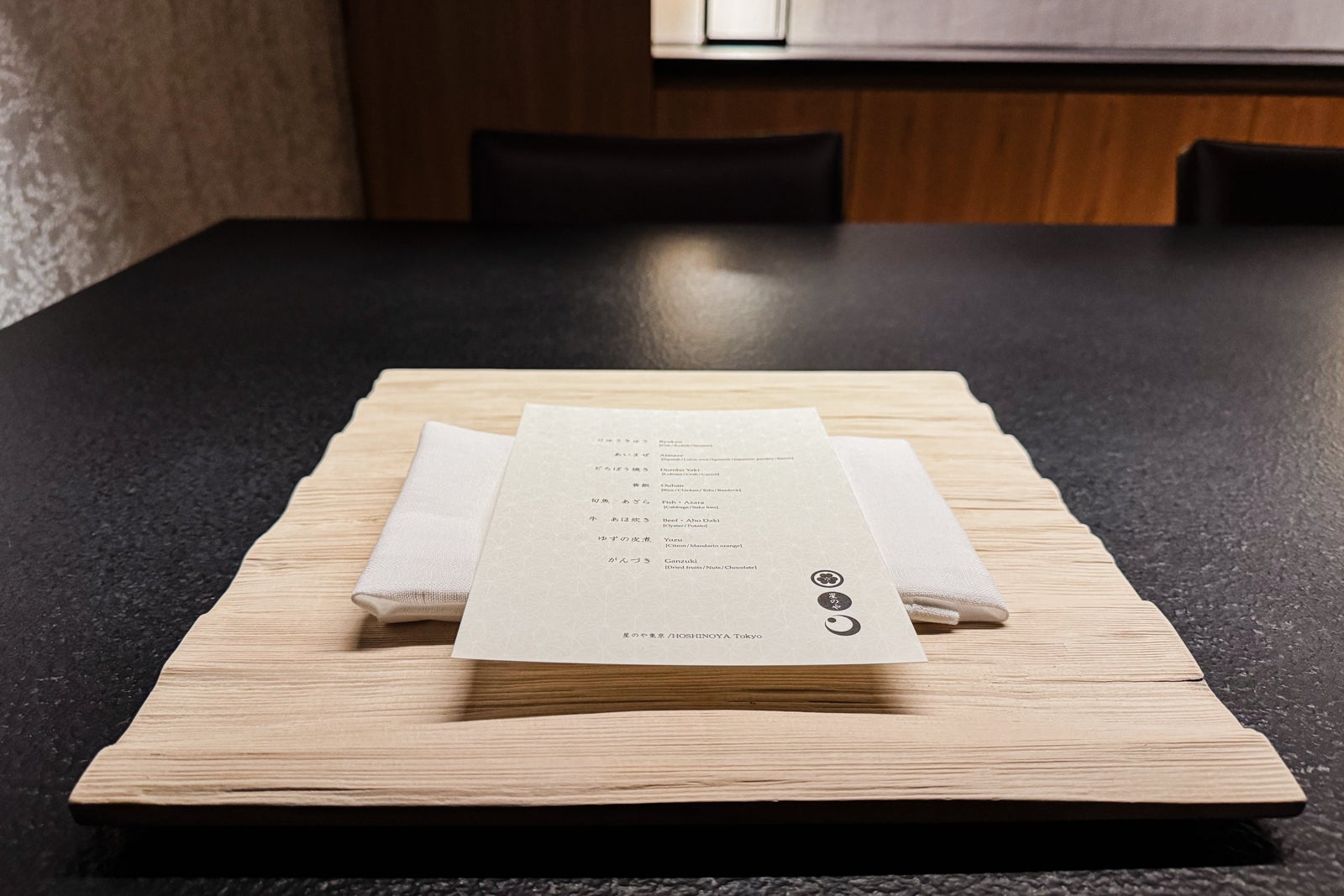
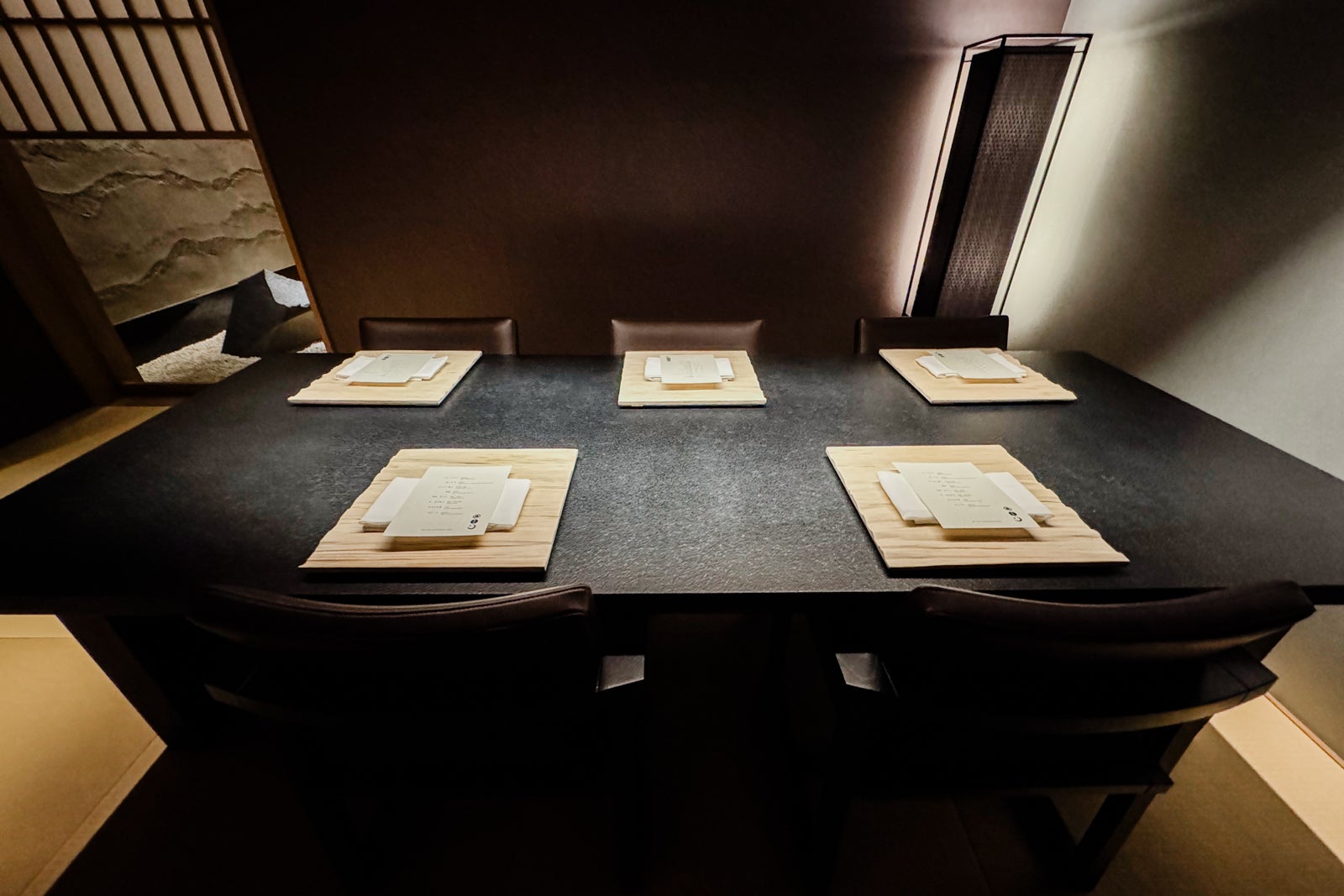
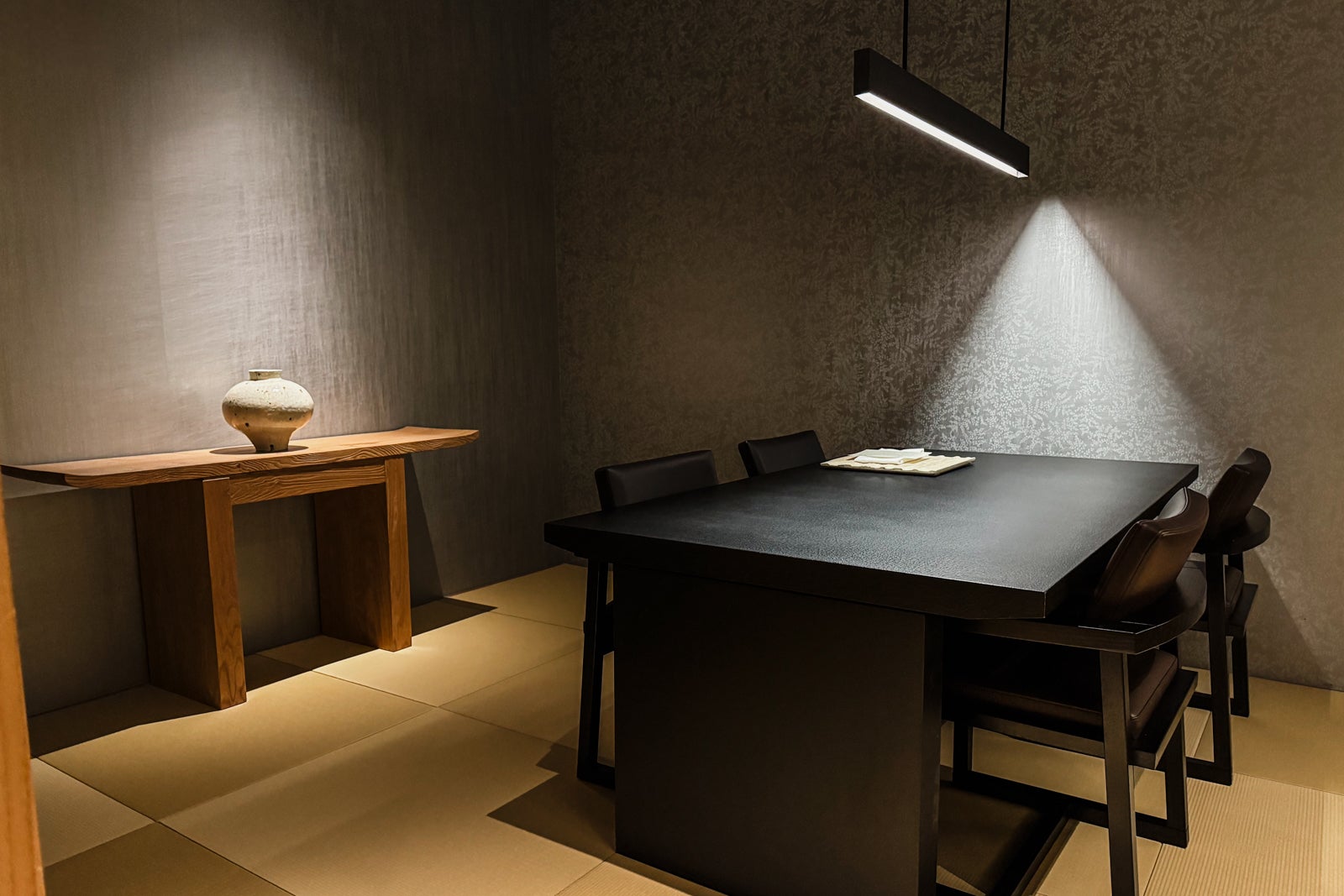
Your meal might start with an amuse of Japanese caviar with smoked egg yolk and unagi over a soba galette paired with light-bodied Kokuryu Kijoshu sake followed by a delicate bite of slow-cooked squid over earthy cauliflower and a tangy Shizoka cheese tartlet with black truffle.
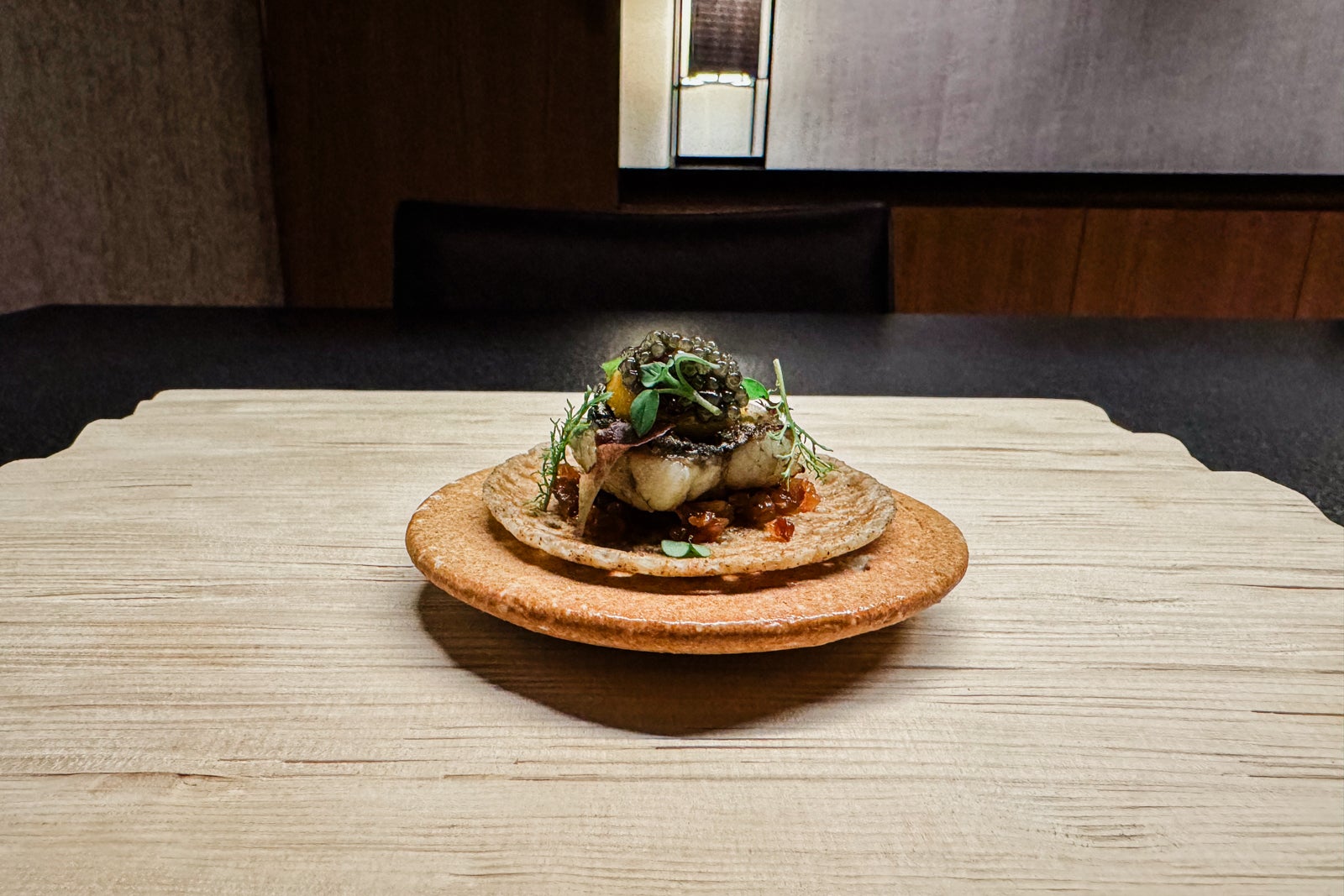
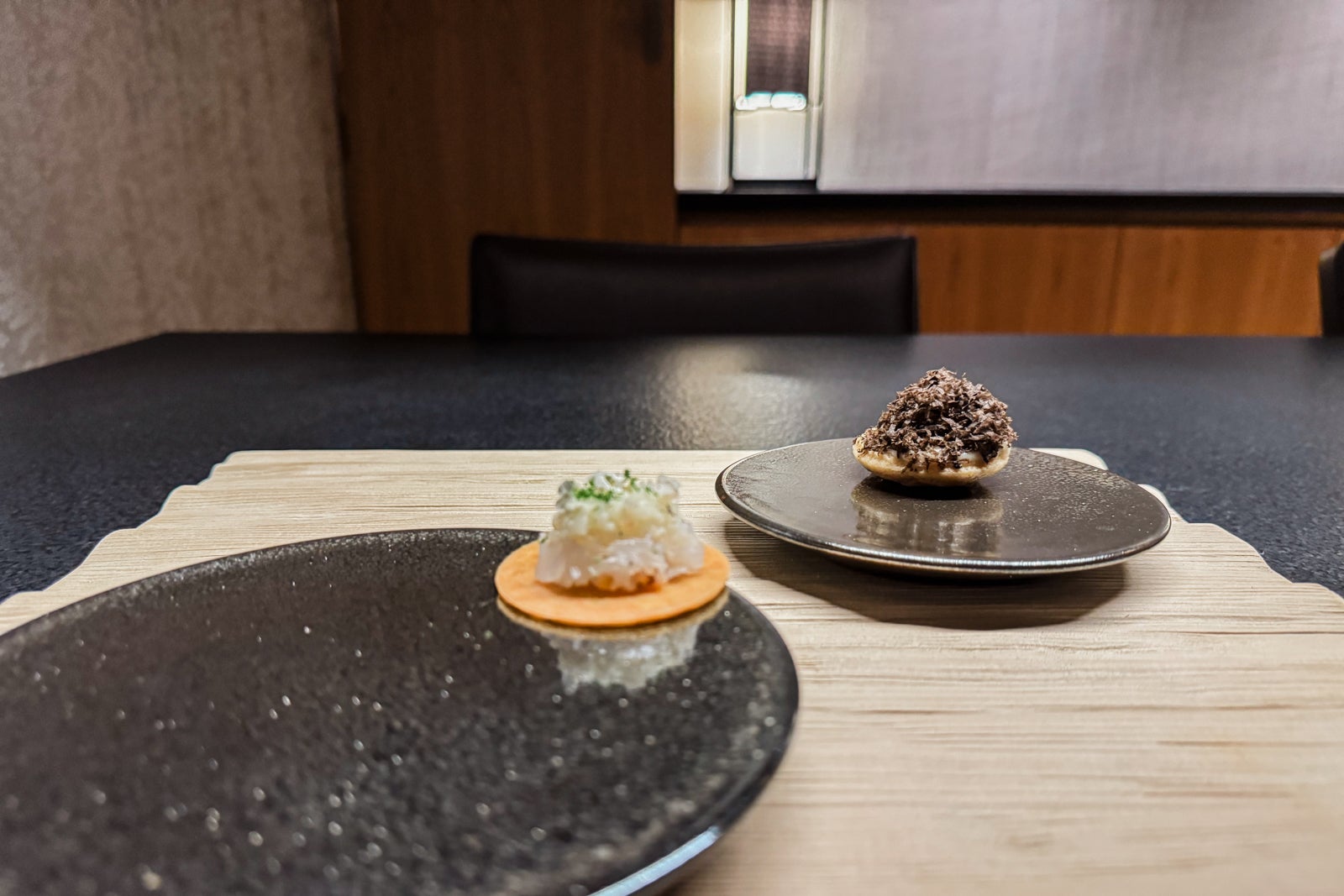
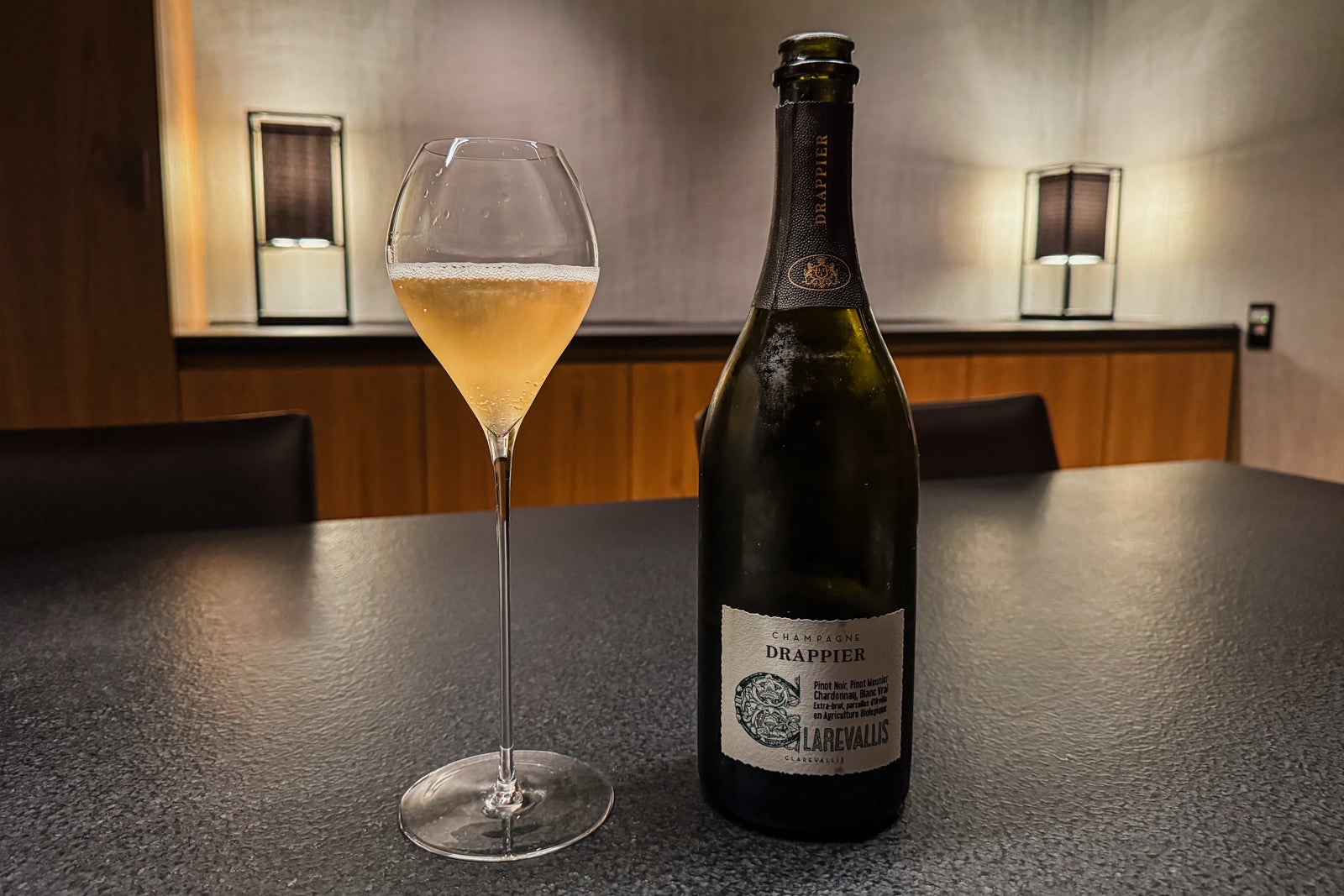
Some dishes are plays on traditional Japanese fare, including a fish snack that fisherman from Oita on Kyushu might enjoy but that here consists of flounder and mackerel marinated in sake and soy sauce with radish and endive tucked away under a filigreed sesame tuile.
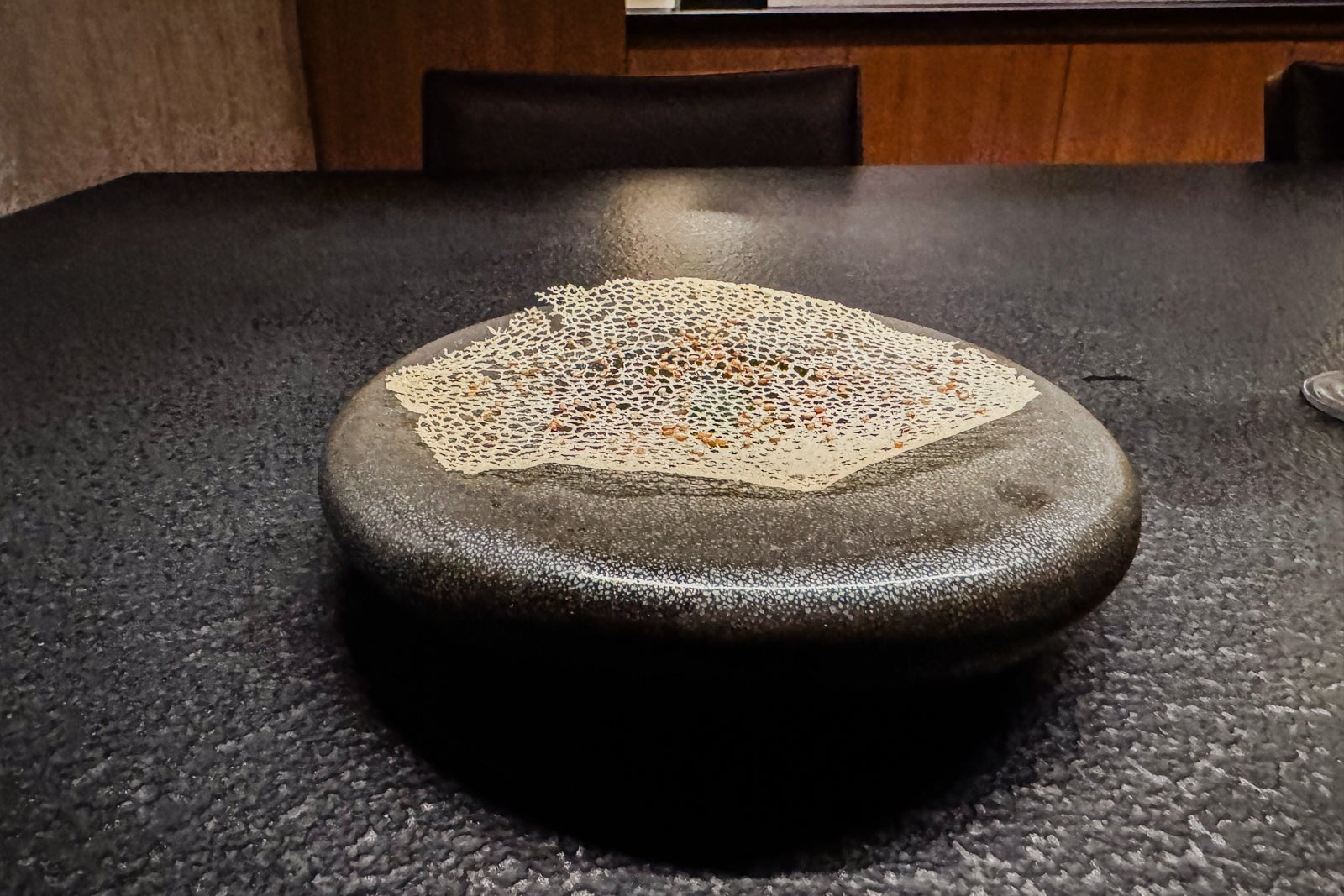
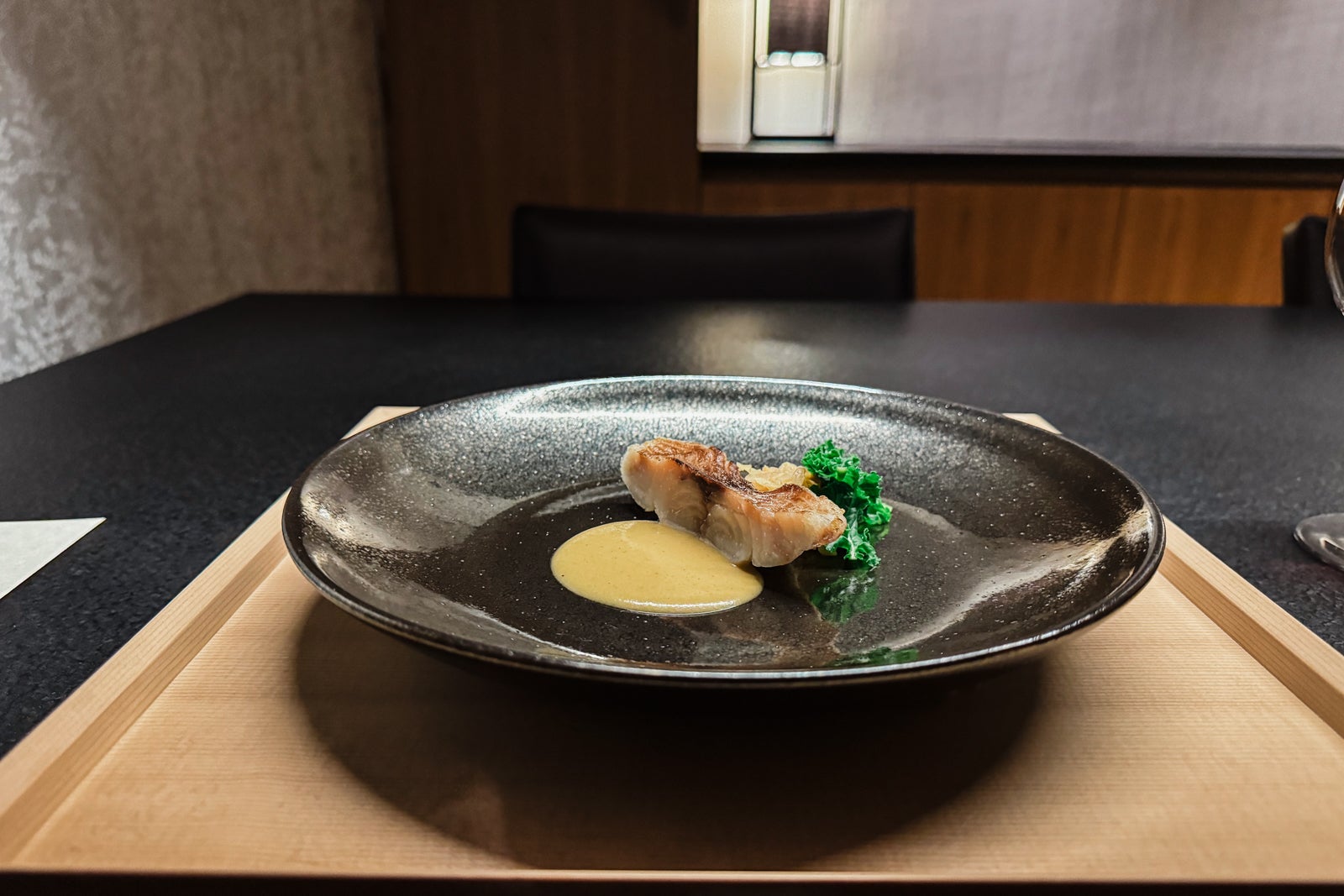
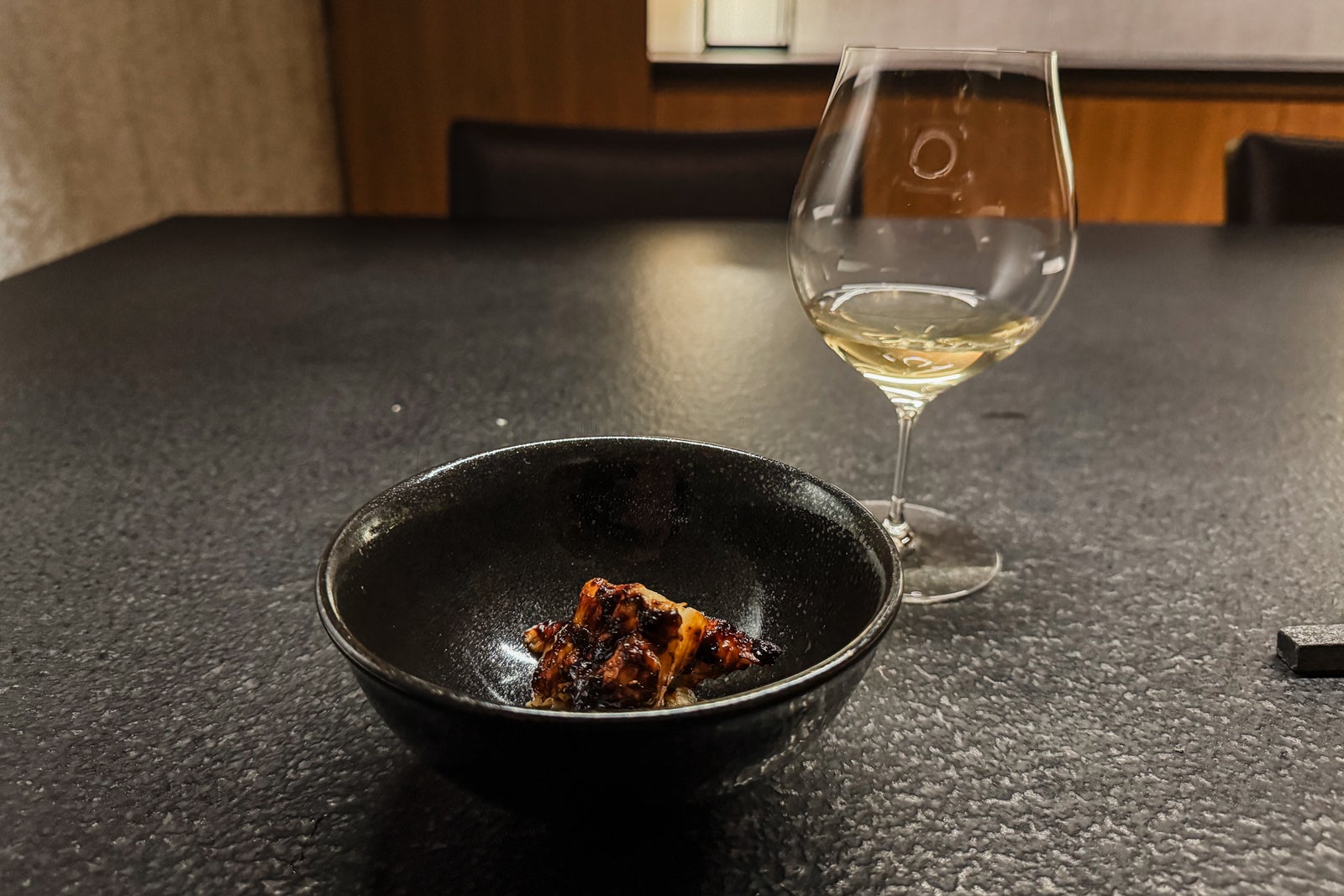
You might find yourself tucking into luscious lobster from the Mie Prefecture, braised in miso with onion and mustard seed and topped with coal-grilled crab in a creamy cheese reduction over heirloom carrot spaghetti, sort of like a Japanese lobster thermidor. Push on for bites of ling cod-like mejina, then hearty rice-based ayamase (like paella) with thick-cut bacon and celery root before a finale of luscious cuts of wagyu finished over charcoal with confit oyster and mashed potatoes.
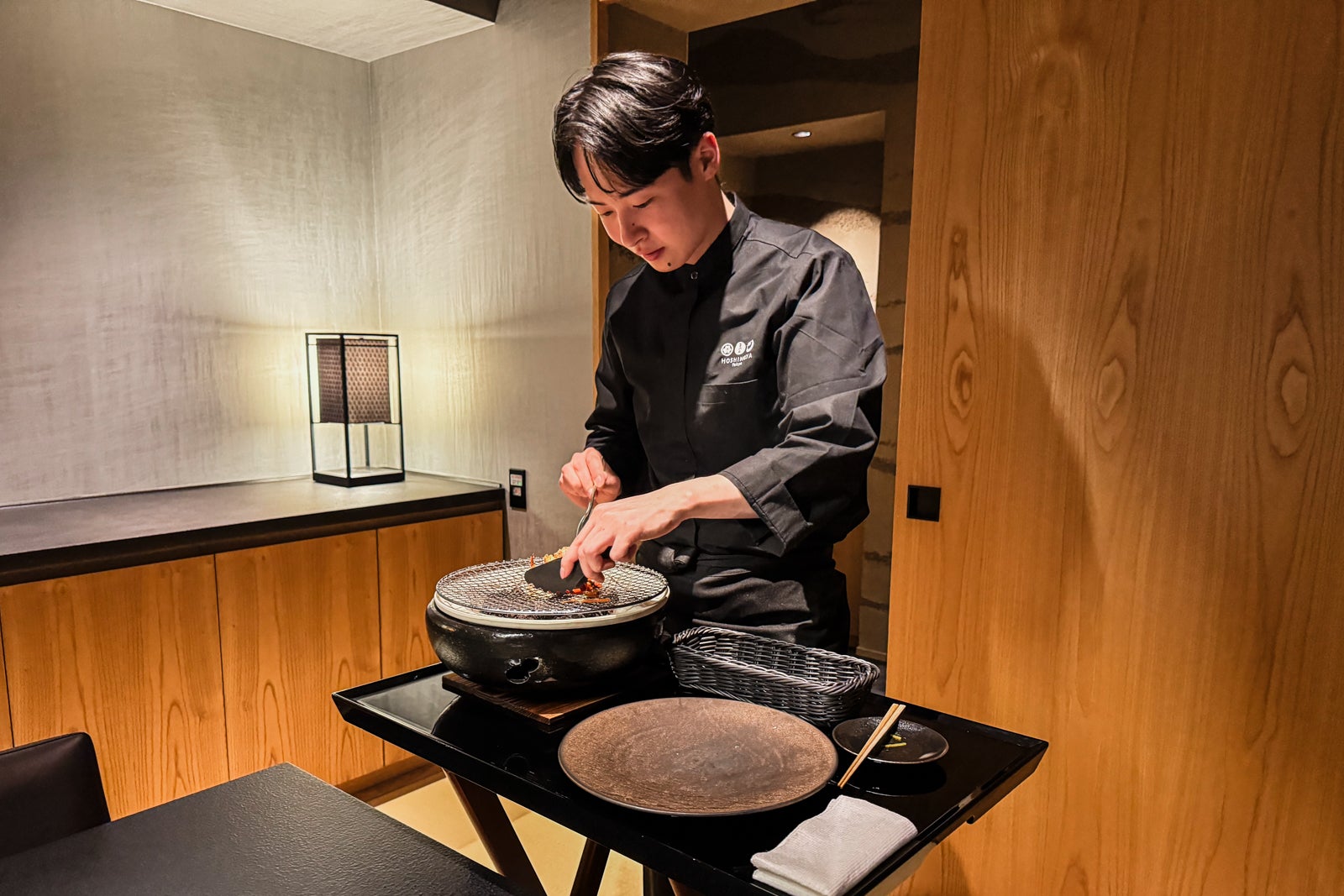
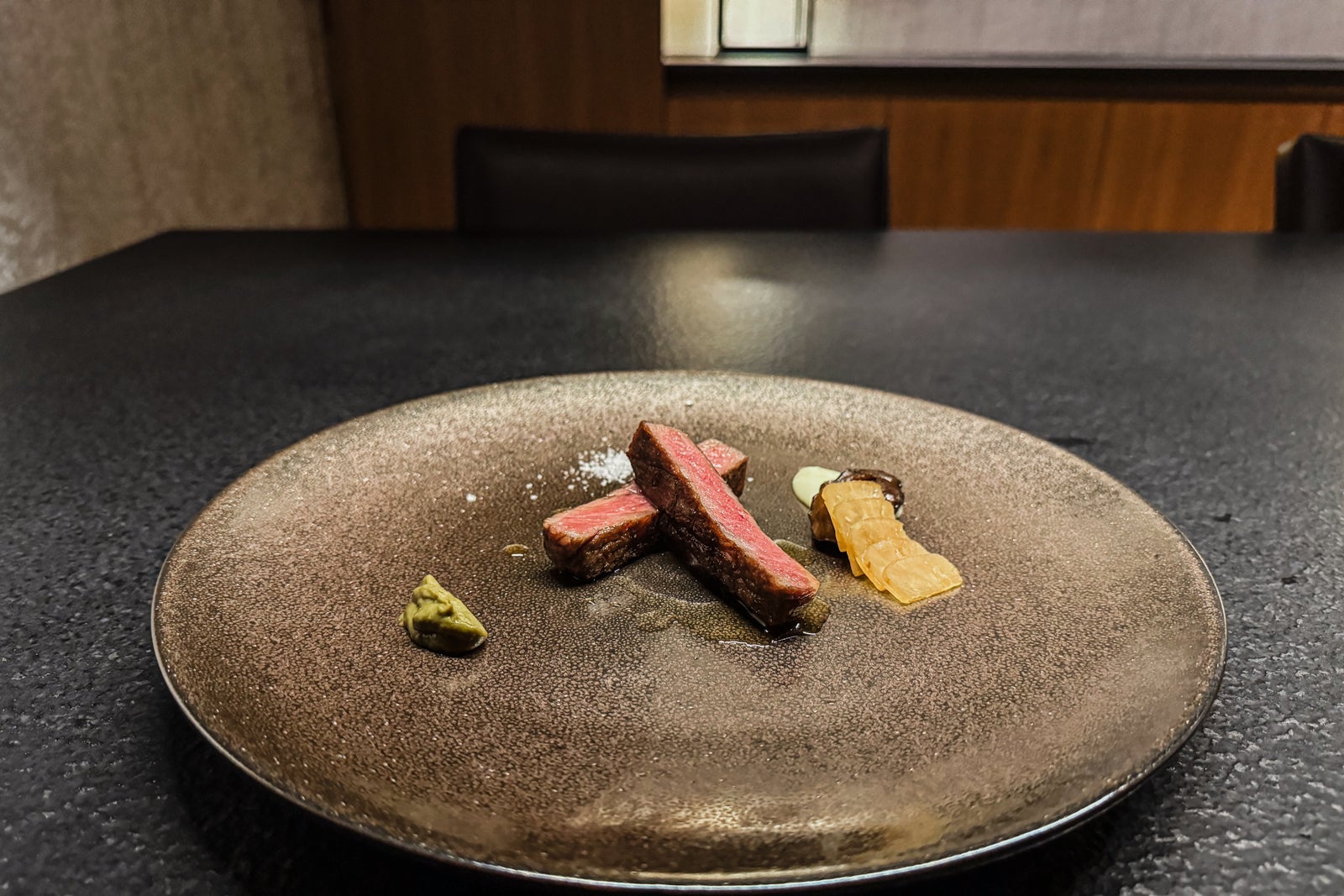
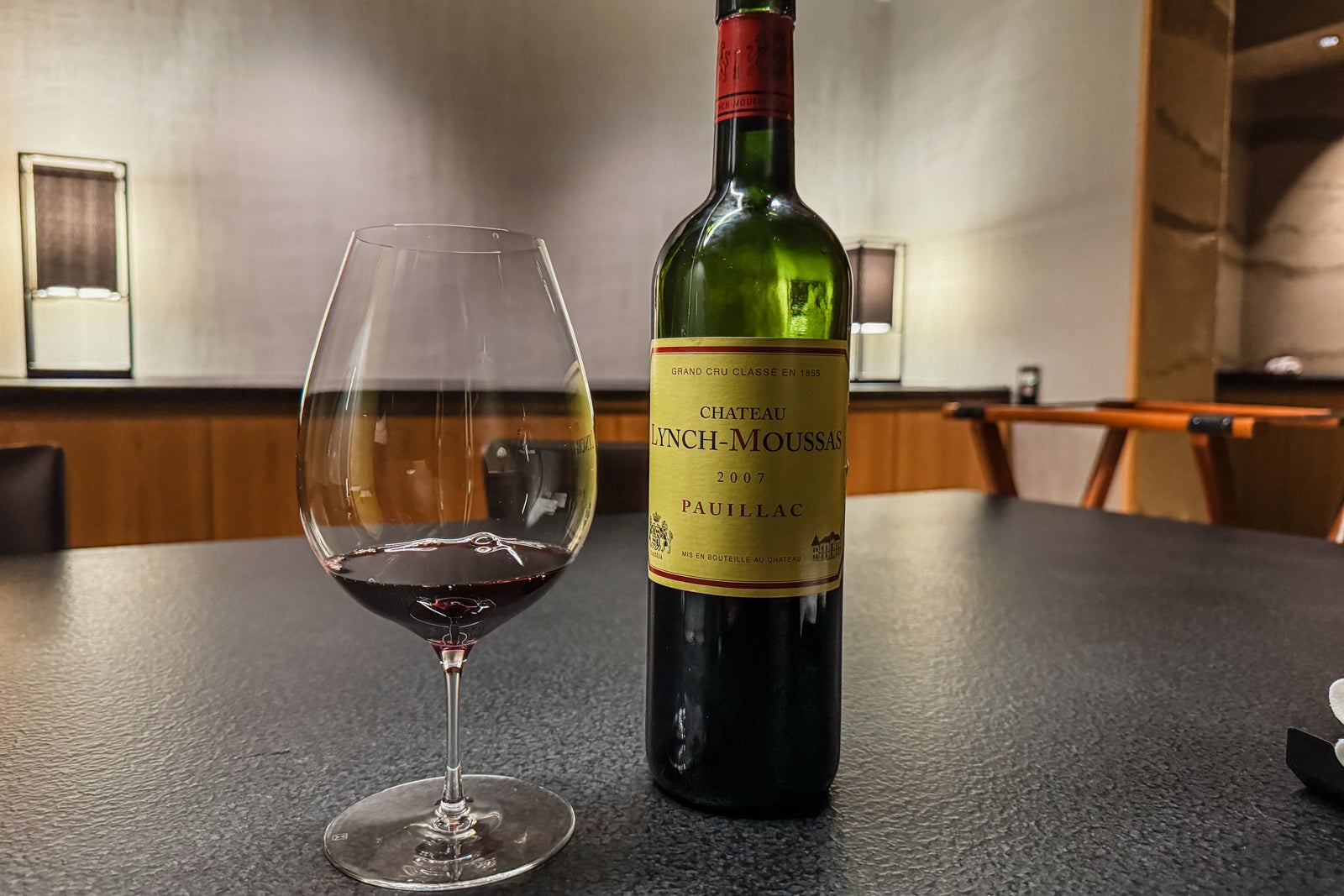
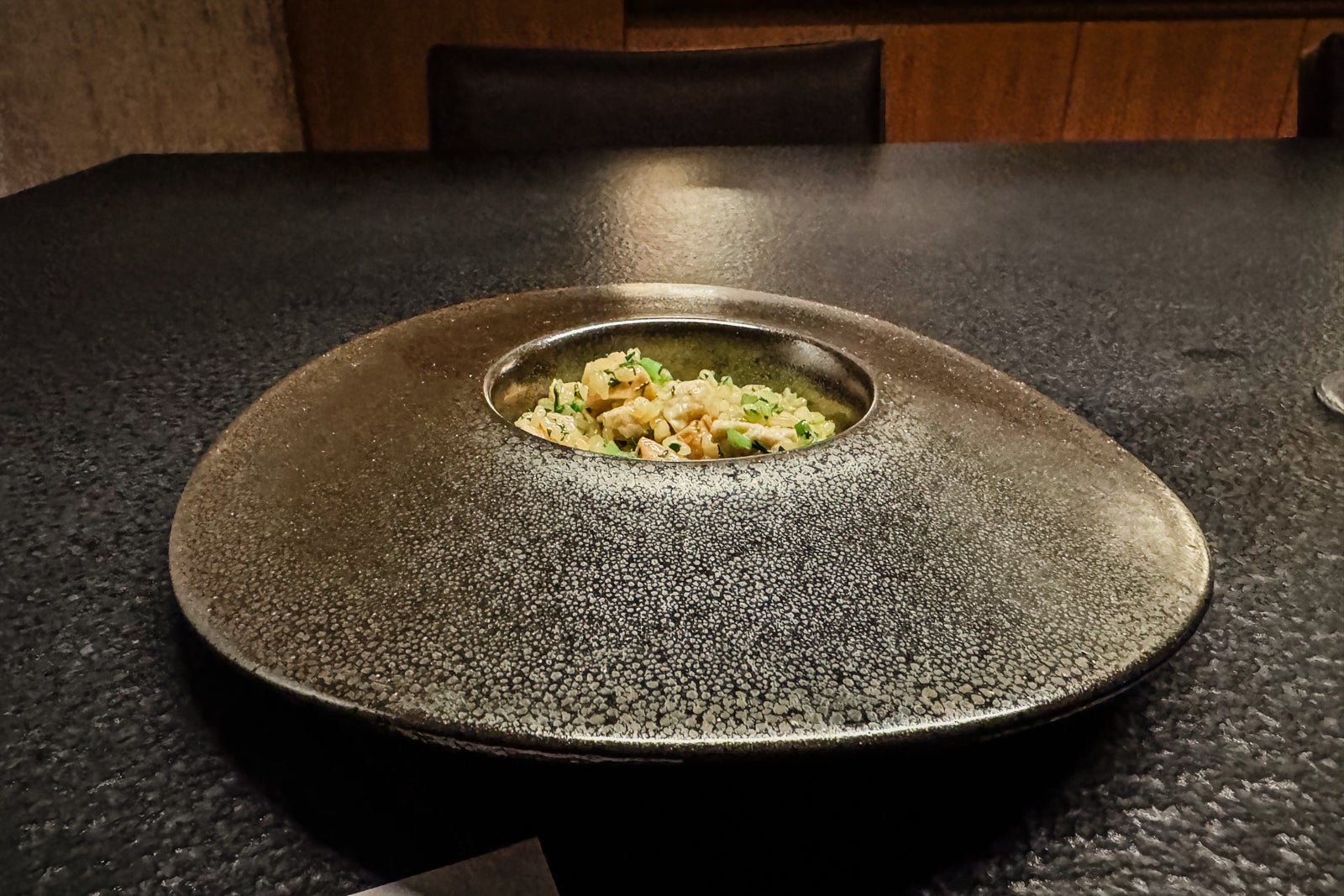
For dessert, there could be fluffy ganzuki bread pudding with dried fruits, nuts and chocolate topped with a whiskey sauce and light-as-air dorayaki pancakes made a la minute.
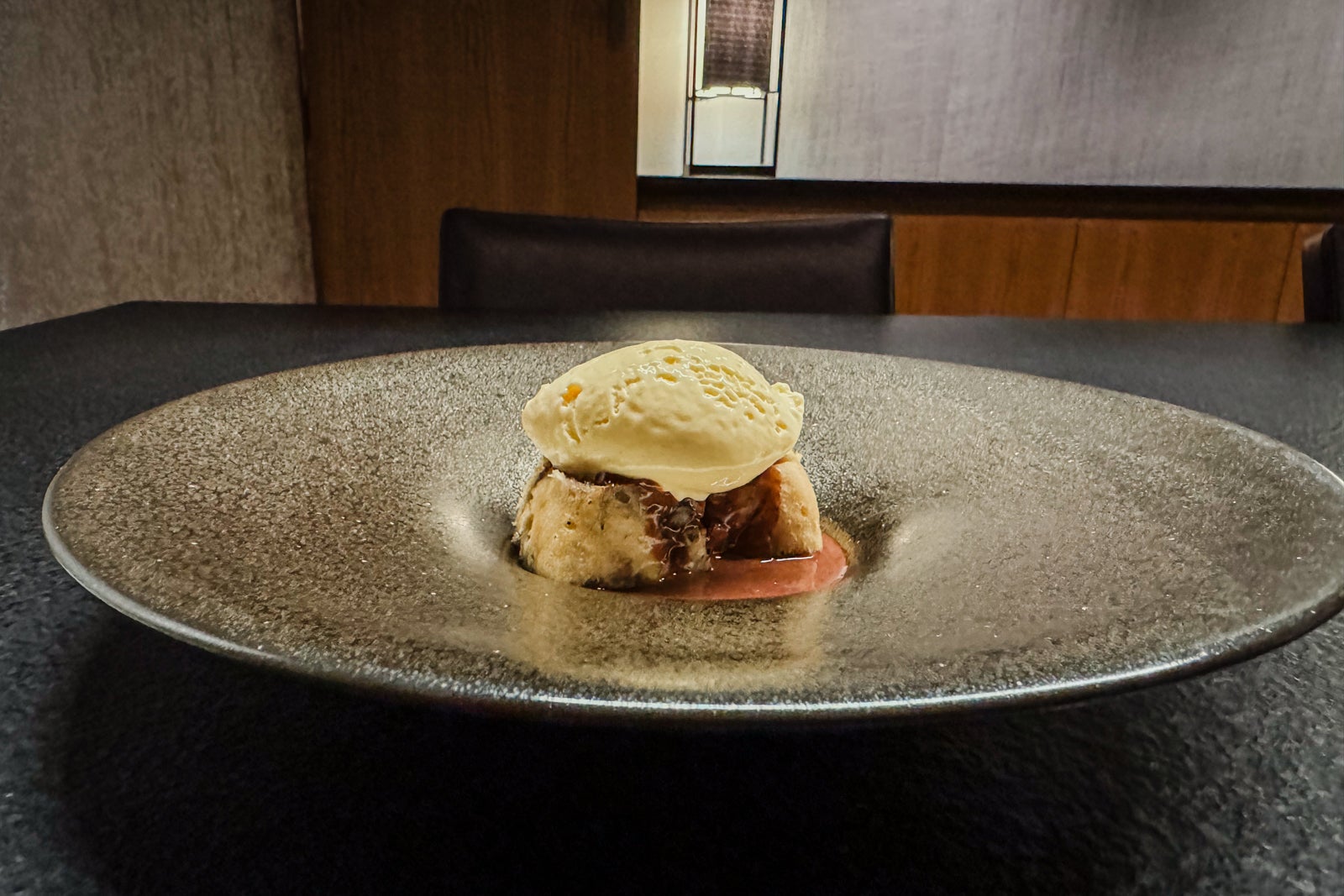
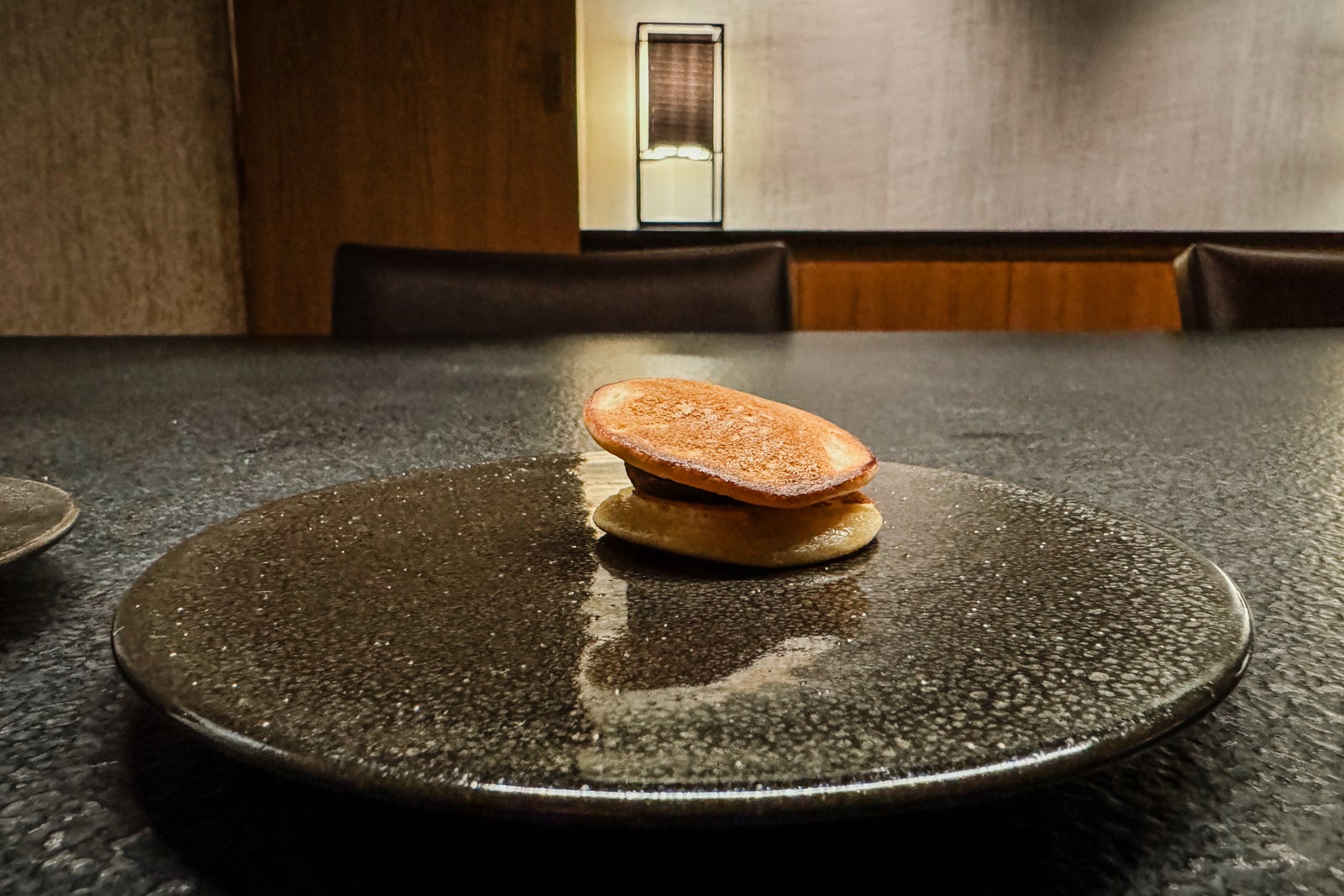
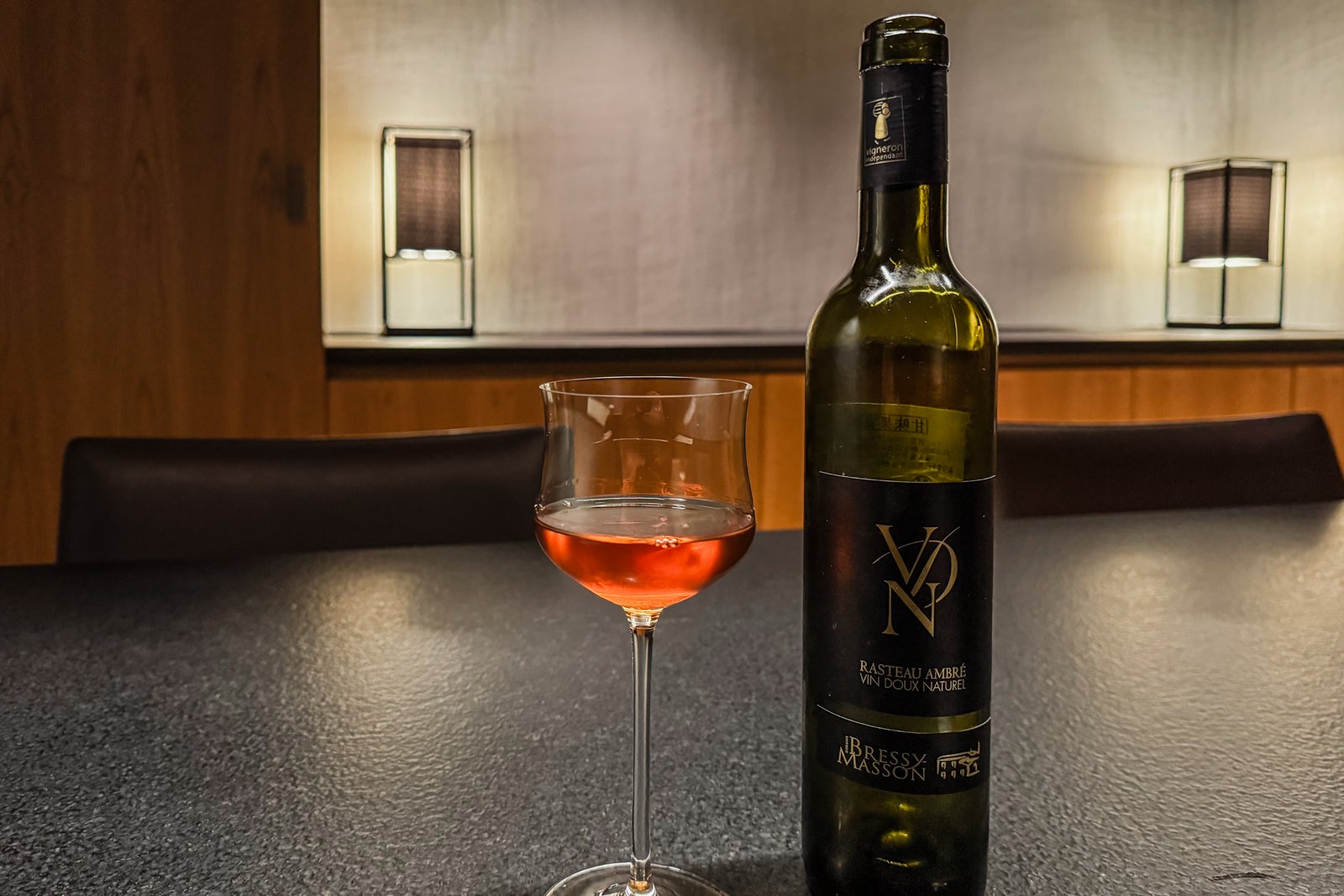
Make a full evening of it by selecting the coursed-out wine pairing ($80) so you can enjoy tastes of Greek Assyrtiko, German Sylvaner and Spatburgunder and Medoc from France among other libations. The international variety of vintages is impressive and well worth it.
menities and serviceMuch of what sets Hoshinoya Tokyo apart from the city’s other luxury hotels is the uniquely Japanese sense of hospitality that permeates nearly every experience at the hotel. Sure, there might not be a kitted-out gym or an all-day cafe to host colleagues, but that’s a small price to pay for the extraordinary (and extraordinarily high-quality) cultural activities the hotel has to offer.
From the moment you arrive — stepping from the busy city streets into the hushed, bamboo- and cedar-paneled arrival corridor — you are spirited away to a nostalgic kind of hotel stay where everyone you meet will greet you by name and have a cup of your favorite tea or a sweet treat waiting.
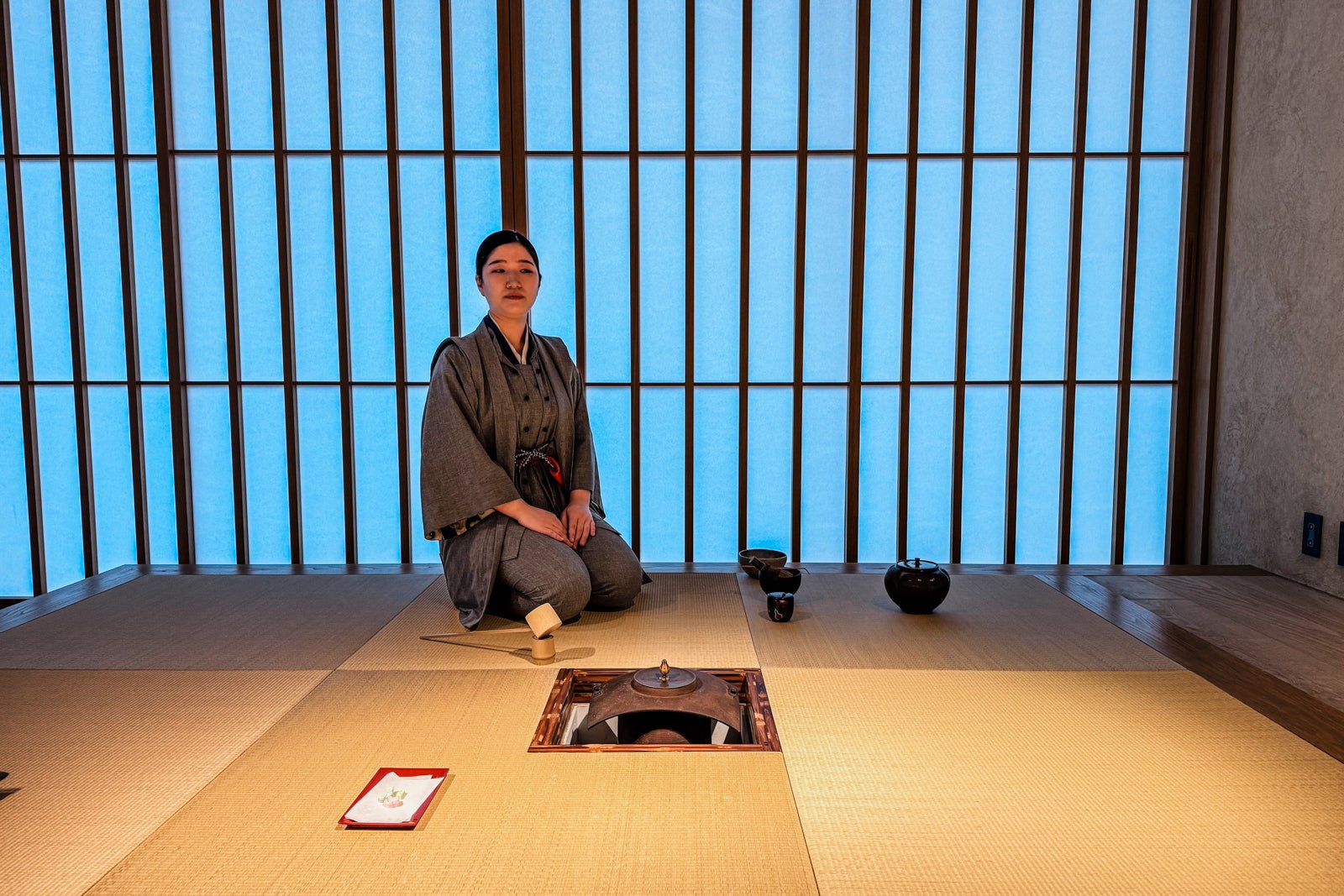
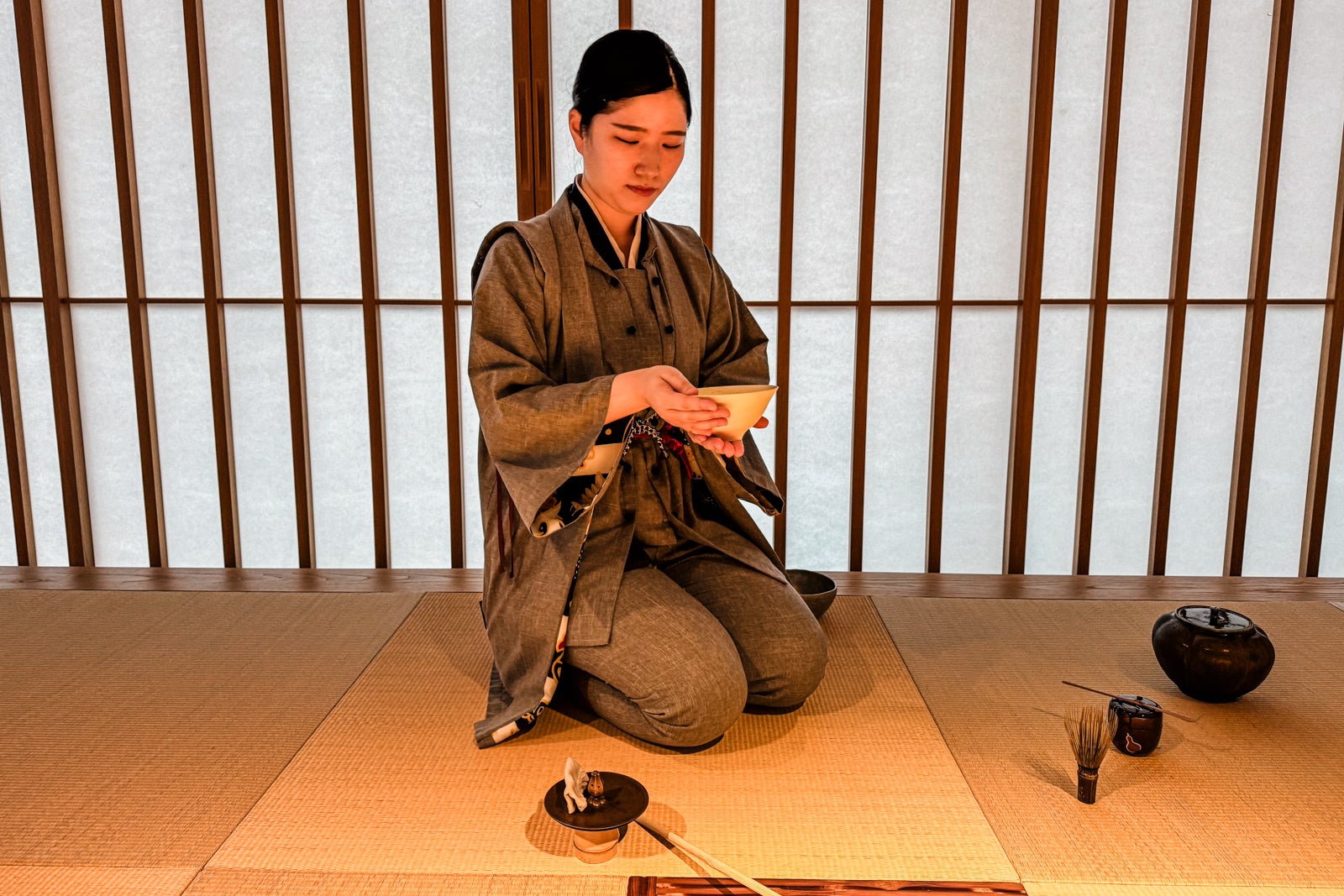
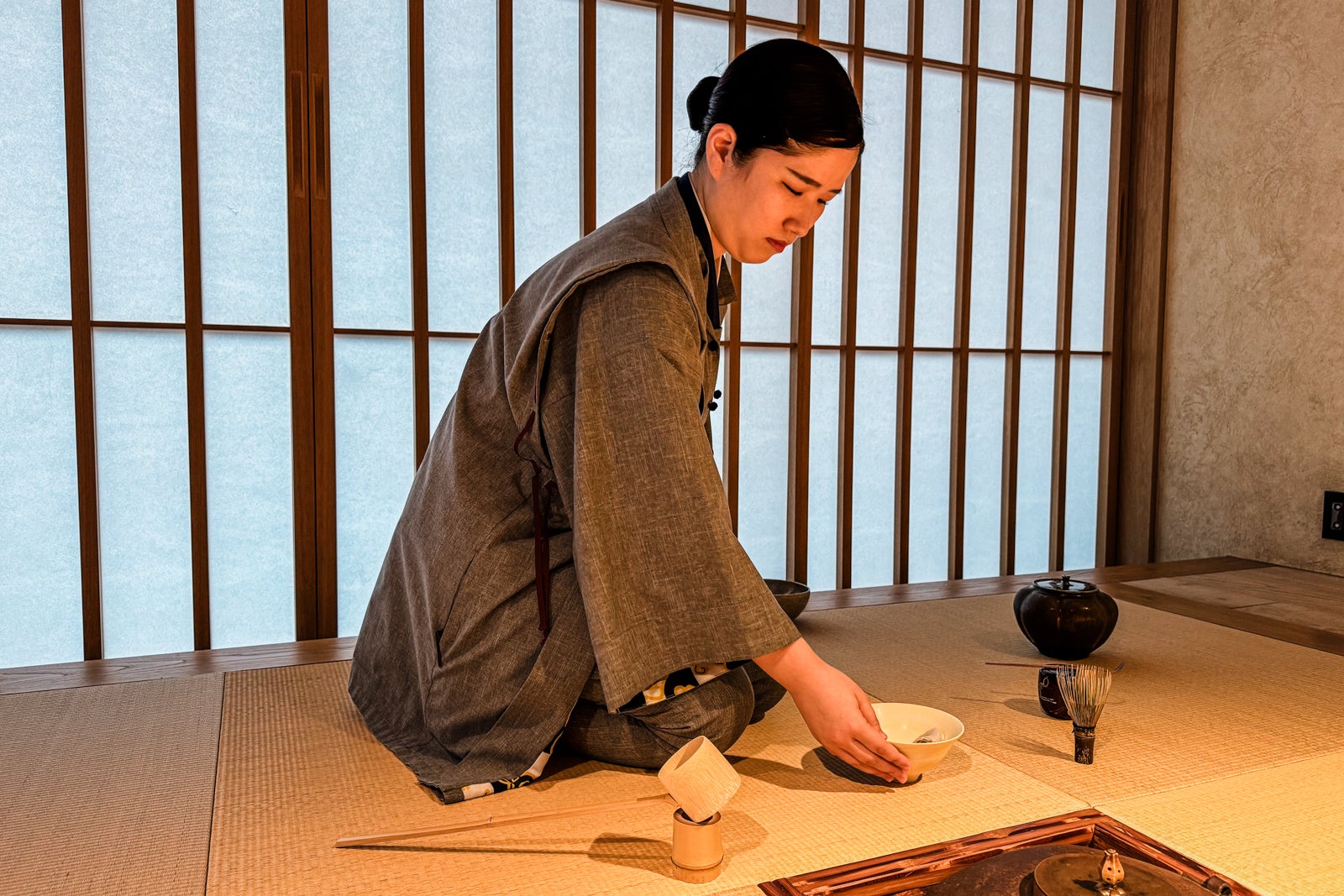
Guests can spend evenings in the reception lounge learning about sakes produced around the country, then return after dinner for a virtuoso gagaku recital. Those who wish to delve deeper into Japan’s culture and capital can book signature experiences like a private tea ceremony ($64 per person) where you learn the minute details of preparation and presentation; or a (complimentary) dawn kenjutsu (Japanese sword fighting) lesson on a nearby rooftop, surrounded by Tokyo’s skyscrapers.
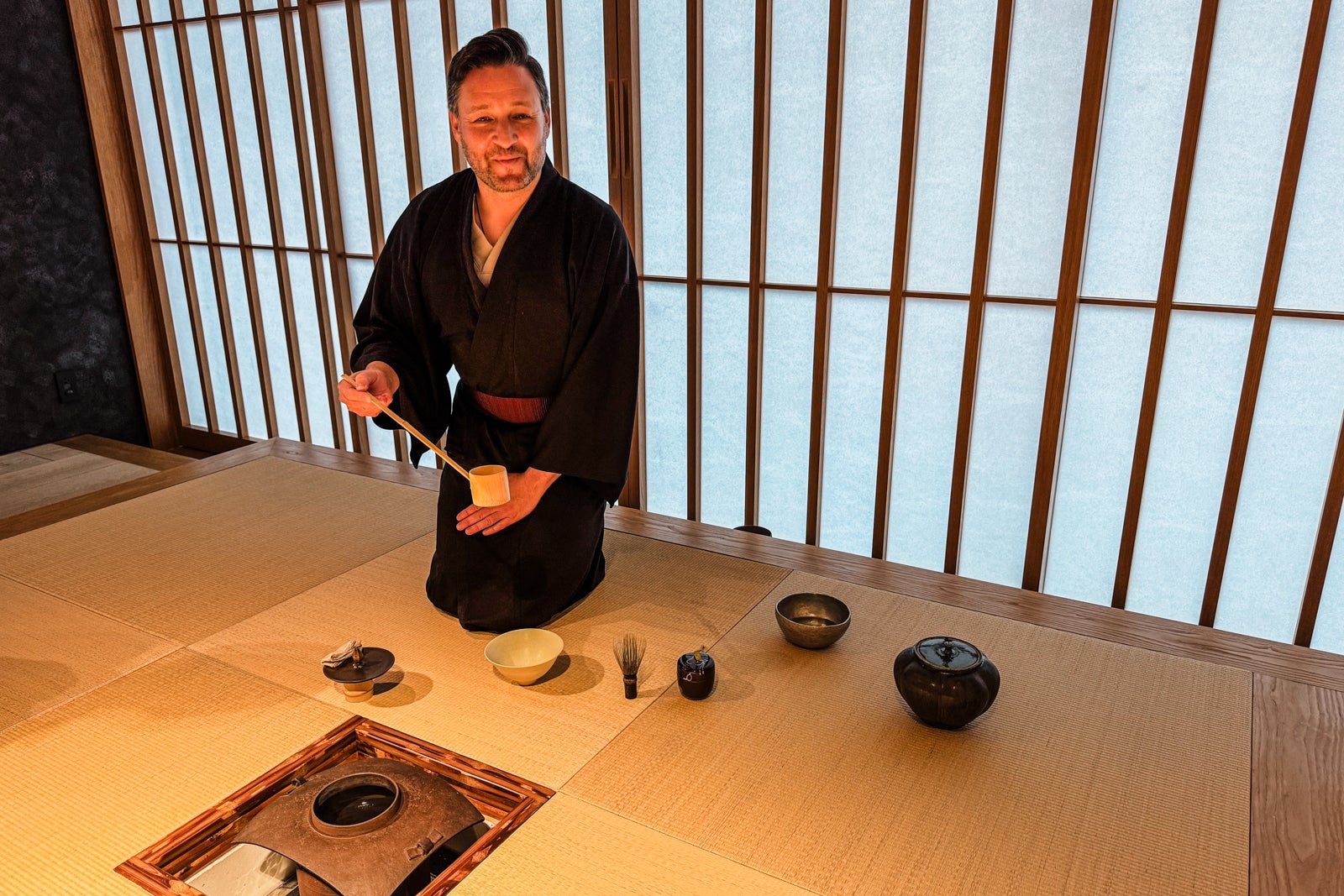
ERIC ROSEN/THE POINTS GUY
The hotel’s signature amenity, however, is its top-floor spa and onsen. There are separate men’s and women’s bathing areas where guests can disrobe in simple but fully equipped locker rooms with baskets for storing belongings.
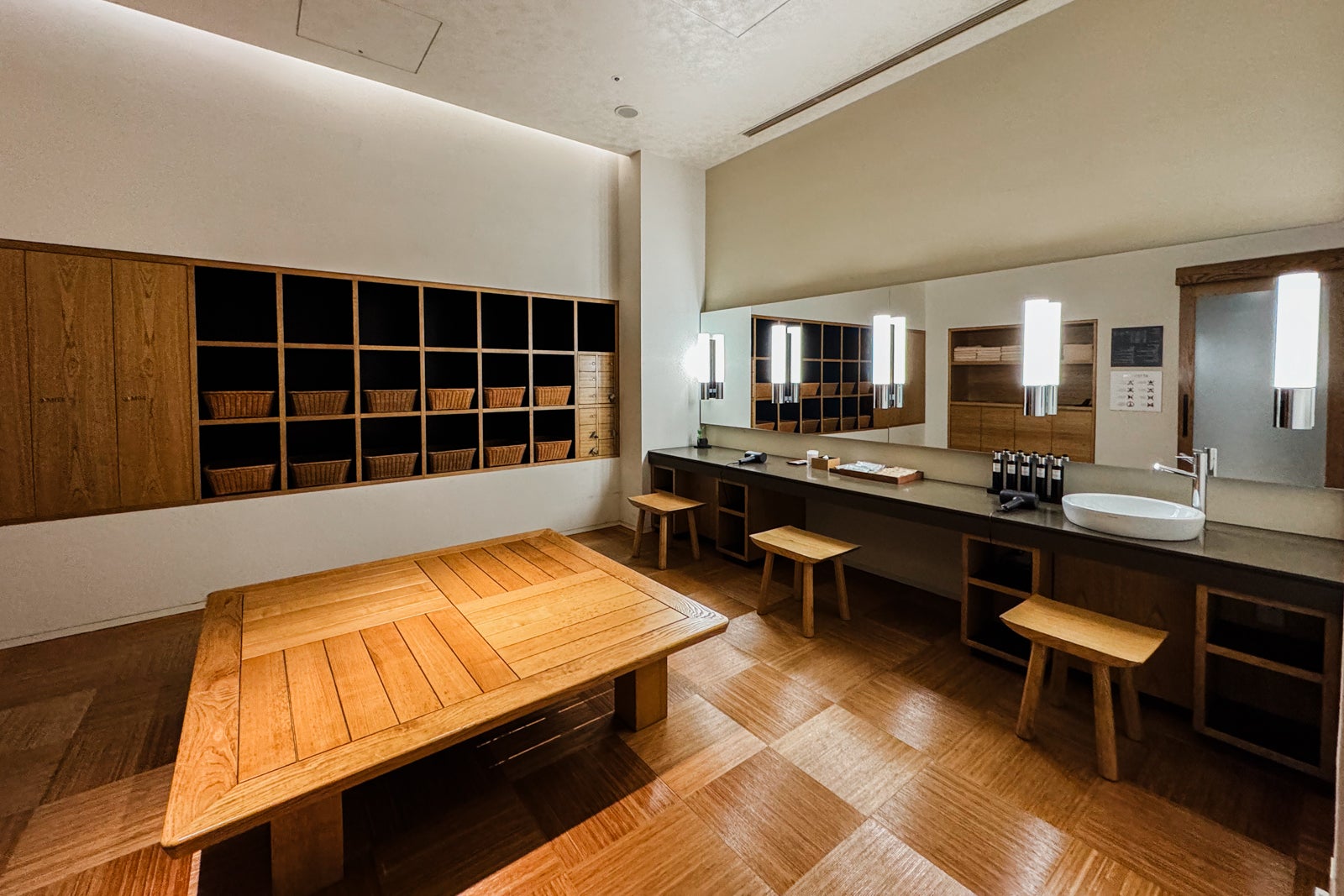
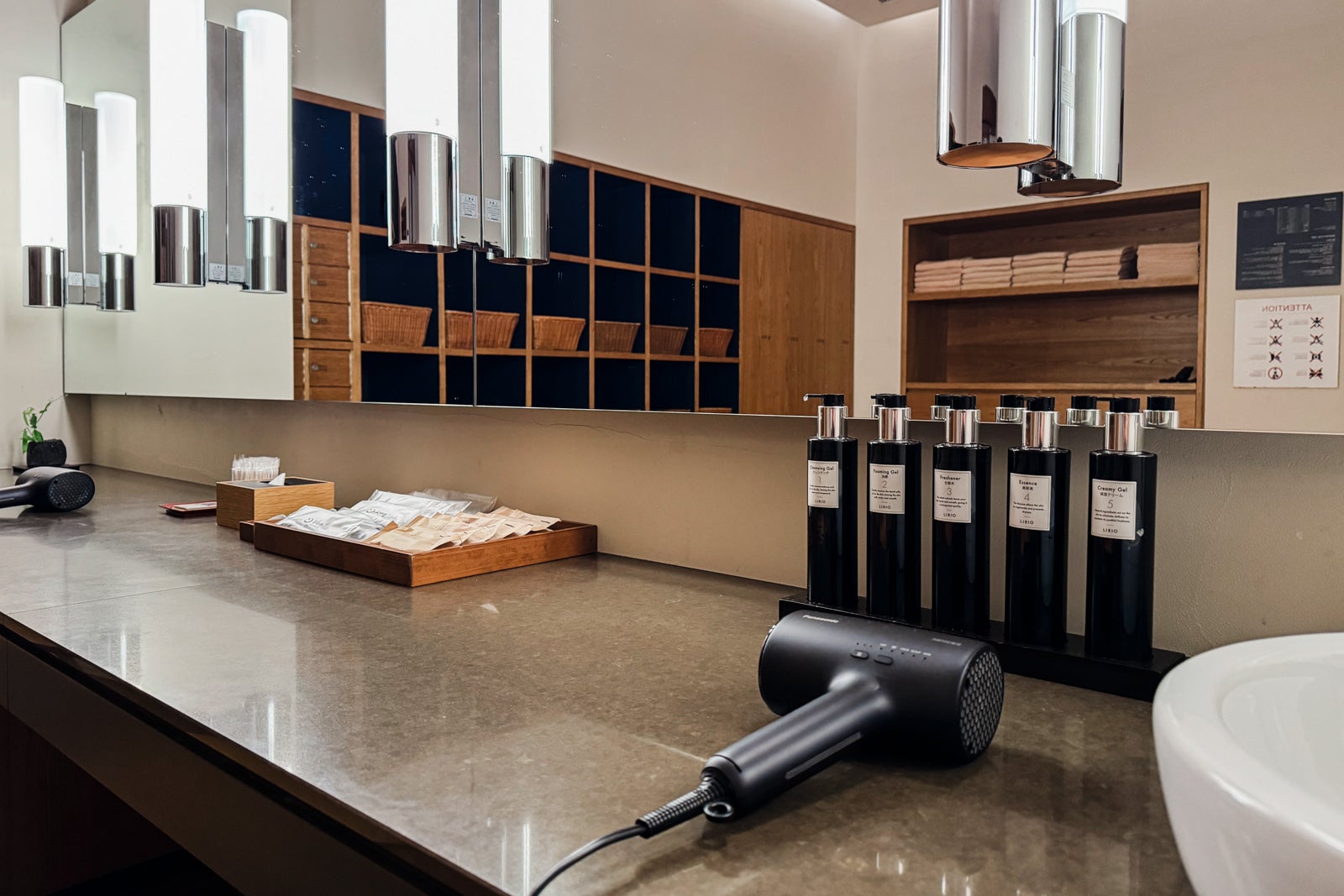
After a thorough wash in the shower area, complete with stools and buckets for full-on ablutions, slowly immerse yourself in the steamy waters of the black stone-lined onsen, which are pumped up from nearly a mile underground. Make your way through the cotton curtains to the alfresco portion, where you can take in the open sky as wisps of steam curl around your body.

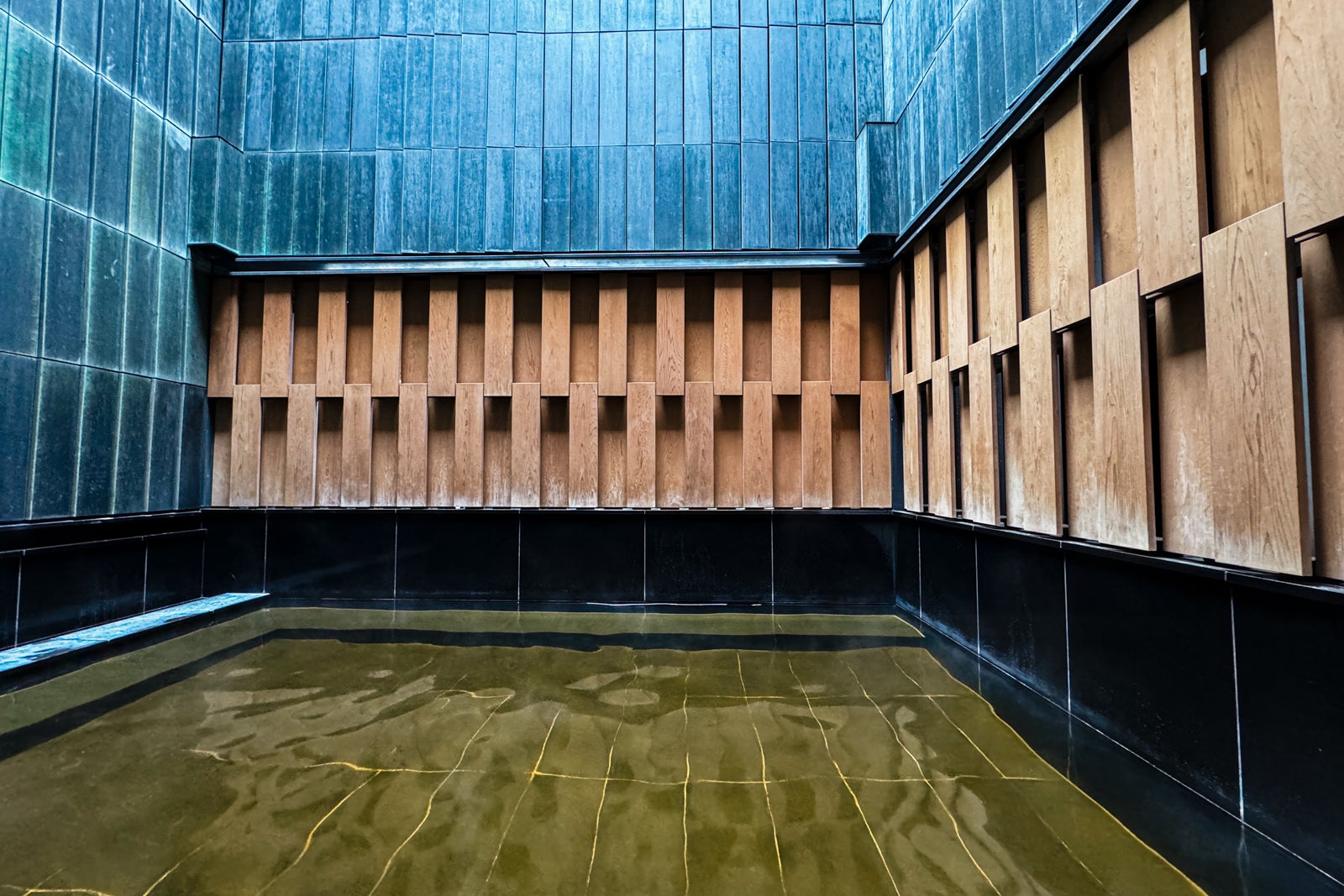
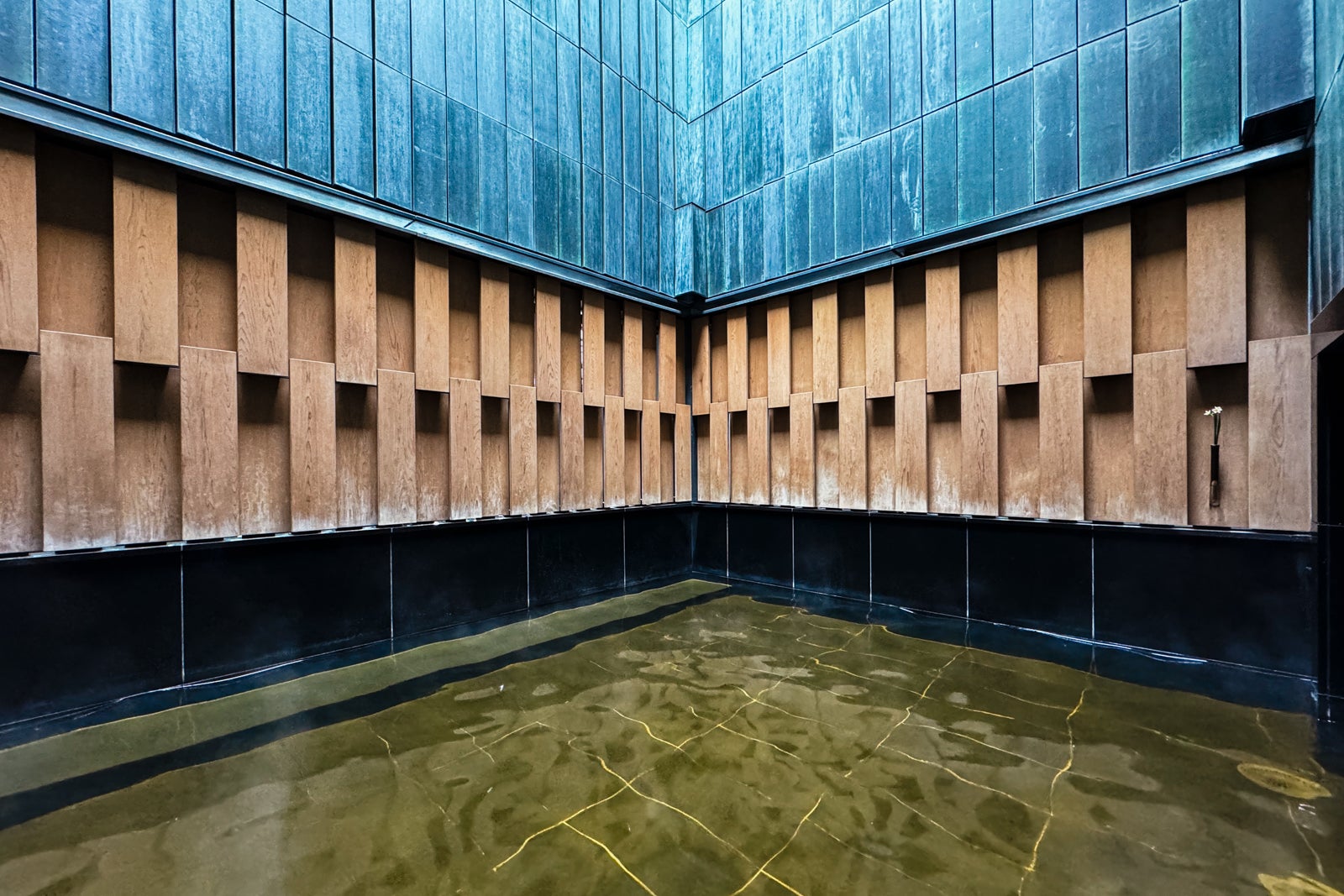
The onsen is open daily from 3 p.m. to 11:30 a.m. with a closure at midday to drain and refill the water. That’s when I was able to drop by for photos, which are otherwise prohibited.
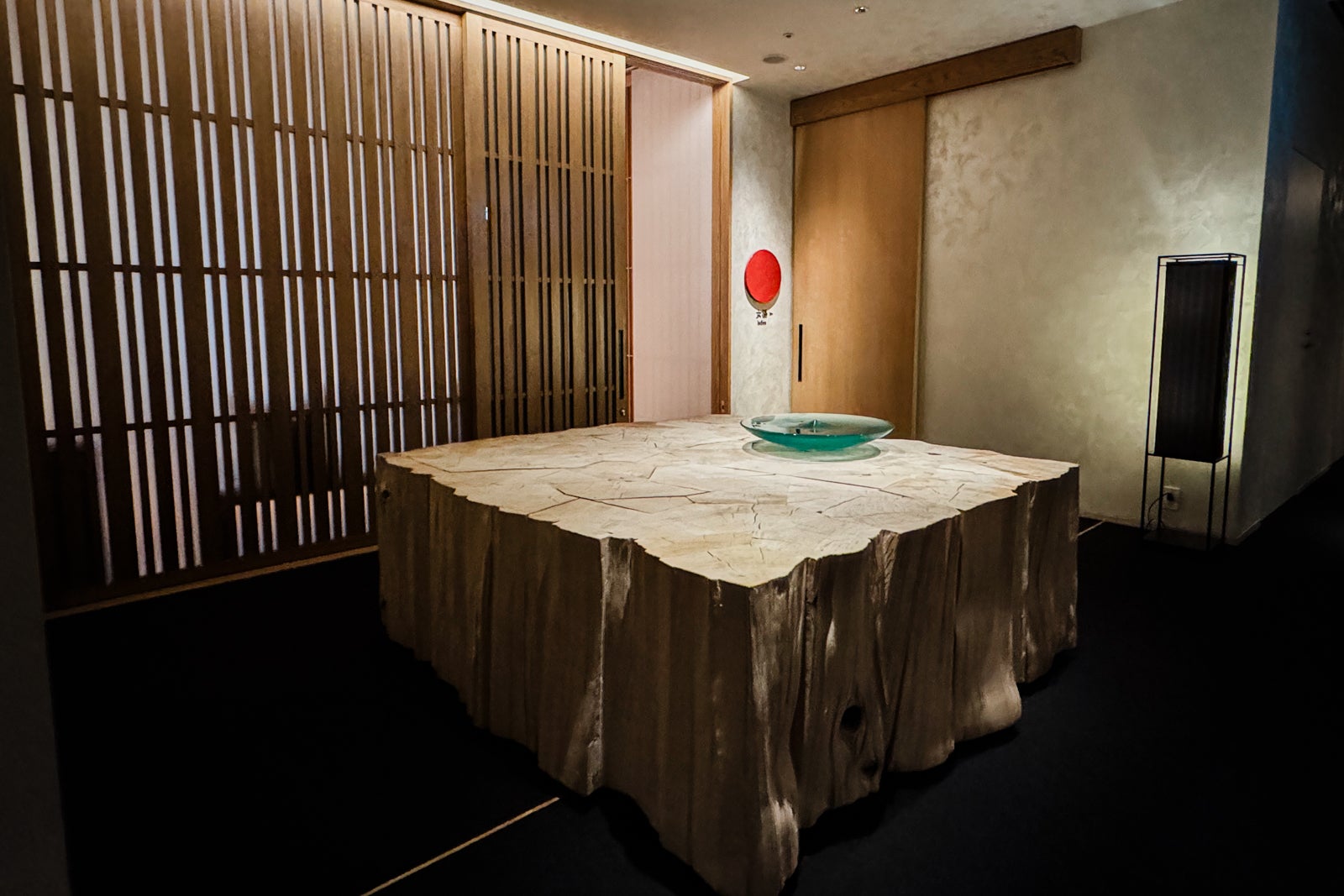
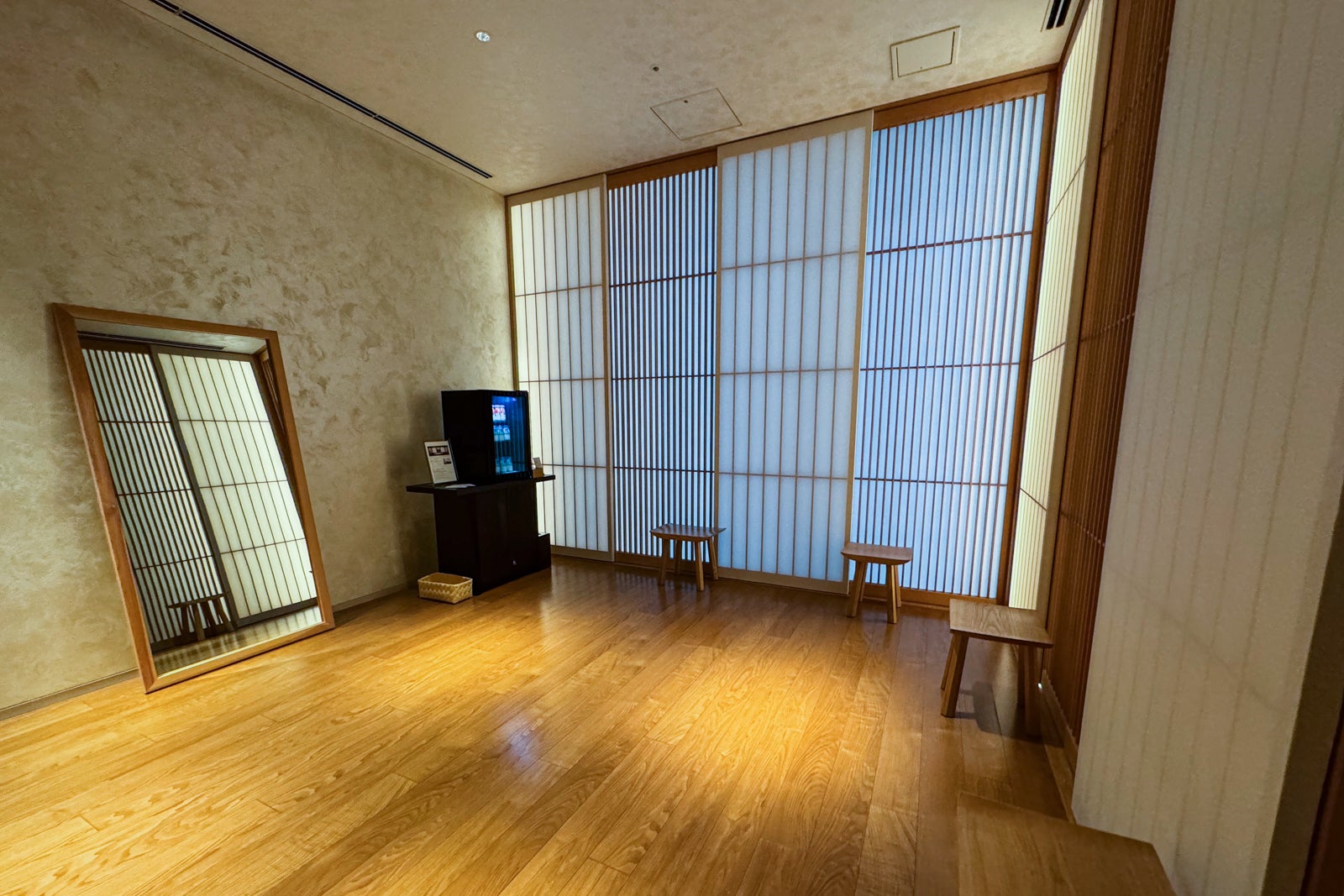
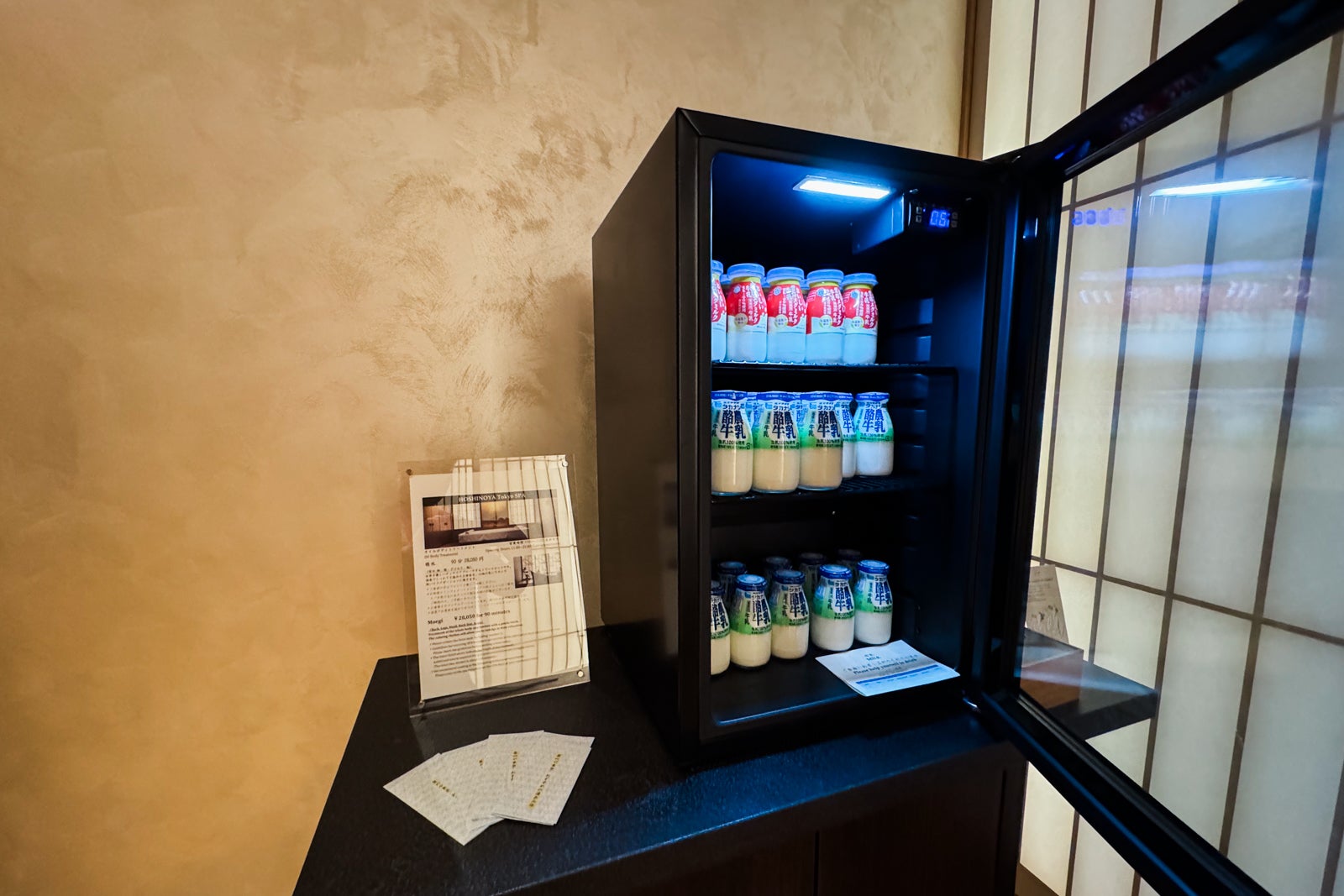
Stop for a fortifying glass of milk in the lounge area as you wait for your spa therapist to join you, then indulge in a signature treatment like the gentle Wakatake full-body massage performed with soothing wheat germ oil to relieve the tension from your joints ($137-$186 for 60-90 minutes).
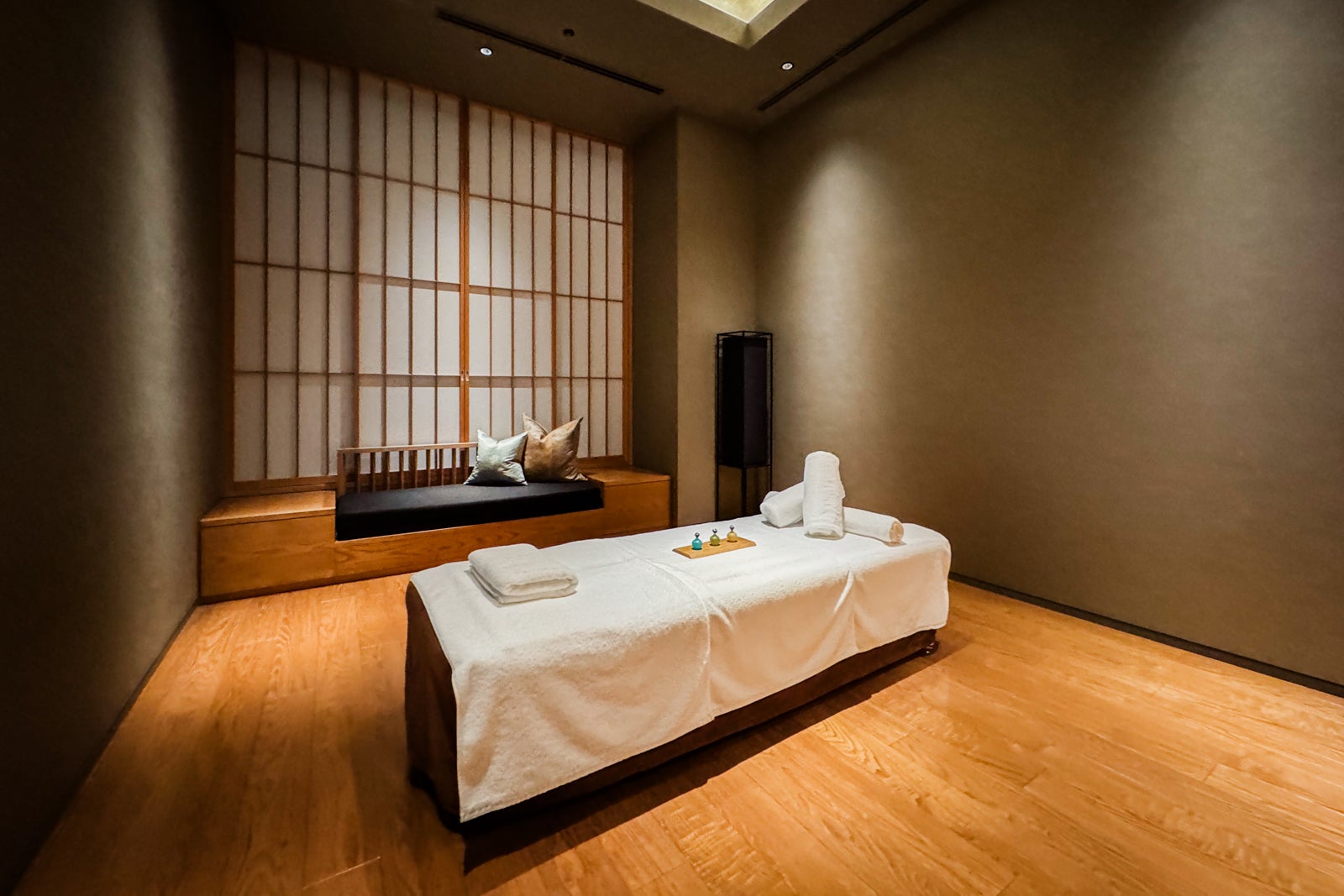
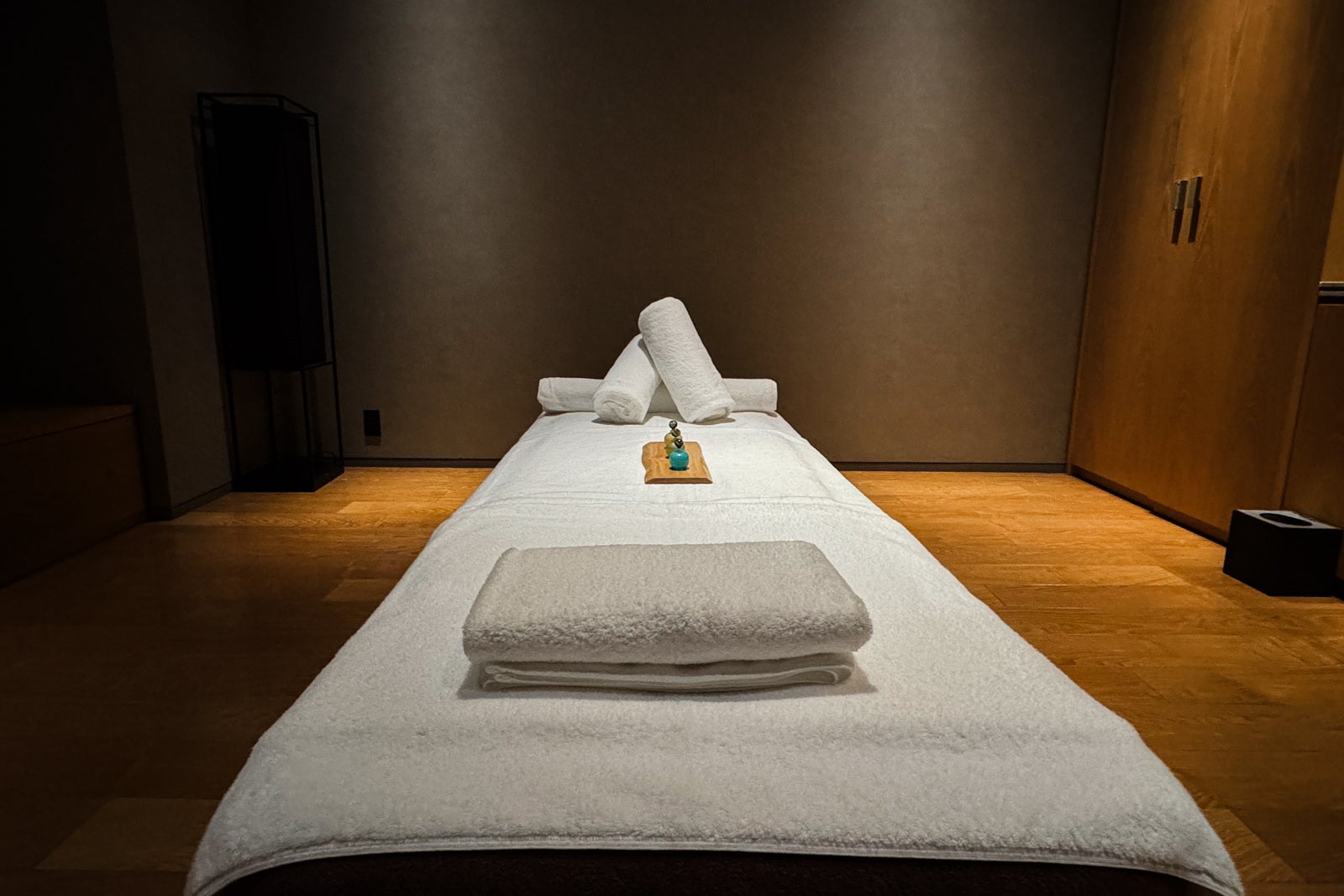
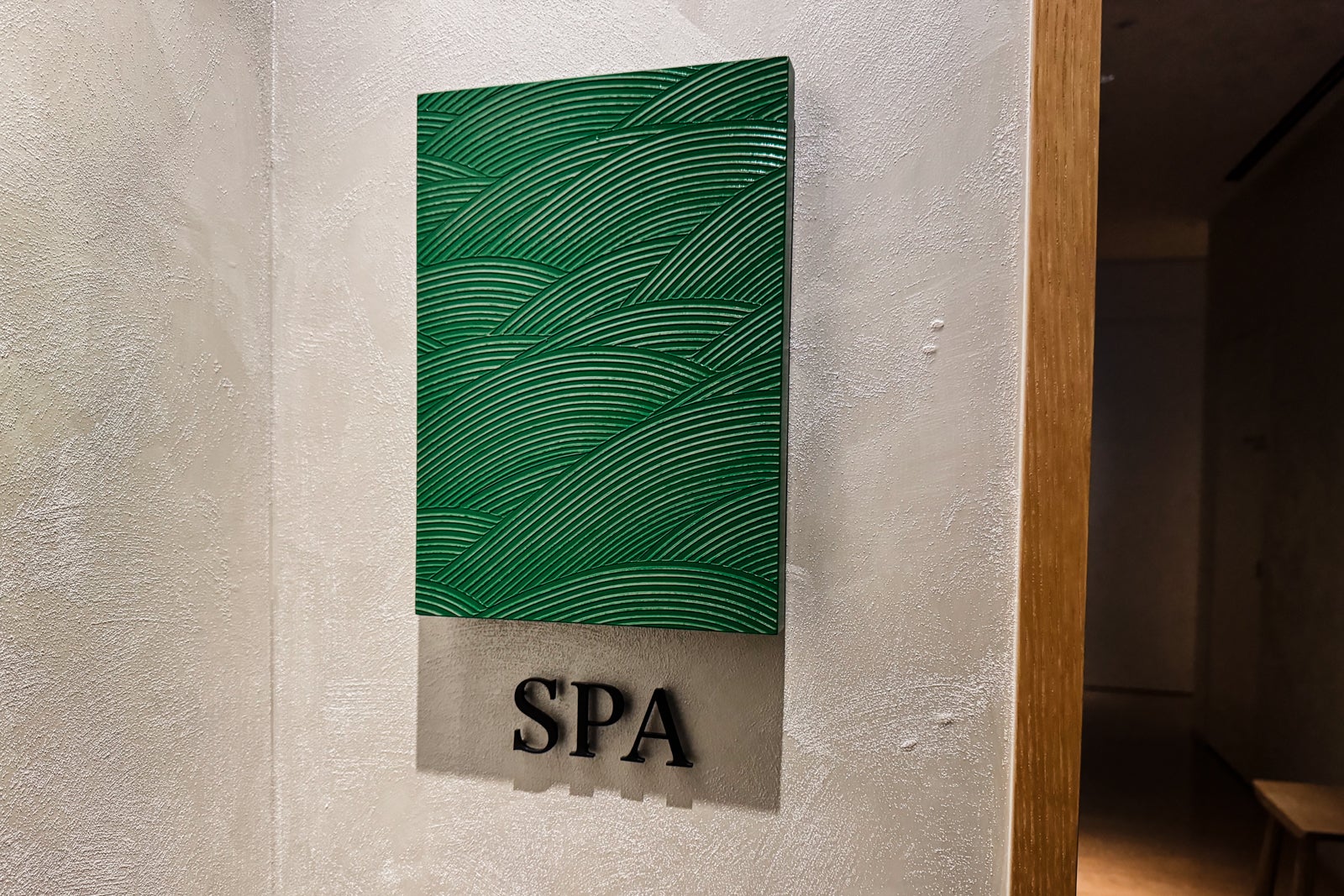
Out and about
Hoshinoya Tokyo is surrounded by a financial district, but it’s just a short stroll to the Imperial Palace and its grounds. You can take a 10-minute taxi or ride-hailing service to Ginza for some upscale shopping, or simply hop the subway for a 20-to-30-minute ride to either Shinjuku or Shibuya for a memorable night out.
The historic neighborhood of Aaskausa is just a 10-minute subway ride away, and a 30-minute combination of public transport and walking brings you to lively Ueno Park and the Tokyo National Museum.
ccessibilityAlthough there are steps in the hotel’s street-level entrance, guests with accessibility needs can access Hoshinoya Tokyo from its parking garage or the subway station via elevator. The public areas and guest elevators are likewise wheelchair-friendly (including reachable buttons for the guest room floors).

ERIC ROSEN/THE POINTS GUY
The hotel has two wheelchair-accessible rooms with automatic sliding doors and buttons to engage the locks. Their bathrooms and toilet areas have grab bars and extra space to accommodate wheelchairs. The lobby also has a unisex accessible bathroom.
While the onsen locker room and one of the showers are wheelchair-accessible, you must use stairs and a grab bar to enter the water since there is no chairlift.
Checking out
Whereas some of Tokyo’s other luxury hotels feel like cookie-cutter clones, where you could be anywhere from Chicago to Shanghai, Hoshinoya Tokyo is a welcome foil that puts Japanese arts, culture and comfort at the core of the experience.
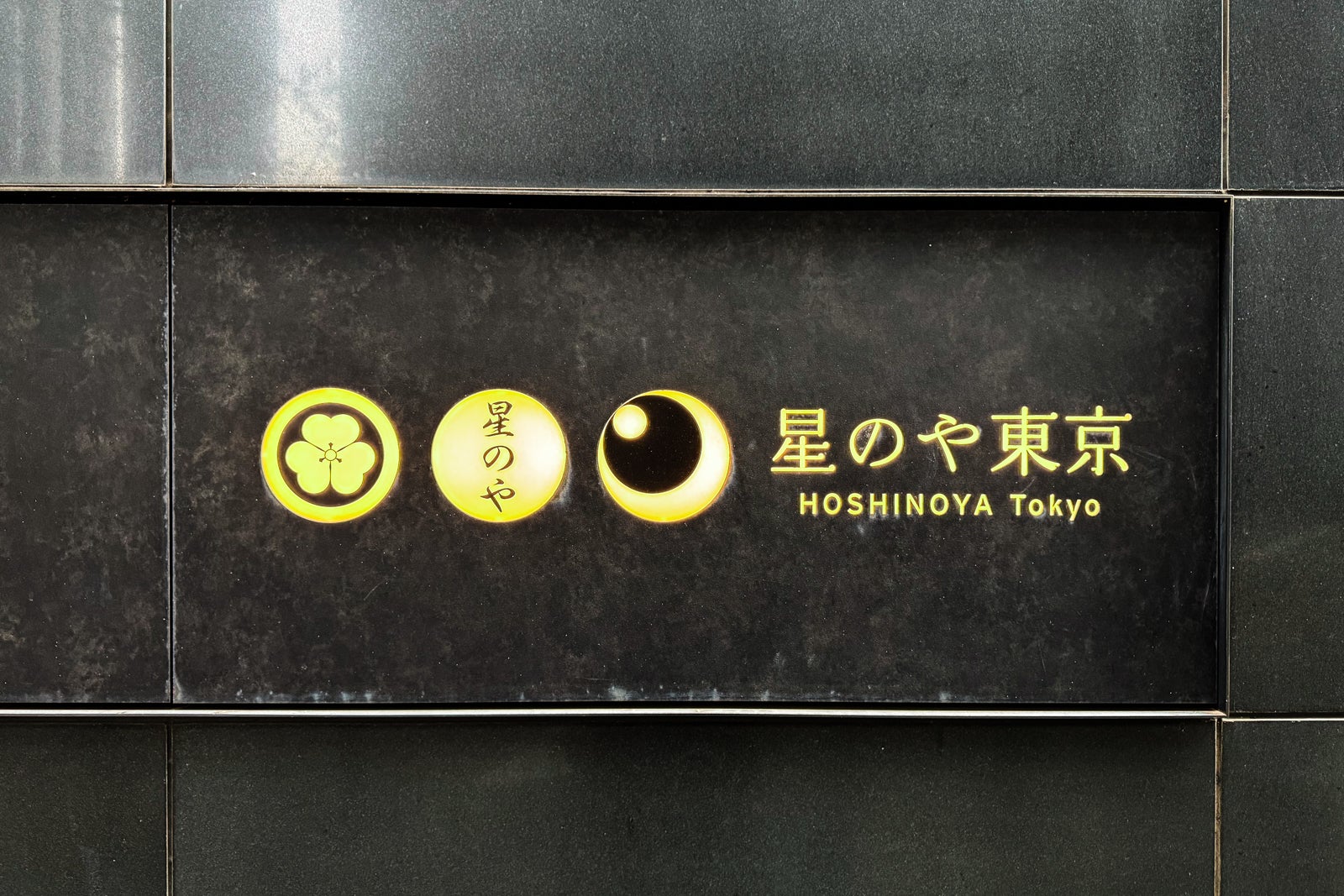
ERIC ROSEN/THE POINTS GUY
For visitors who want an authentic but extremely upscale stay in Japan’s ultra-modern capital, Hoshinoya Tokyo provides a just-right balance of traditional hospitality and contemporary convenience. It’s an excellent jumping-off point for further exploration in the country, or a great way to get a taste of Japanese culture on even brief stays in Tokyo.
Related reading:
The best hotels in TokyoThe best hotel credit cardsGet free breakfast, upgrades and more with the Amex Fine Hotels + Resorts programThe best hotel rewards programs in the worldThe best premium credit cards: A side-by-side comparisonTitle: Hoshinoya Tokyo hotel review: Traditional Japanese hospitality in the big city
Sourced From: thepointsguy.com/reviews/hoshinoya-tokyo-review/
Published Date: Mon, 11 Mar 2024 15:00:46 +0000
No comments:
Post a Comment